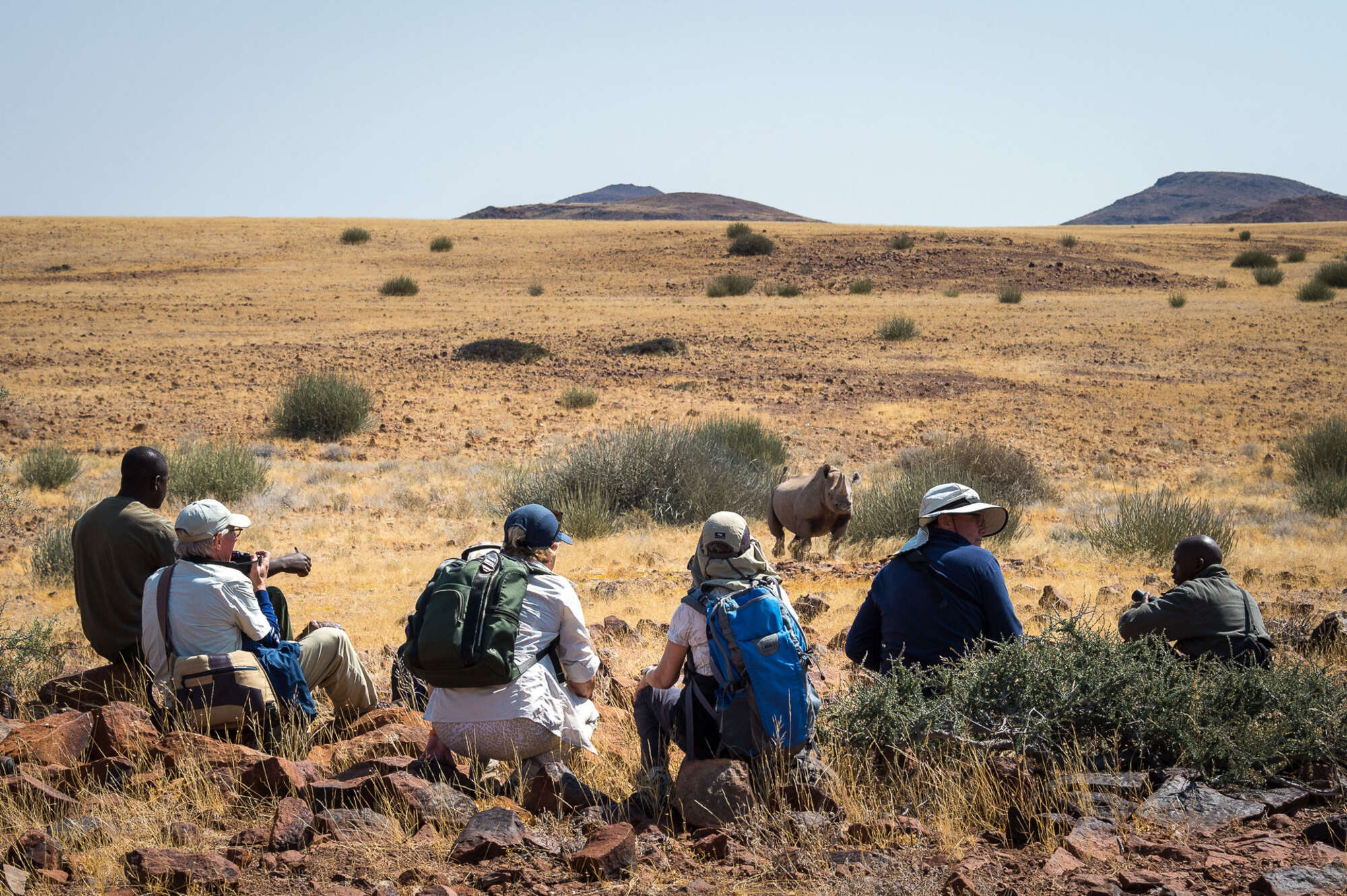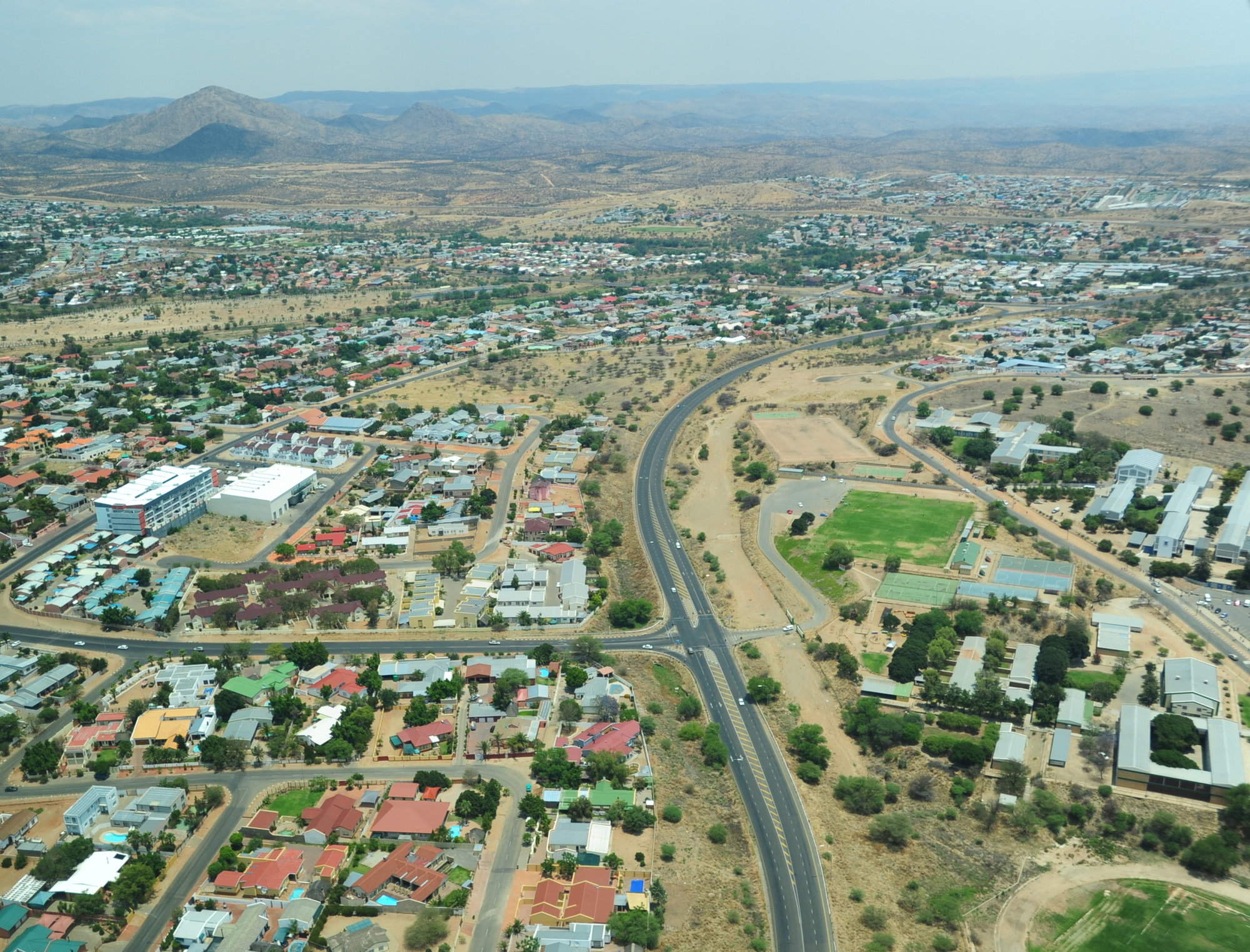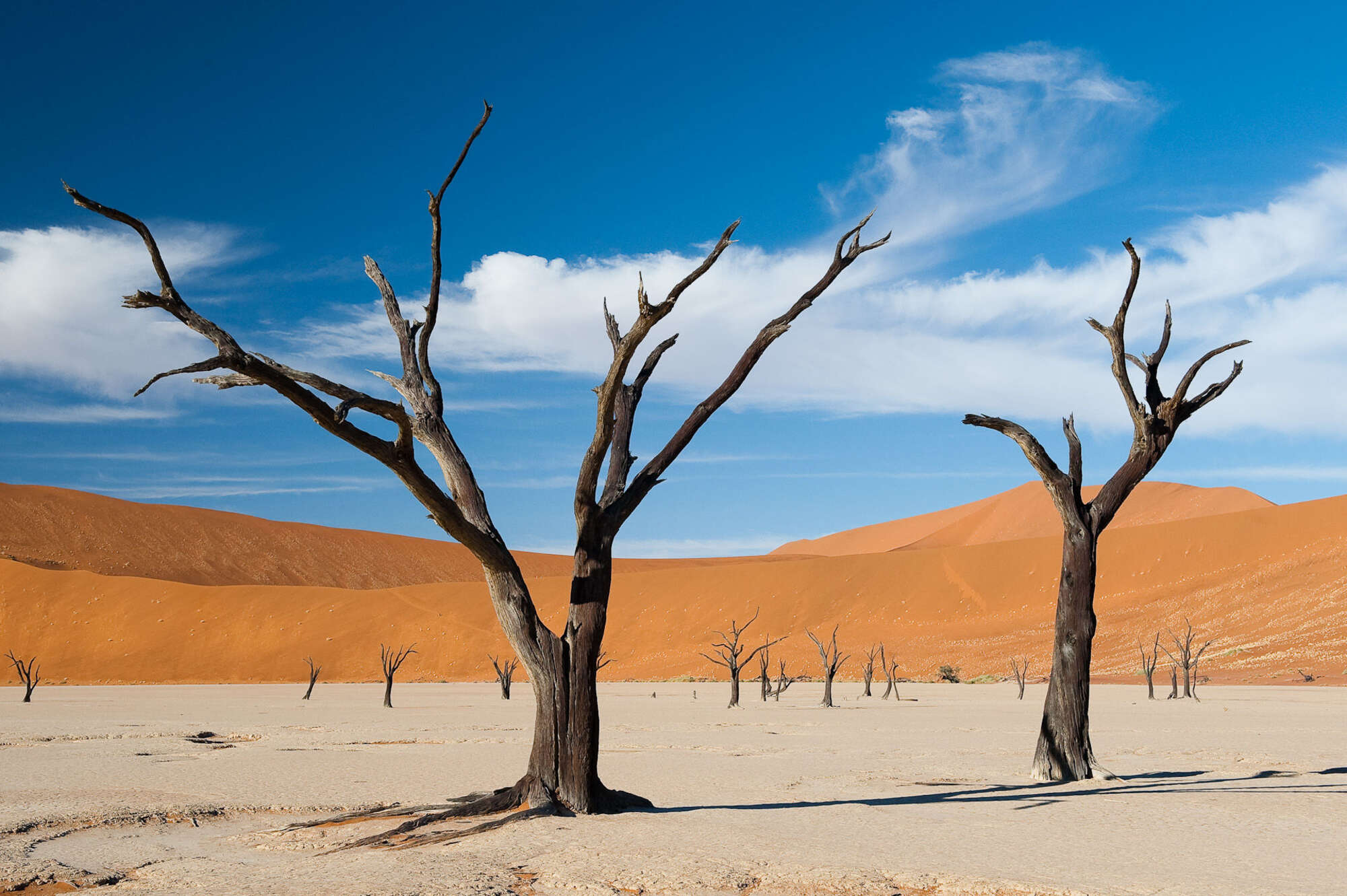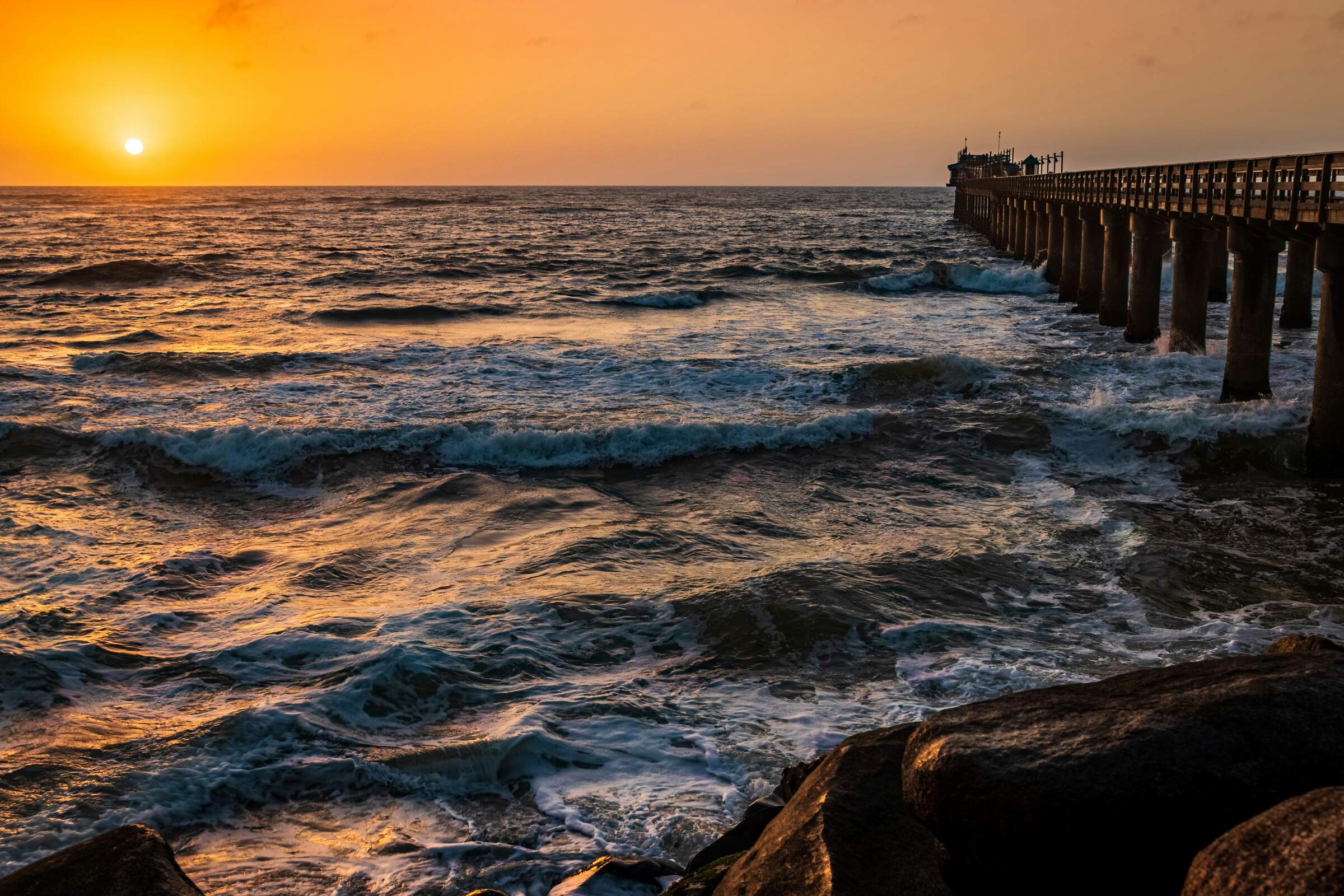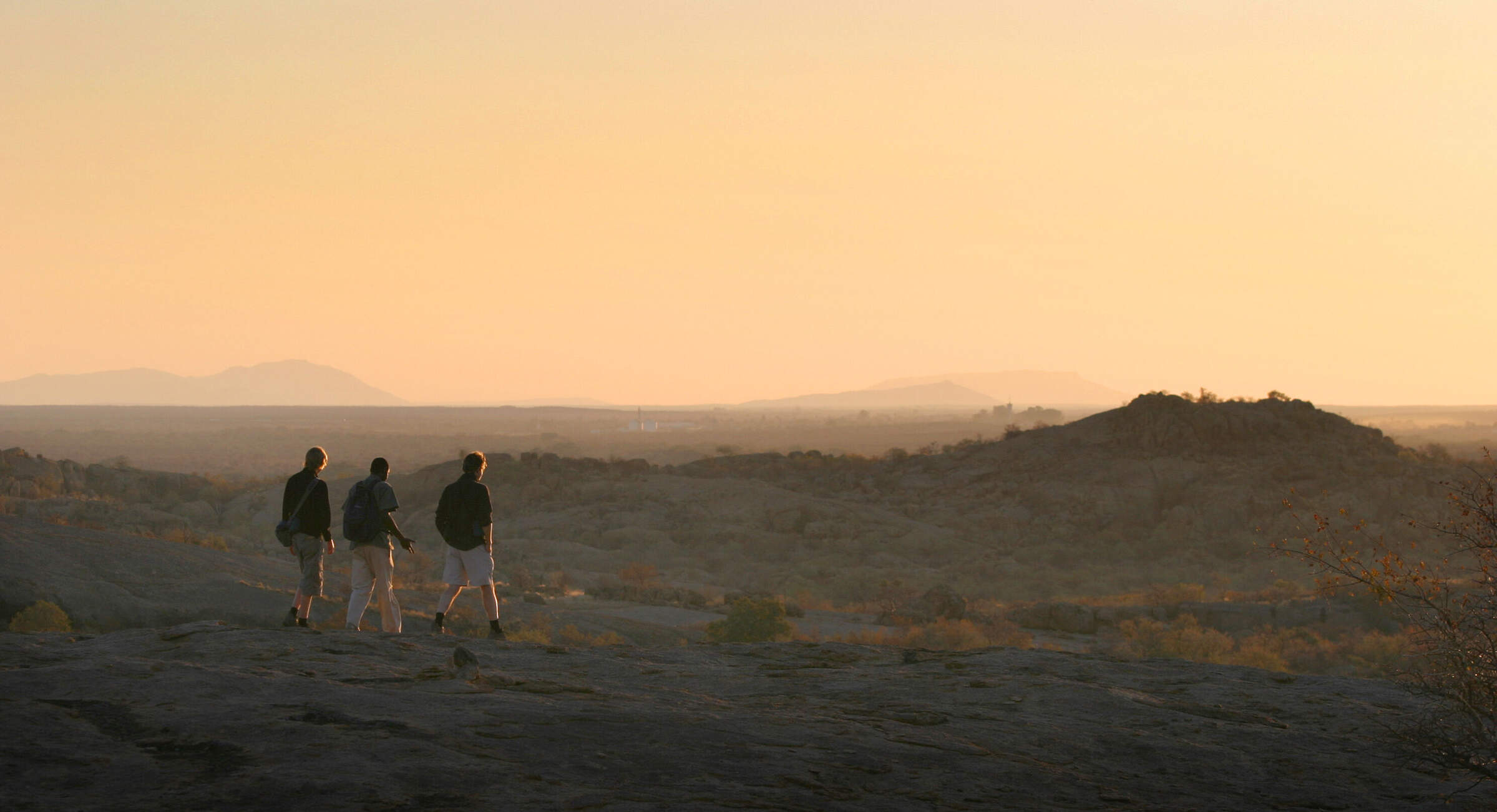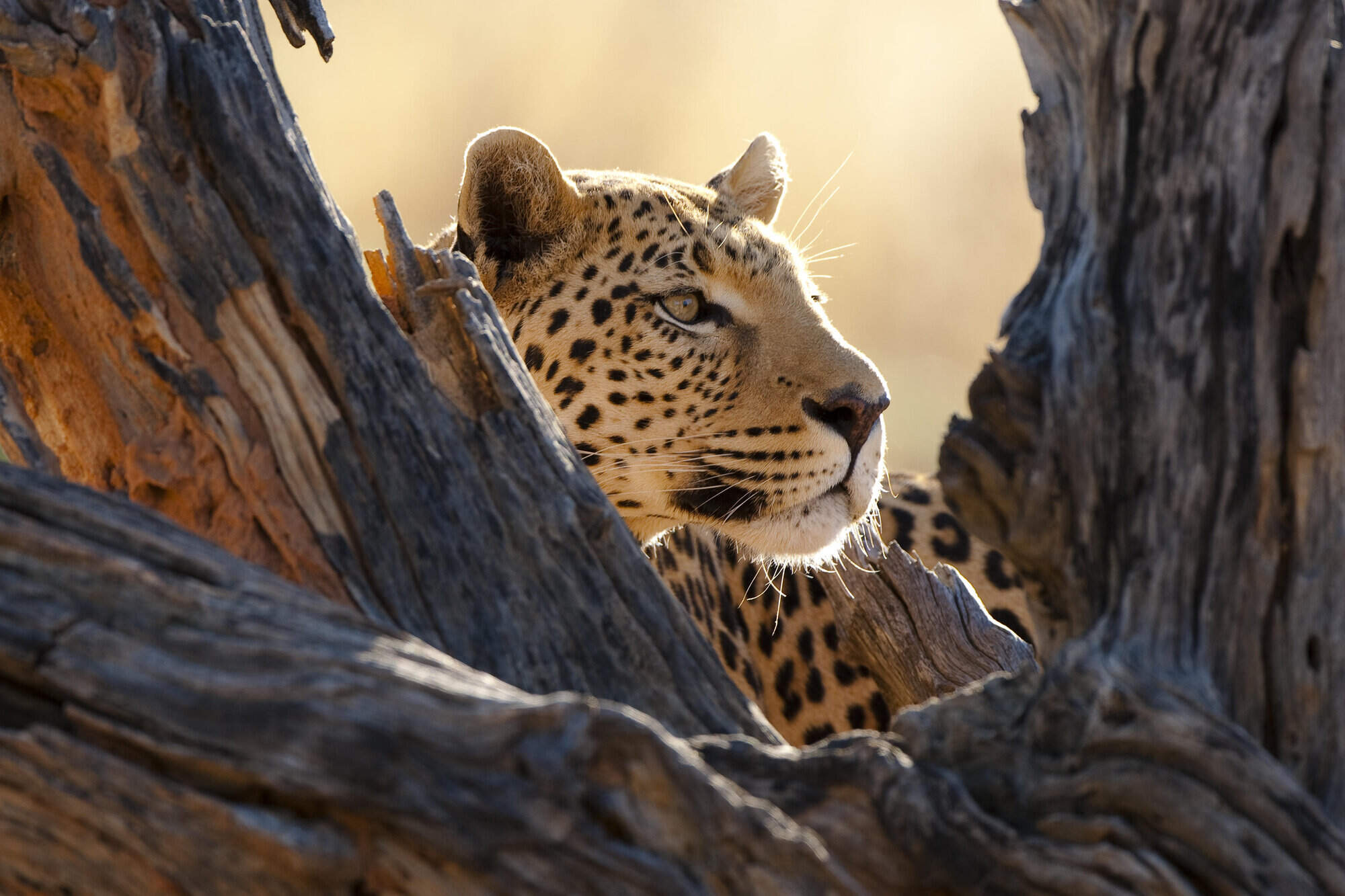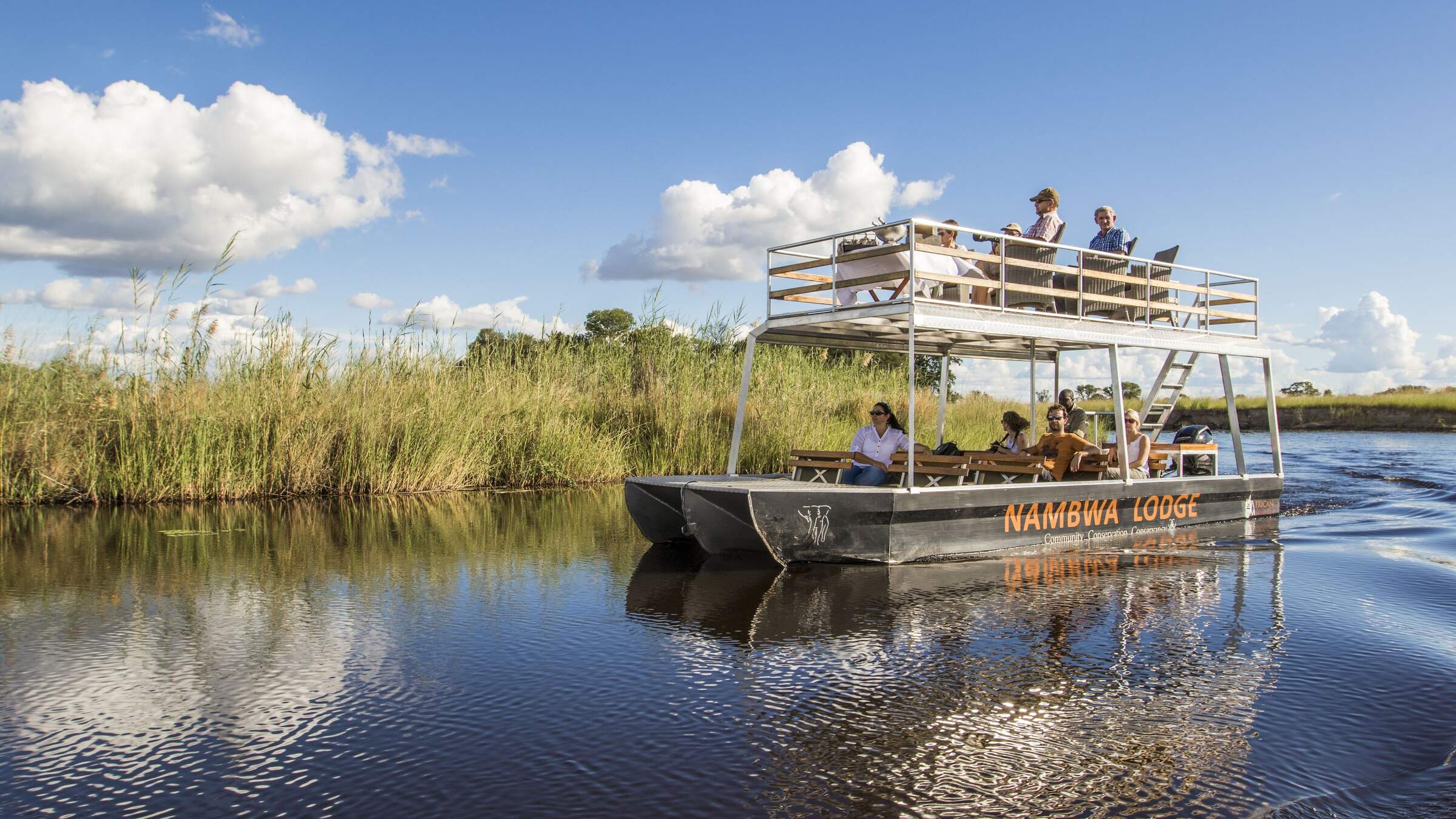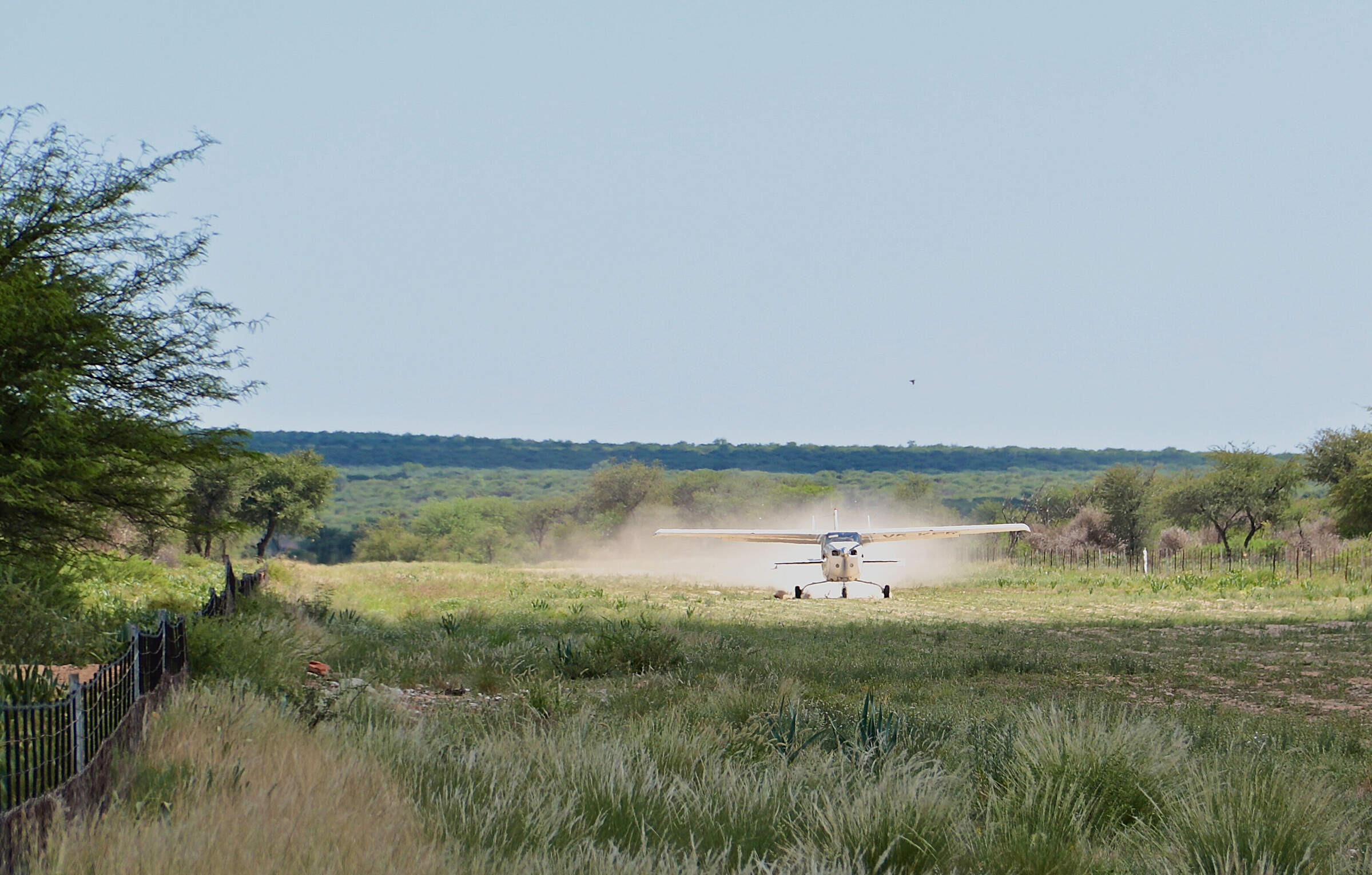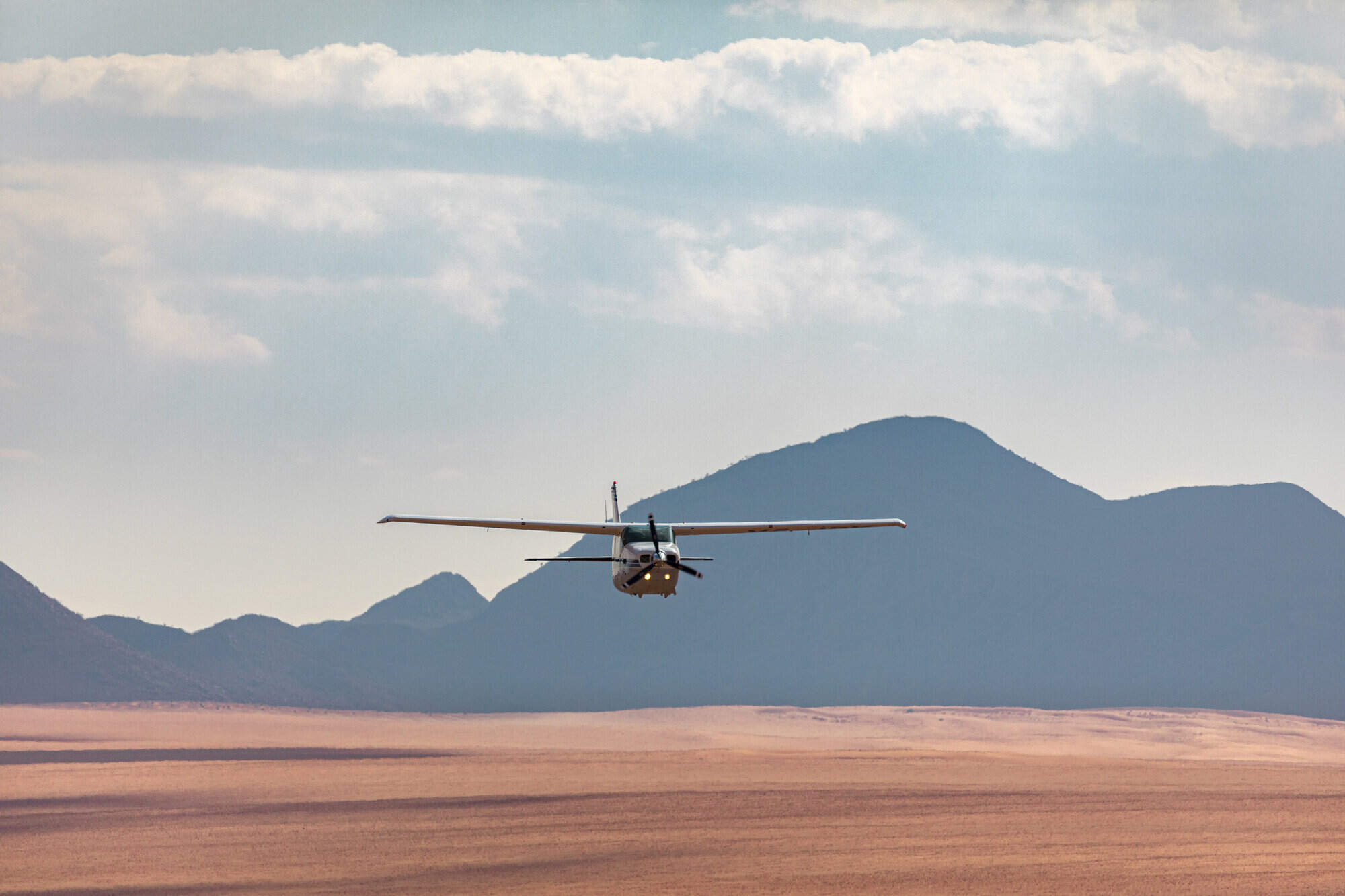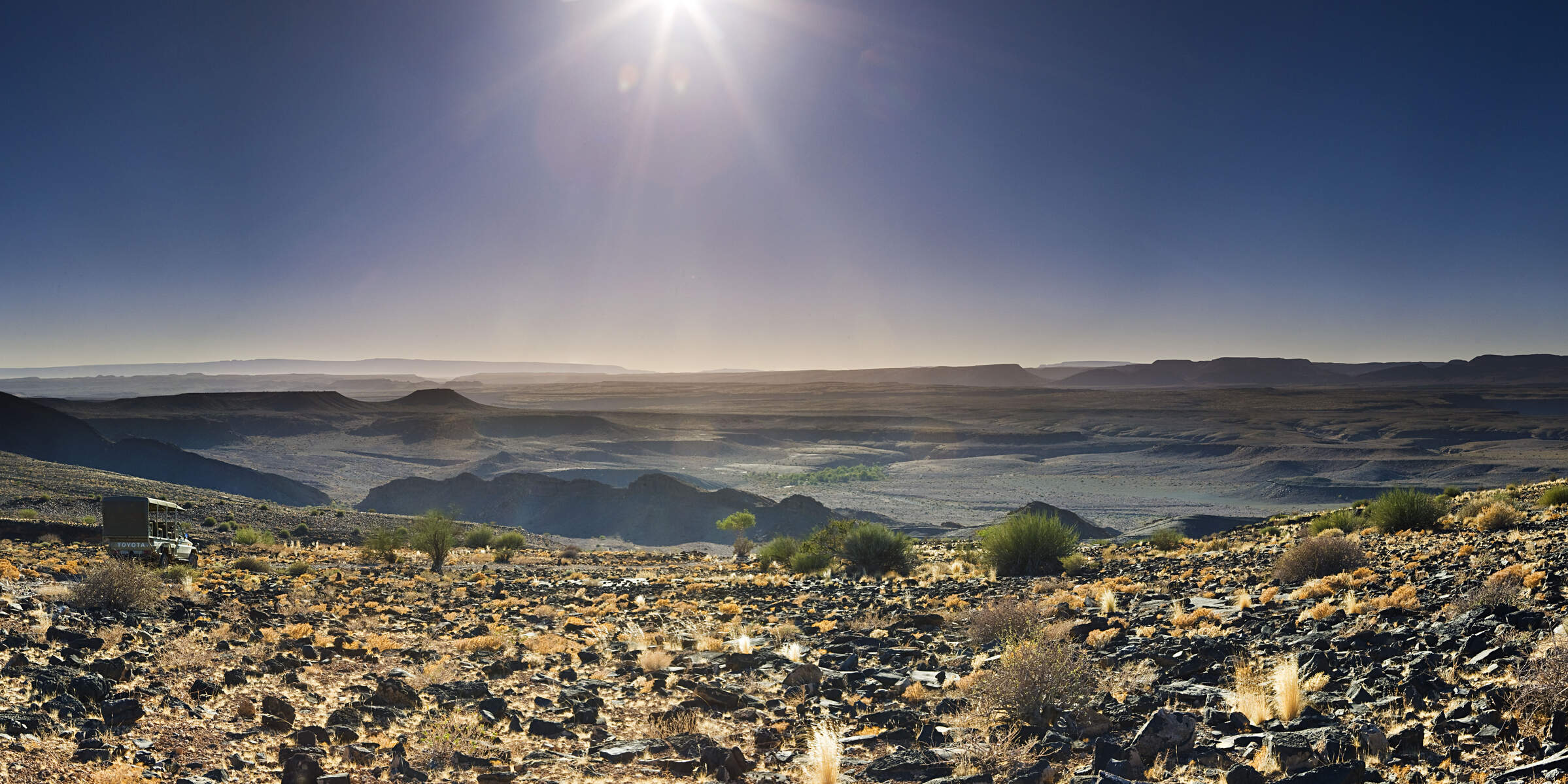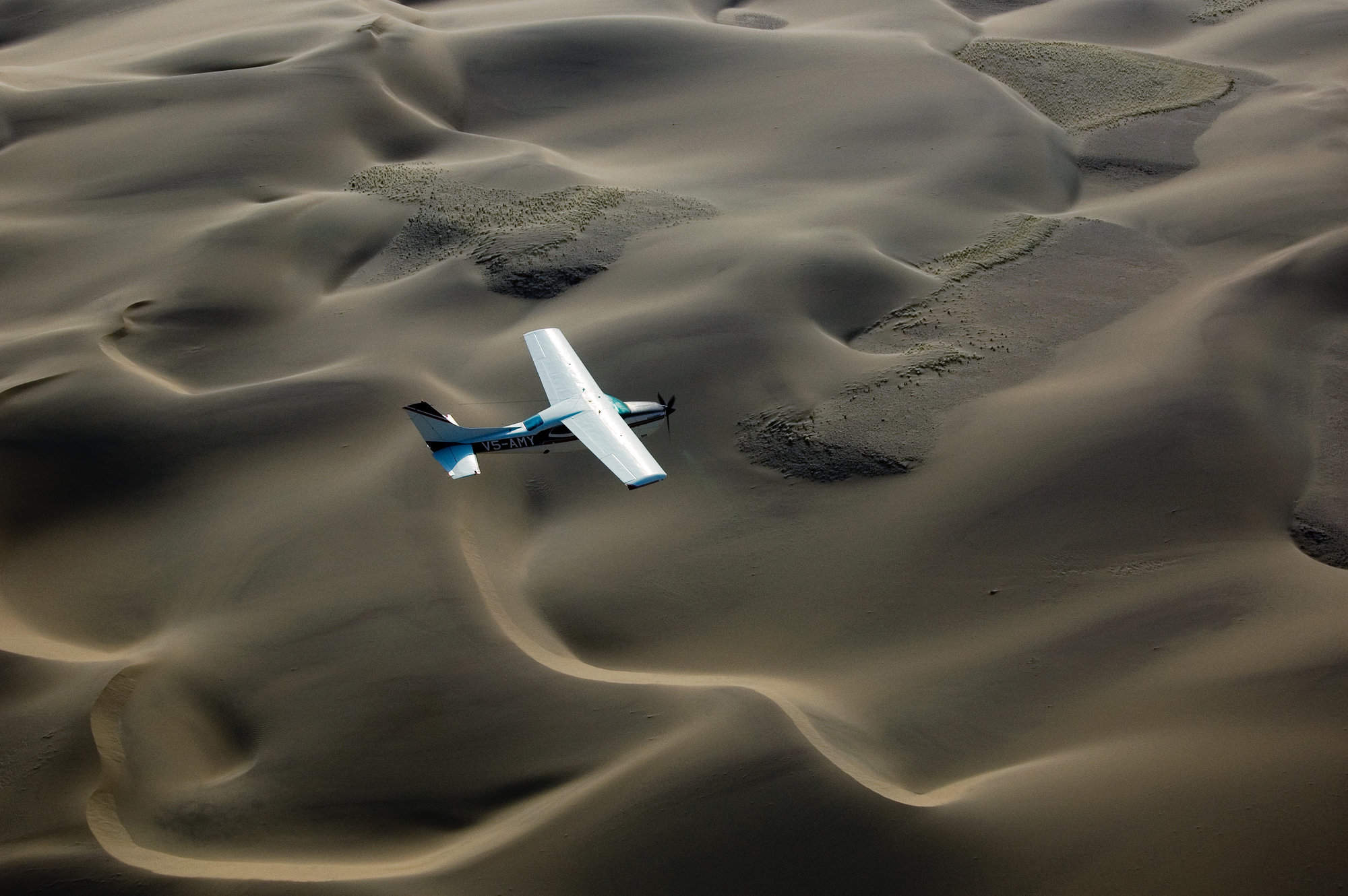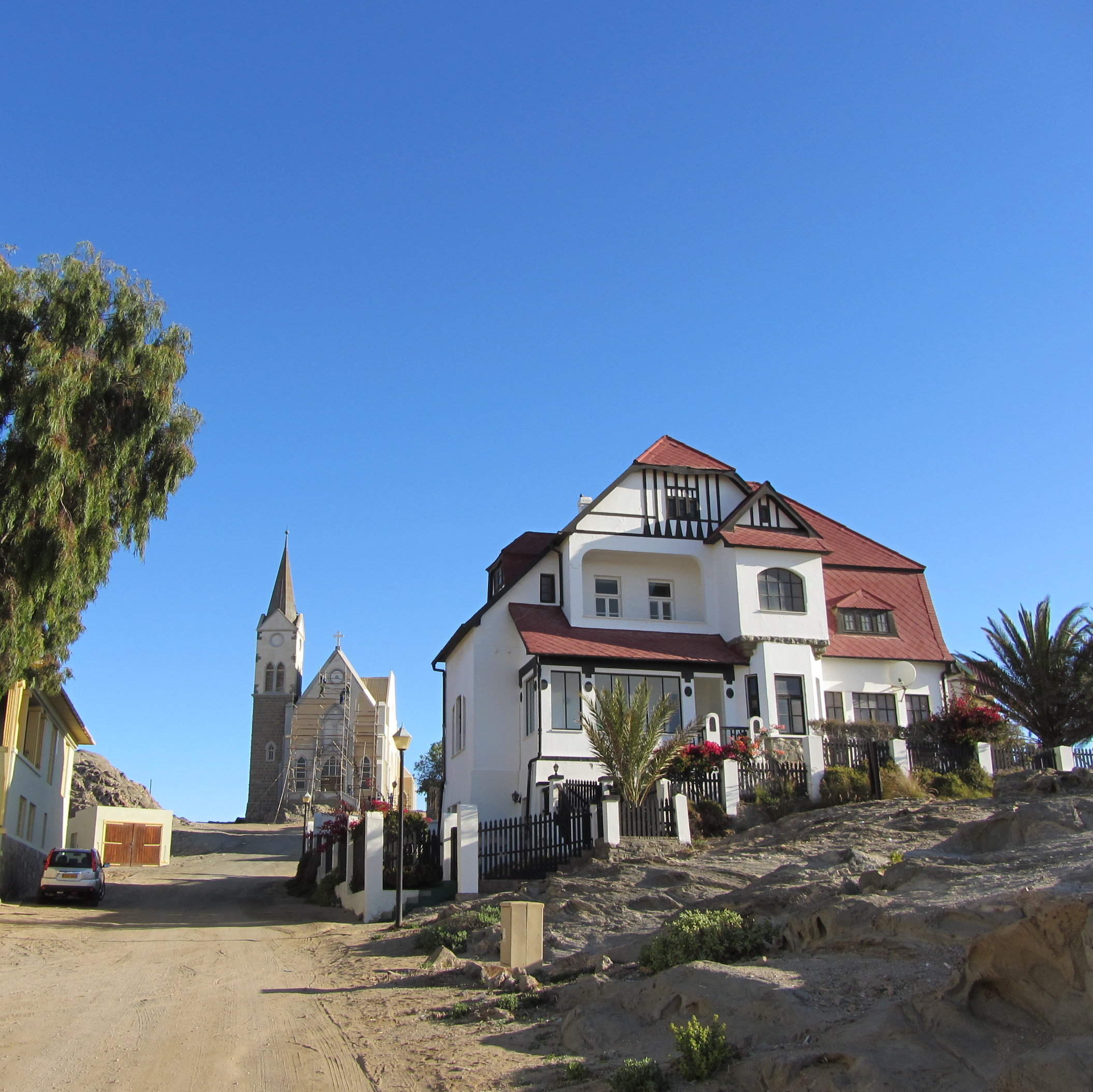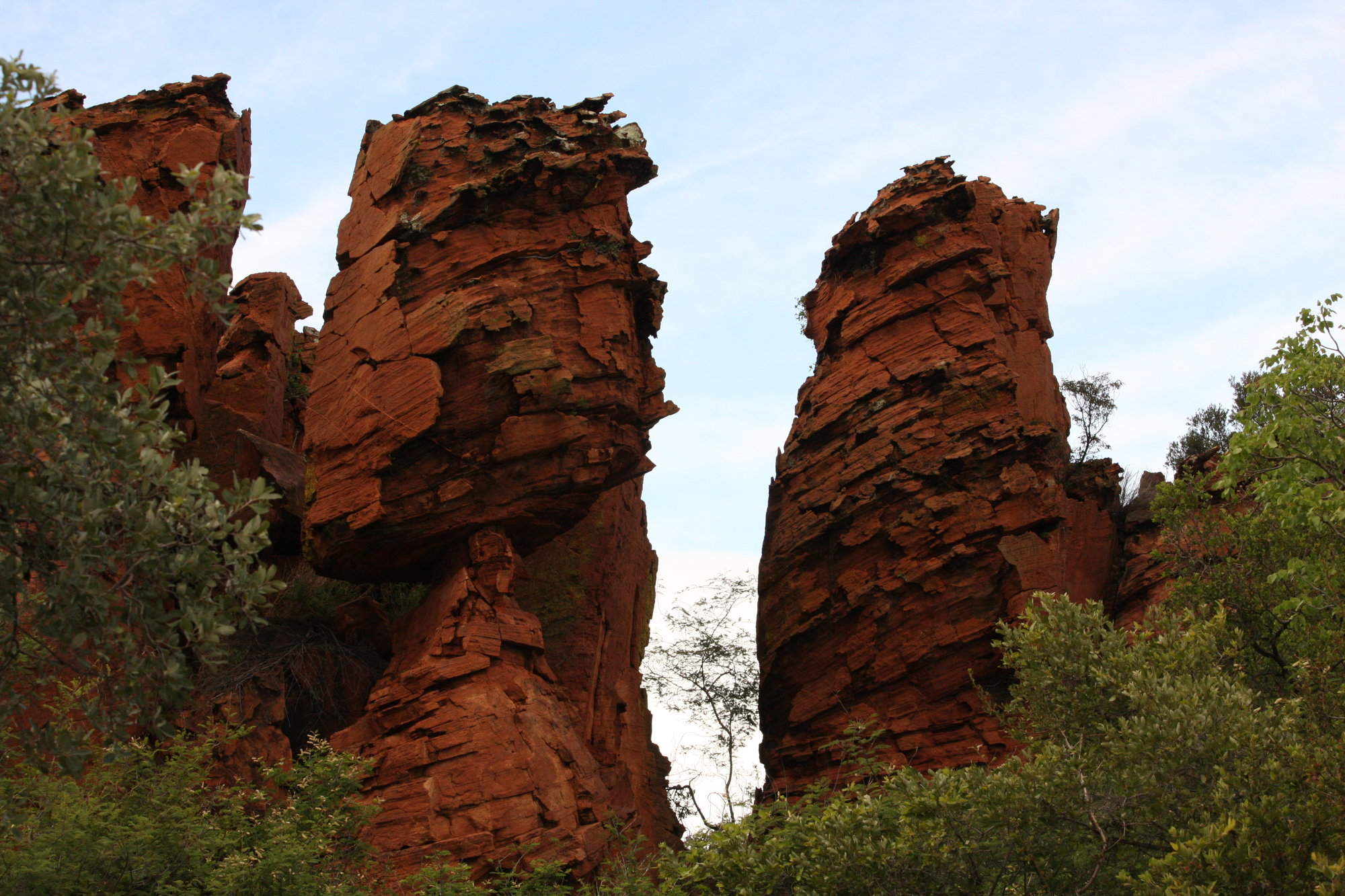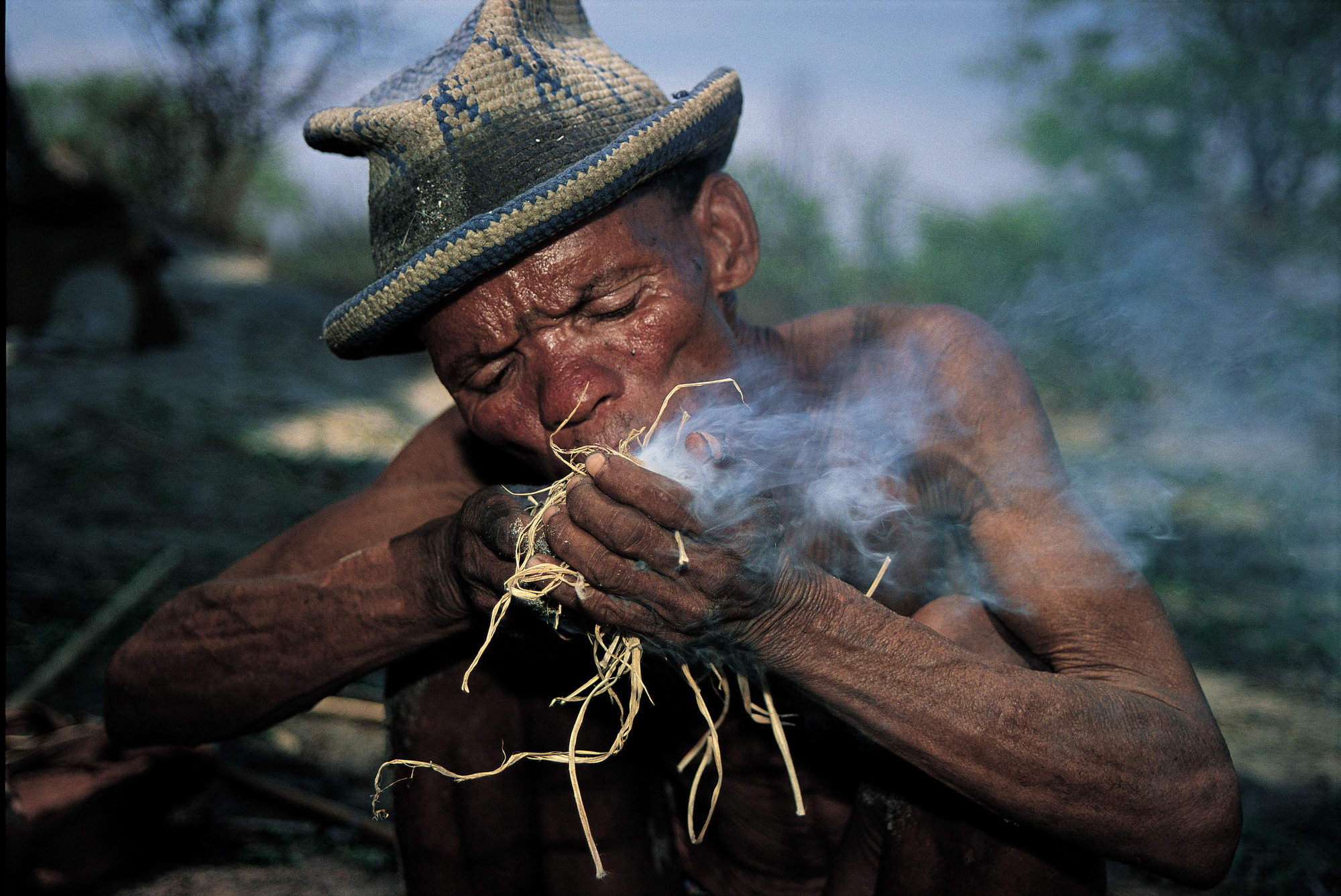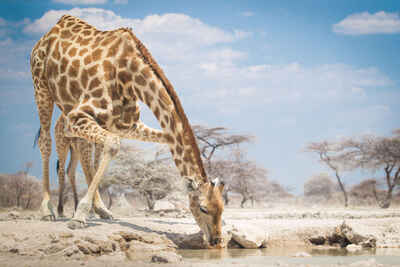
waterholes are worth multiple visits.
half and full day game drives offered.
Burchell's zebra and red hartebeest aplenty
get up close on guided activities.
great photography at eye level
Etosha is home to four of the big 5
nature walks with experienced guide
track wildlife afoot with an experienced ranger.
black and white rhino are found in Etosha
a bush walk in the cool of the day
sundowners in the soft twilight
Etosha National Park
Etosha National Park
Shimmering in the heat, the vast white space of Etosha Pan radiates an other-worldly impression that throws wildlife into sharp relief.
Giraffes in near silhouette pace around the edge; after good rains, startlingly pink flamingos seem to hover above the water. It’s an extraordinary sight.
For months on end the silvery pan itself is brittle dry, but the surrounding grasslands are a fertile feeding ground for huge herds of springbok, particularly striking as they “pronk” high in the air. Zebra, too, are numerous, along with kudu, oryx, blue wildebeest and elephant, while for the rare black-faced impala, Etosha is home.
Never far behind are the predators. Lion often use the roads as their thoroughfares, sharing them with visitors, while open grasslands are the domain of cheetah; wooded areas of leopard. Ostriches, secretary birds and kori bustards stalk the plains; high above, birds of prey are on constant look out.
As the year wears on, so the land dries up and the wildlife-rich waterholes that line the southern shores of the pan prove a magnet for increasingly parched game. Linked by a network of easily navigated roads, these waterholes are the perfect vantage point for visitors, too. Select your spot, park up and watch the ever-changing parade of animals coming to drink, or – for elephants – to bathe and have a good splash around.
Stay within the park, at Okaukuejo or Halali, to spend an evening relaxing outside. The big attractions are waterholes, where a pantheon of animals venture into the circle of light to strut and fret their time around this floodlit stage. Elephants, lions and leopards are regulars – but black rhino dominate, often giving visitors an enthralling view of their social interactions.
With its excellent road infrastructure, Etosha was designed for the self-driver, but exploring on a game drive gives the added bonus of a knowledgeable guide. By no means essential, but sometimes desirable.

Best safaris in Etosha National Park
Namibia’s top wildlife destination, Etosha National Park is a must for safarigoers in this most varied of countries. Combine your adventure with visits to Damaraland, the Namib-Naukluft and the coastal towns of Swakopmund and Walvis Bay for a truly diverse experience.
Popular holidays in Etosha include the Caracal Self-drive Safari, Pygmy Mouse Self-drive Safari, Dune Lark Fly & Drive Safari, Cape Fox Guided Safari and Chongololo Self-Drive Safari.
As all our trips are tailormade, contact us and we will help you to create a safari that fits around you.
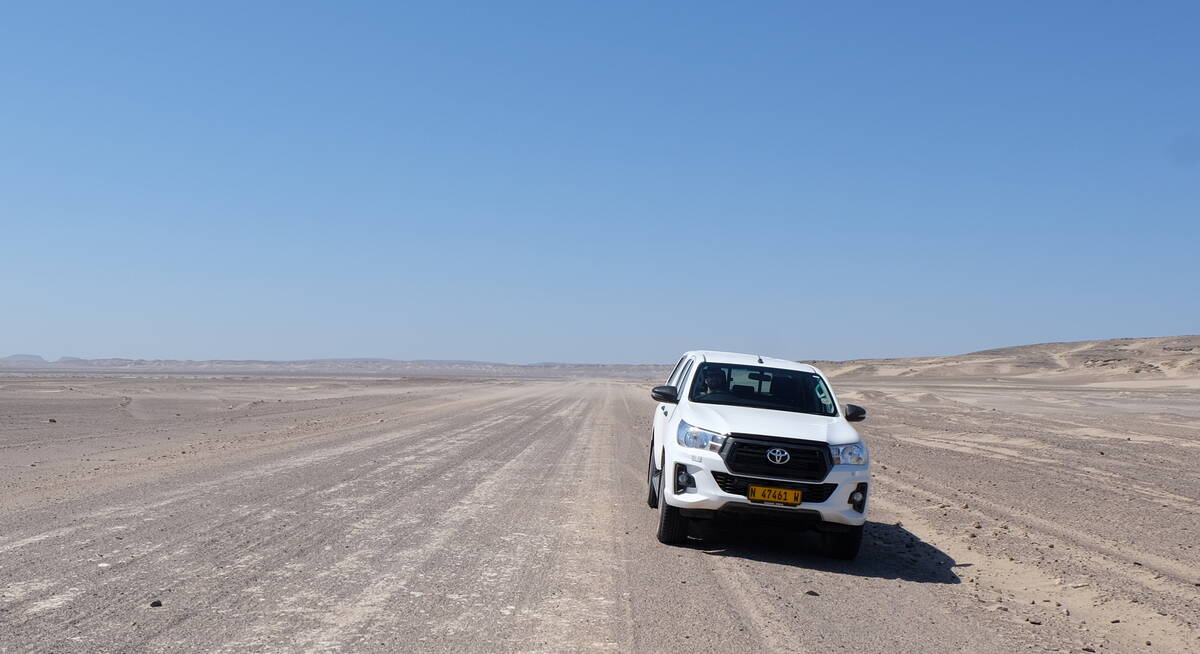
Caracal Self-drive Safari
14 days • 8 locations
WINDHOEK AIRPORT TO WINDHOEK AIRPORT
The quintessential Namibian self-drive adventure exploring the highlights from Sossusvlei and the Namib Desert to Damaraland’s wilderness and a safari in Etosha. A great mix of accommodation and excellent value.
US$3,310 - US$4,150 per person
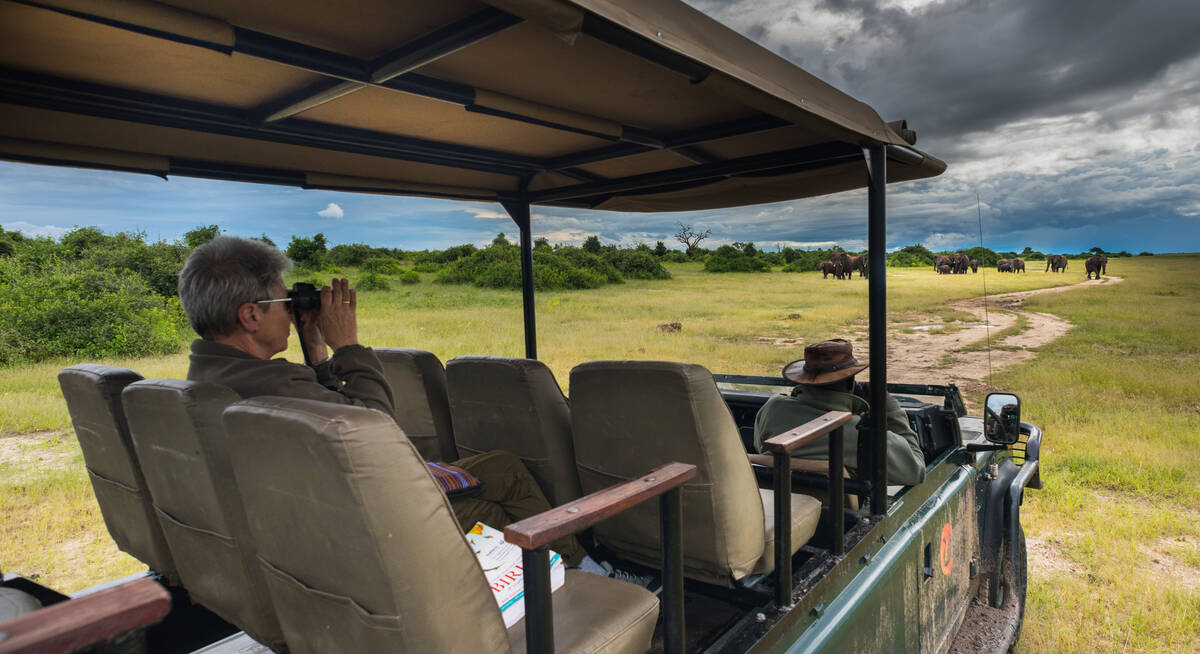
Pygmy Mouse Self-drive Safari
18 days • 10 locations
WINDHOEK AIRPORT TO VICTORIA FALLS AIRPORT
A truly epic southern African self-drive safari adventure from Namibia’s mountains and deserts, along the lush Caprivi Strip to Botswana and Victoria Falls in Zimbabwe, staying at luxury lodges throughout.
US$8,730 - US$10,430 per person
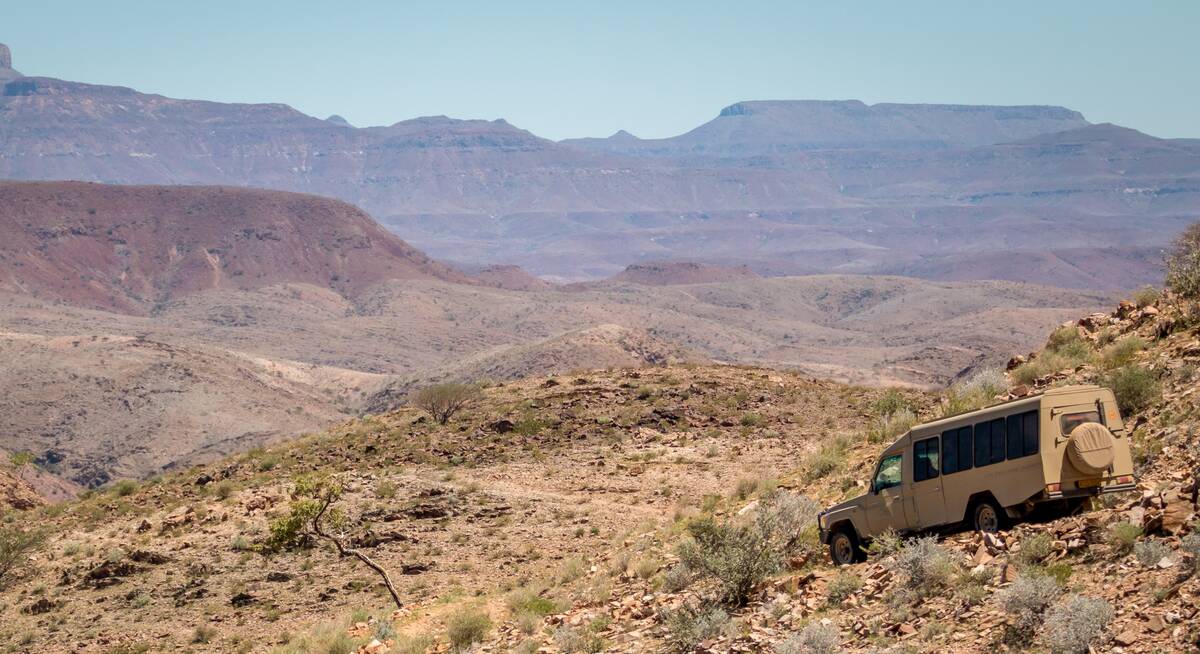
Cape Fox Guided Safari
13 days • 7 locations
WINDHOEK AIRPORT TO WINDHOEK AIRPORT
A classic clockwise circuit around Namibia’s northern highlights with a private guide and vehicle. We can’t think of a better way to see more in this timeframe.
US$11,520 - US$13,410 per person
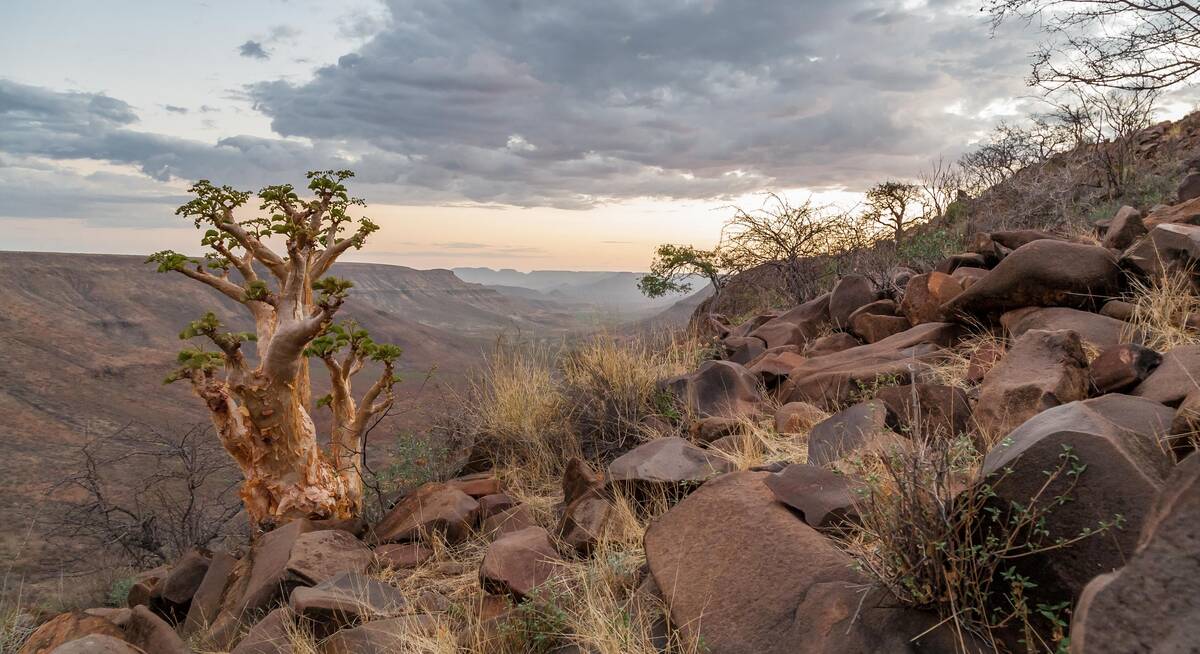
Dune Lark Fly & Drive Safari
14 days • 8 locations
WINDHOEK AIRPORT TO WINDHOEK AIRPORT
A combination fly-in self-drive exploration of Namibia, with quick, easy and scenic flights in and out of Sossusvlei before a classic road trip adventure of the country’s rugged north.
US$5,390 - US$5,790 per person
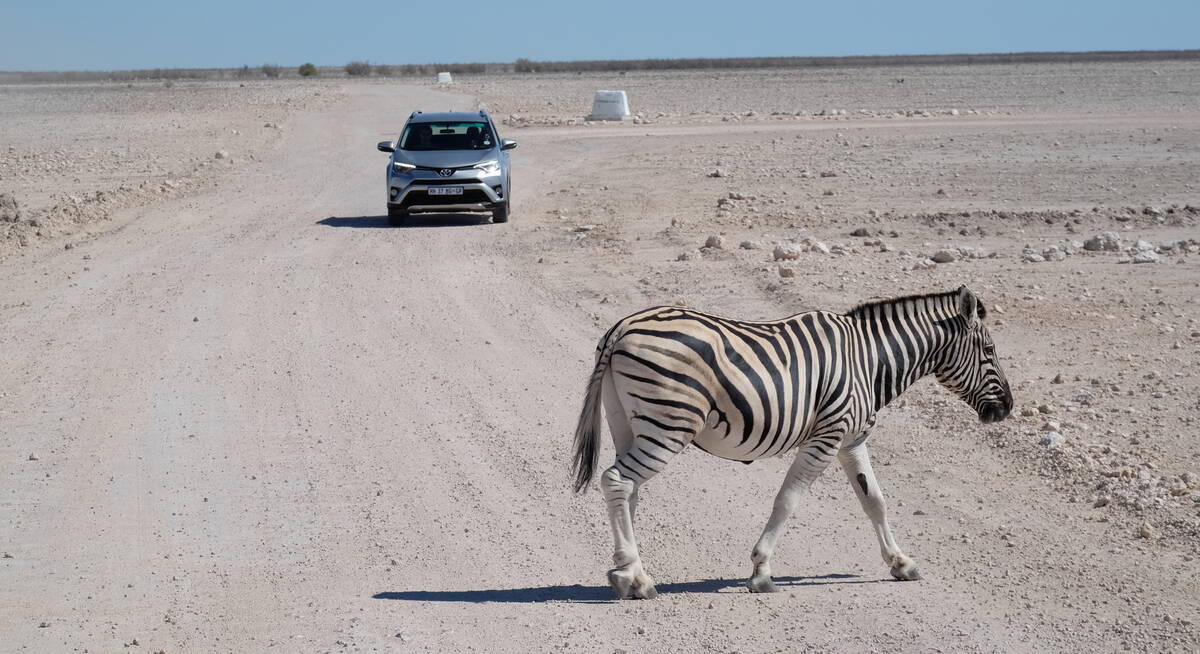
Namaqua Chameleon Self-drive
12 days • 7 locations
WINDHOEK AIRPORT TO WINDHOEK AIRPORT
A classic 12-night self-drive adventure around the highlights of eastern and northern Namibia taking in Sossusvlei, Swakopmund, Damaraland, Etosha and a final stop at Okonjima. Comfortable lodges and great value.
US$4,080 - US$5,160 per person
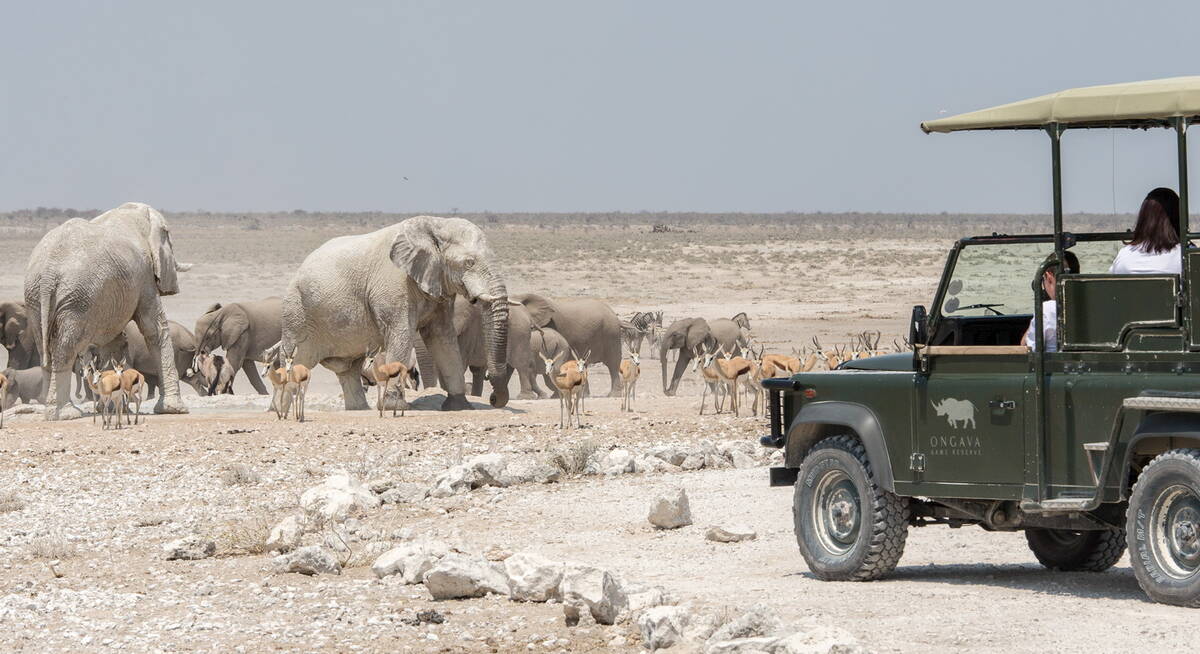
Brown Hyena Self-drive
14 days • 8 locations
WINDHOEK AIRPORT TO WINDHOEK AIRPORT
The perfect trip for those who want to mix the adventure and freedom of a self-drive with some of our favourite luxury camps in Namibia and a great mix of activities.
US$9,020 - US$9,940 per person
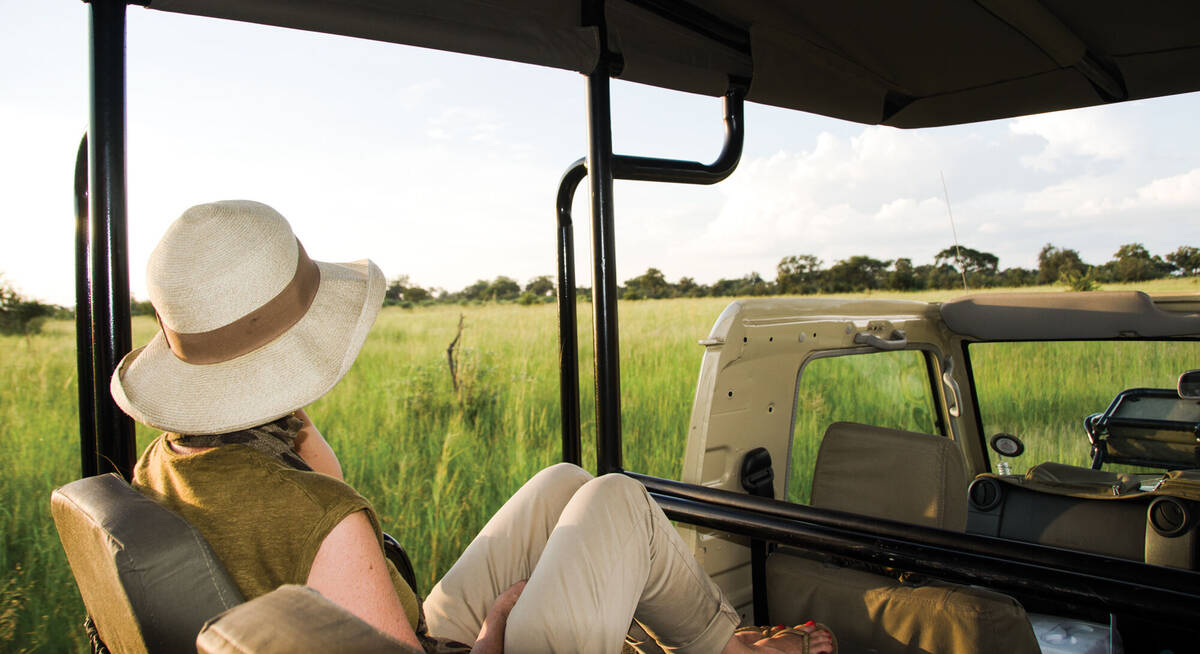
Rock Hare Self-drive Safari
20 days • 12 locations
WINDHOEK AIRPORT TO VICTORIA FALLS AIRPORT
An in-depth look at Namibia from the Namib Desert to the Caprivi, with additional stops in Botswana and Victoria Falls. This three-week adventure includes an unrivalled mix of environments and is great value.
US$7,400 - US$8,360 per person
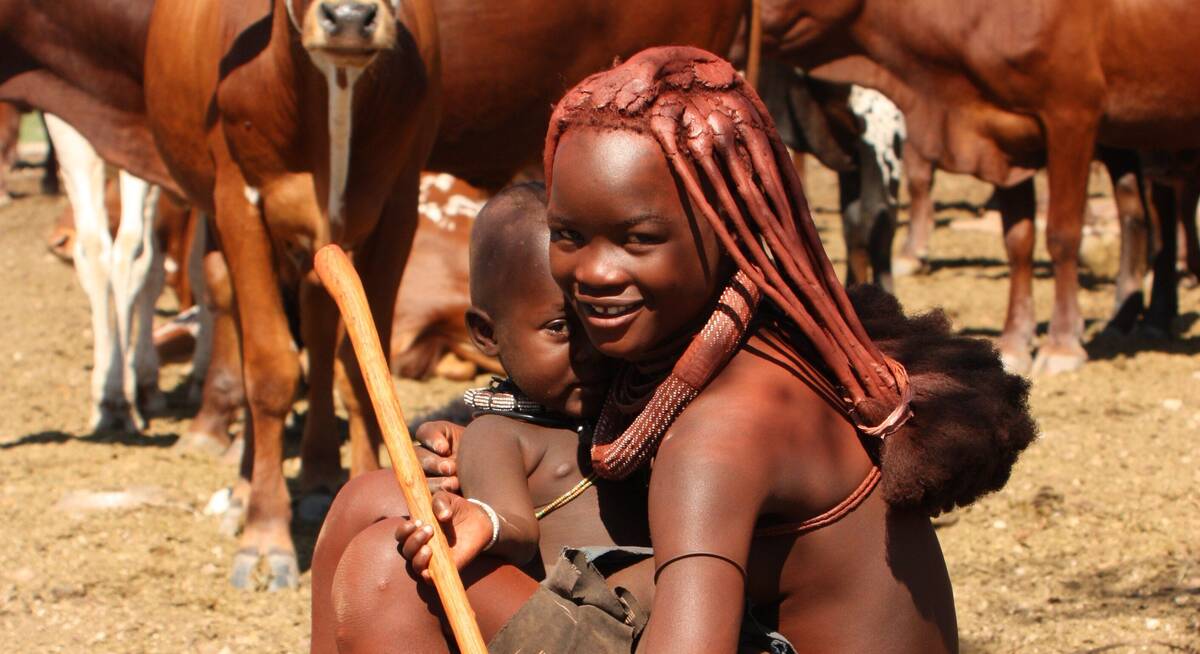
Hartebeest Self-drive Safari
16 days • 8 locations
WINDHOEK AIRPORT TO WINDHOEK AIRPORT
This self-drive safari focuses on the best cultural experiences in Namibia. Visit a Himba village and enjoy three days living with the San Bushmen interspersed with some excellent wildlife watching.
US$4,590 - US$4,860 per person
Most recent reviews of our safaris to Etosha
Click below to browse all 1315 reviews from Etosha National Park. All from our travellers; all are in full & unedited.
Arrived 9 Apr 2025, 11 nights
"My big birthday trip 2025"
Overall rating: Excellent
Arrived 17 Mar 2025, 17 nights
"My Mar 2025 trip"
Overall rating: Good
Arrived 15 Mar 2025, 20 nights
"My March 2025 trip"
Overall rating: Excellent
Arrived 5 Mar 2025, 14 nights
"Namibia March 2025"
Overall rating: Excellent
Arrived 24 Jan 2025, 10 nights
"My Jan 2025 trip"
Overall rating: Excellent
Arrived 22 Dec 2024, 14 nights
"Namib Desert, Damaraland, Etosha self-drive"
Overall rating: Excellent
Arrived 15 Dec 2024, 16 nights
"My Dec 2024 trip"
Overall rating: Excellent
Arrived 15 Nov 2024, 13 nights
"My Nov 2024 trip"
Overall rating: Excellent
Arrived 20 Oct 2024, 20 nights
"My Oct 2024 trip"
Overall rating: Excellent
Arrived 19 Oct 2024, 17 nights
"My Oct 2024 trip"
Overall rating: Excellent
Where to stay in and around Etosha National Park
Take your pick from a range of lodges in and around Etosha, where comfort meets adventure – and wildlife.
Within the park, consider Halali Camp's rustic allure, or the fort-like Namutoni Camp, while just on the boundary there's the exclusive luxury of Ongava Lodge or the peaceful Mushara Bush Camp. These and many more offer a diversity of style and budget to suit almost every traveller.
Ask us for tailored details to match you with the lodges that best suit your preferences.
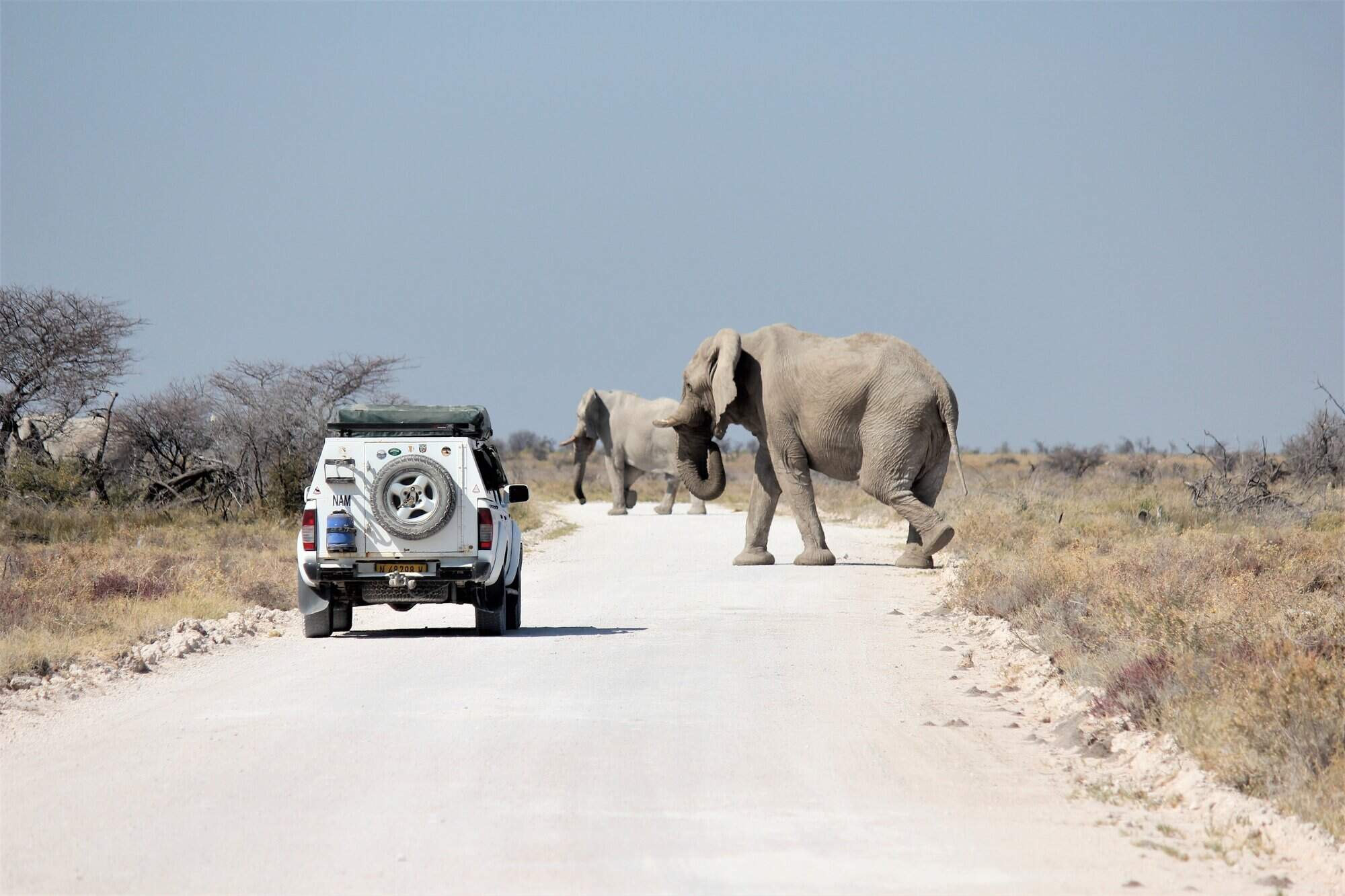
Okaukuejo Camp
Set within Etosha National Park, Okaukuejo Resort is a large camp with a productive, floodlit waterhole.
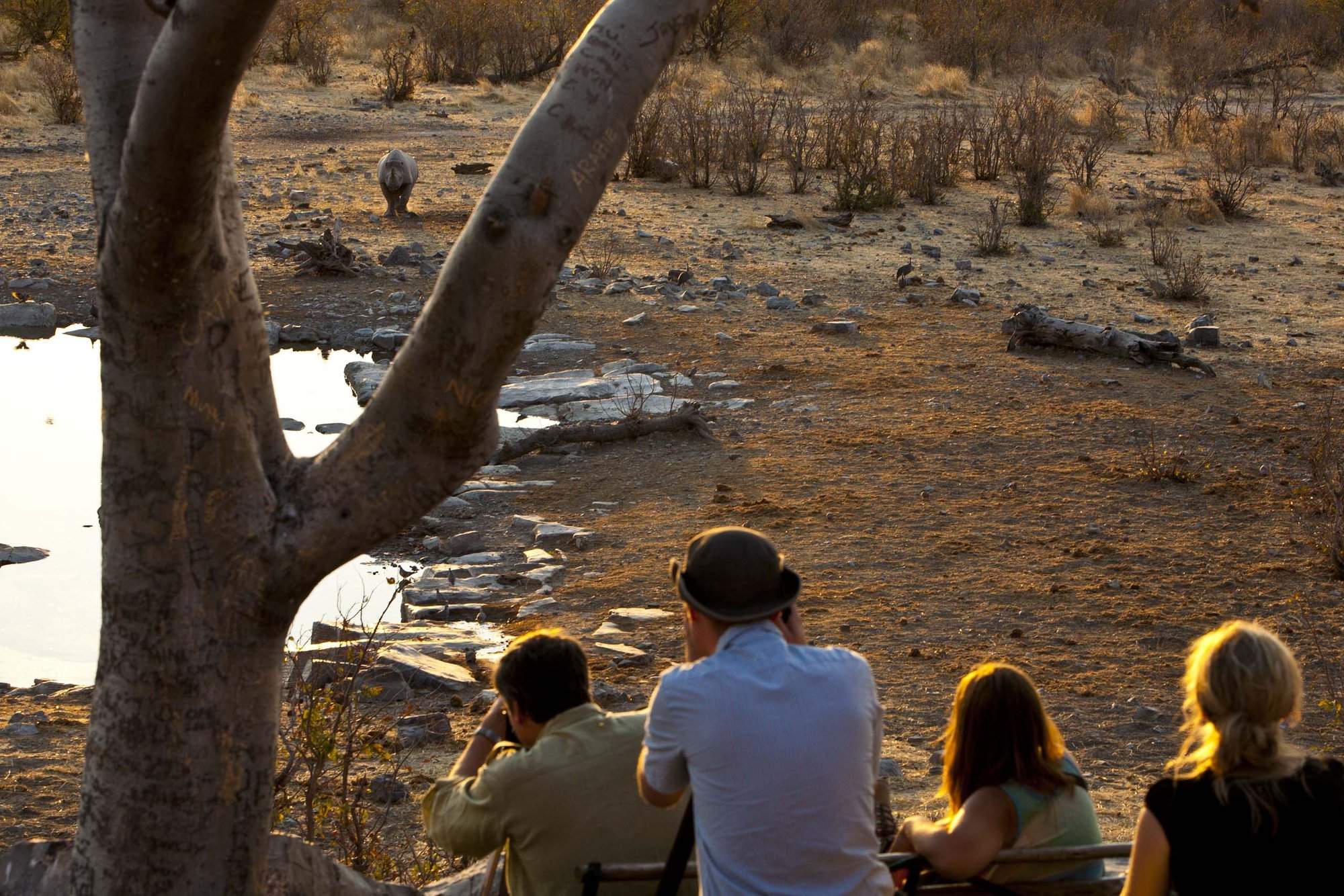
Halali Camp
The smallest of Etosha's erstwhile restcamps, overlooking its own floodlit waterhole, Halali has a superb location near the centre of Etosha Pan.
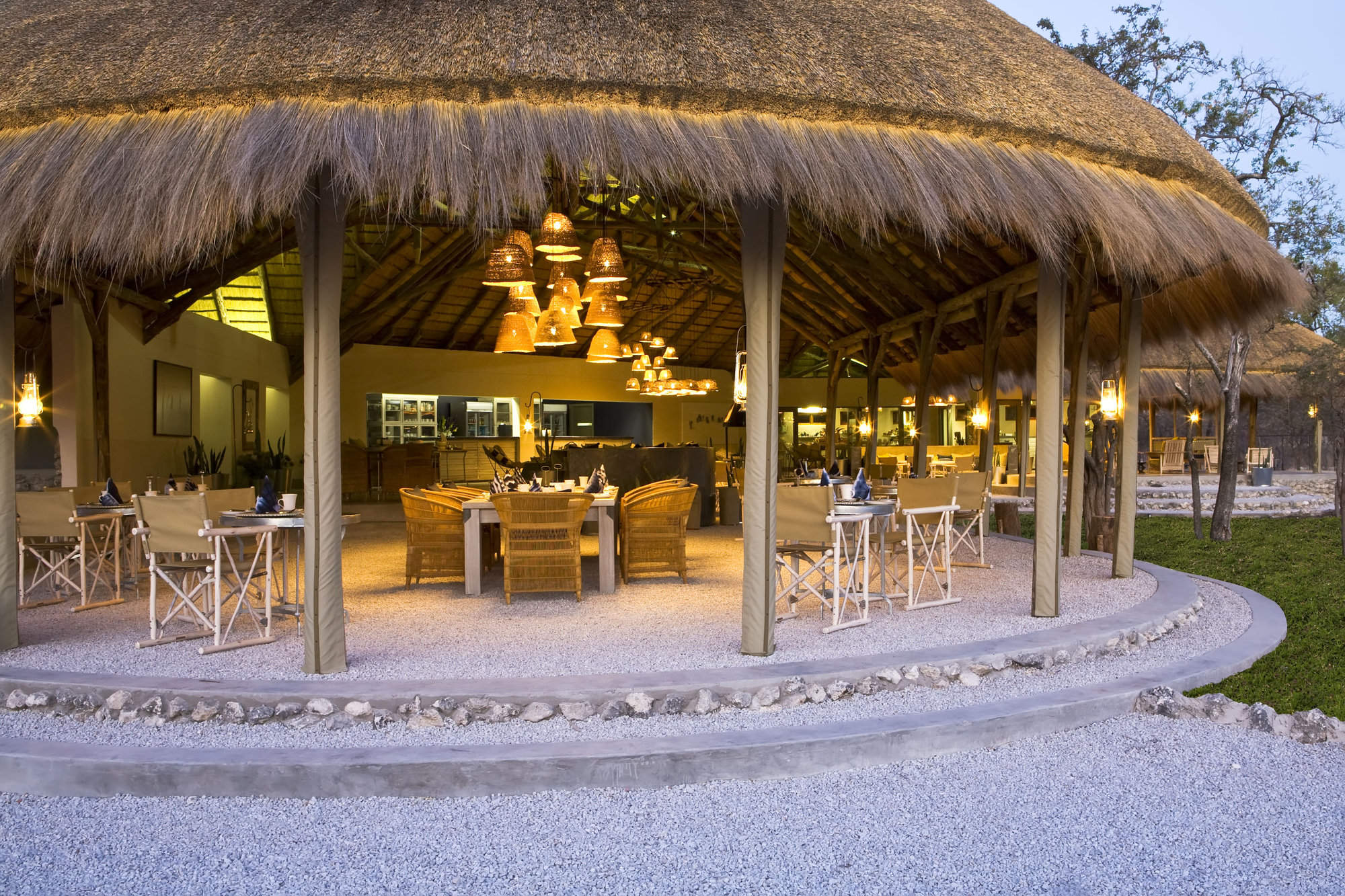
Mushara Bush Camp
The family-friendly Mushara Bush Camp offers great value and is an excellent base from which to explore Etosha National Park.
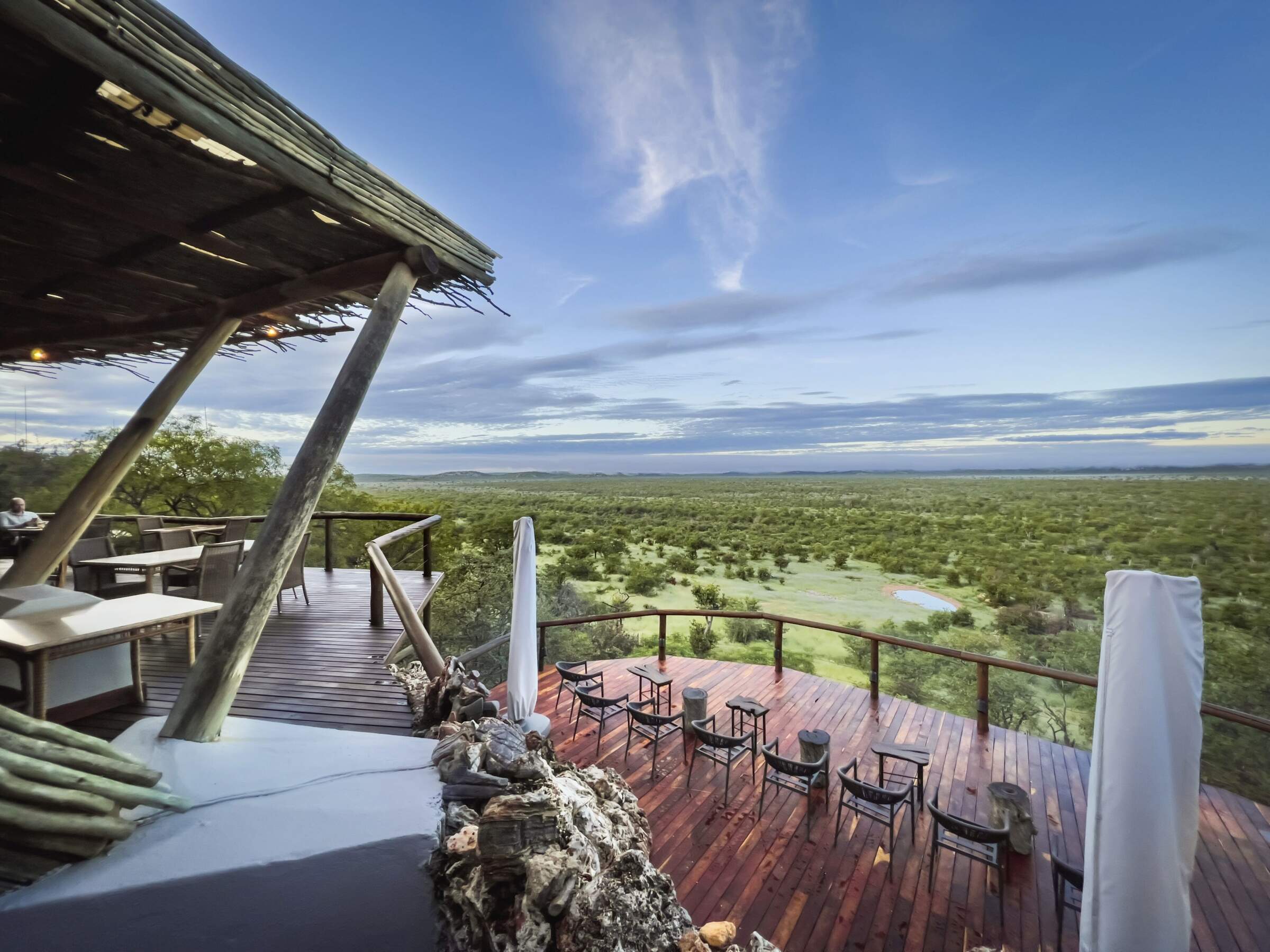
Ongava Lodge
With fantastic views over a private reserve bordering Etosha, the smart Ongava Lodge offers driving and walking safaris on the reserve, and guided drives in Etosha.
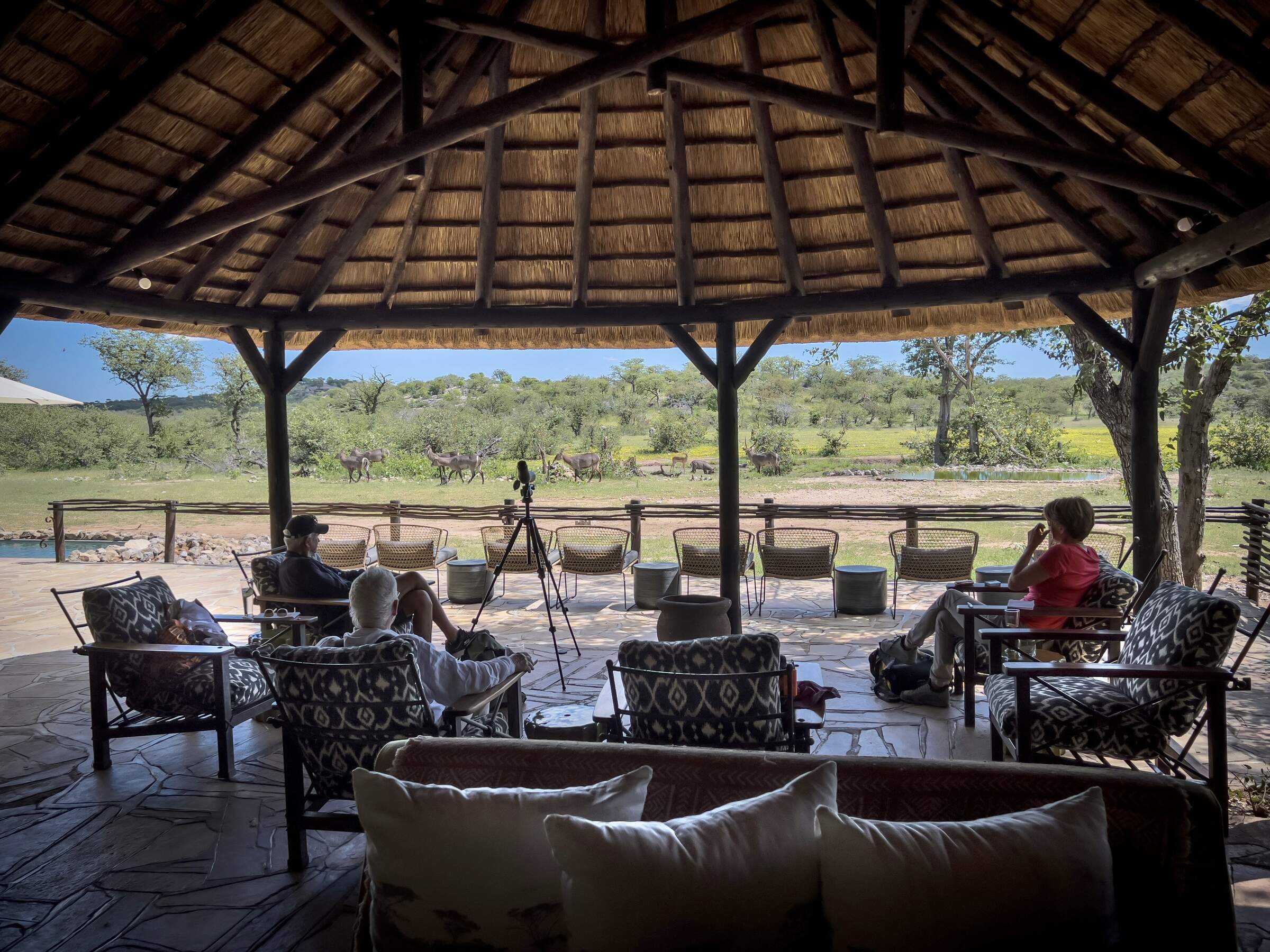
Ongava Tented Camp
Set around a waterhole on a private reserve, the small Ongava Tented Camp combines understated comfort with activities that include walks and night drives.
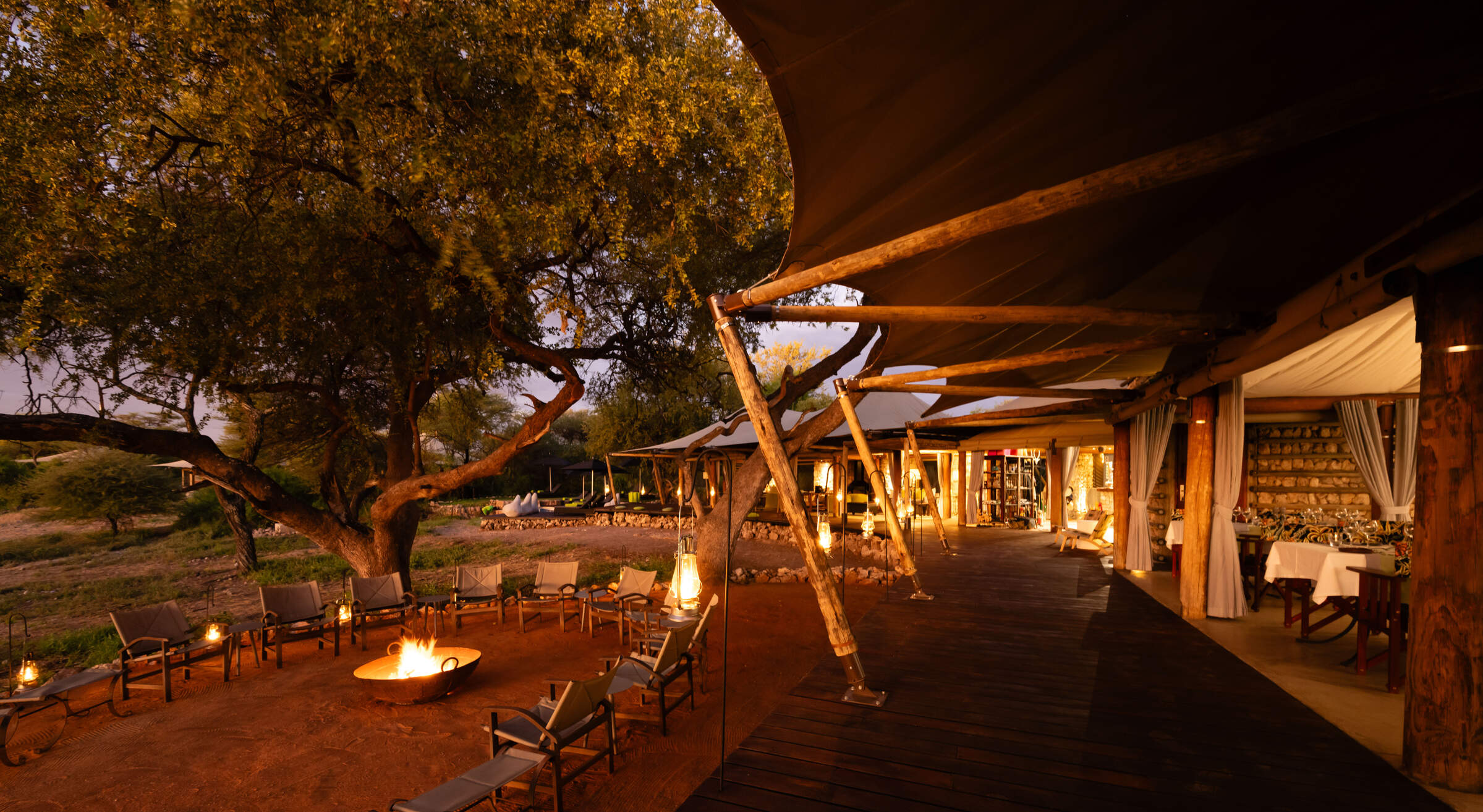
Onguma Tented Camp
Onguma Tented Camp is a lovely, little tented camp which centres around an attractive waterhole a short drive from the Von Lindequist Gate to eastern Etosha.
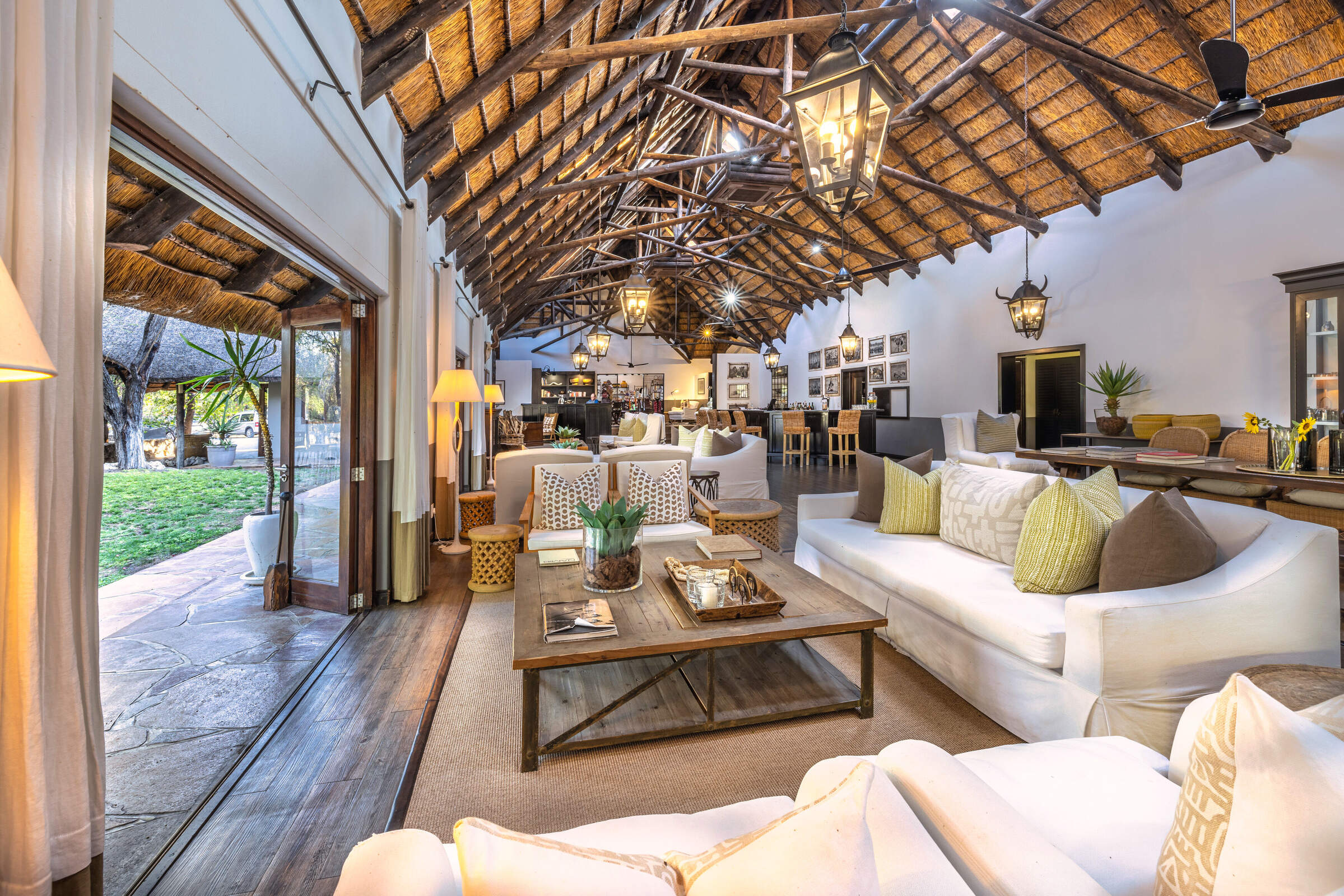
Mushara Lodge
Close to the eastern entrance to Etosha, the comfortable Mushara Lodge is well-placed for exploring the park in your own vehicle or on a guided drive.
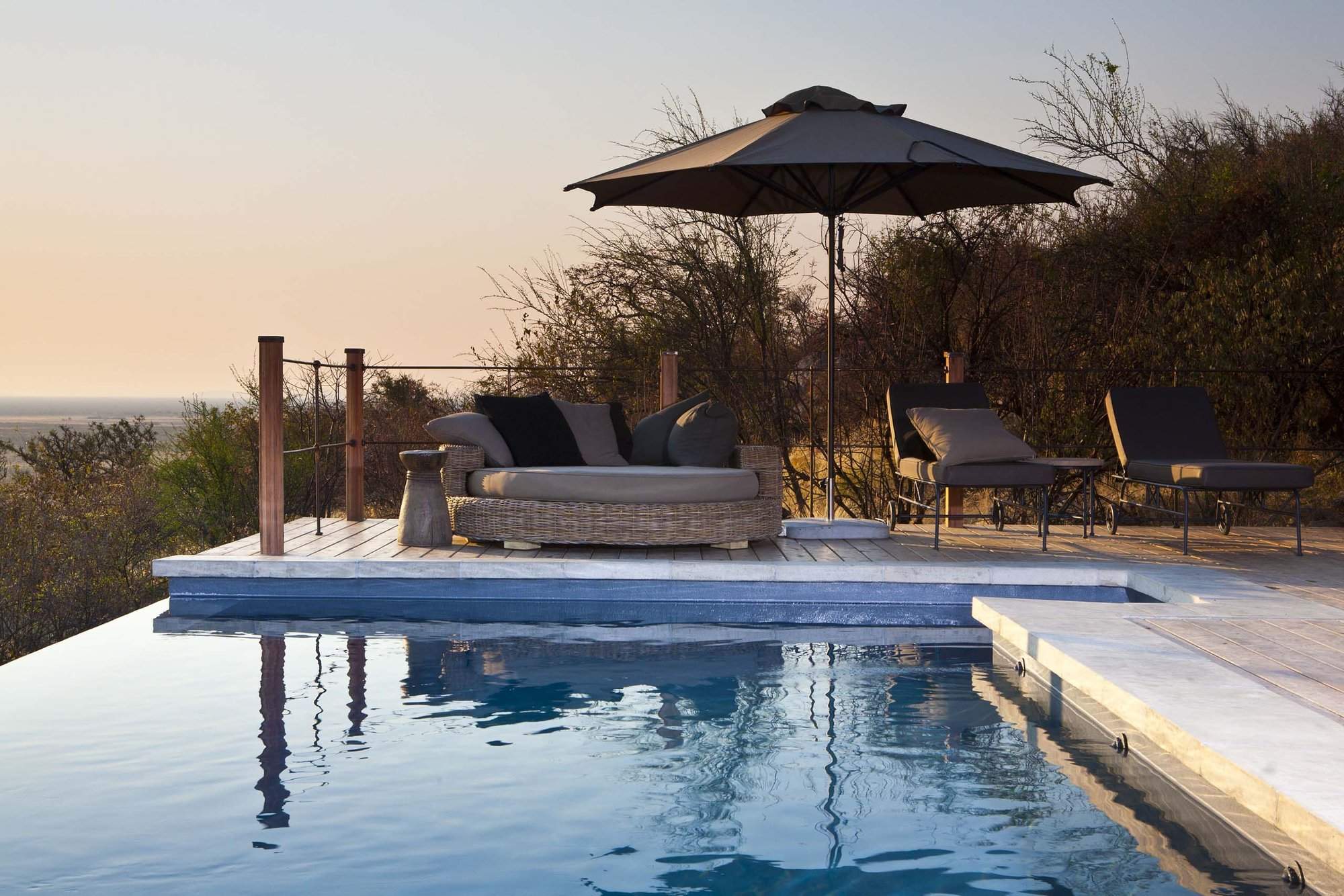
Dolomite Camp
Opened in 2011, Dolomite Camp allows visitors access to the far west side of Etosha National Park, which was previously off limits to most visitors.
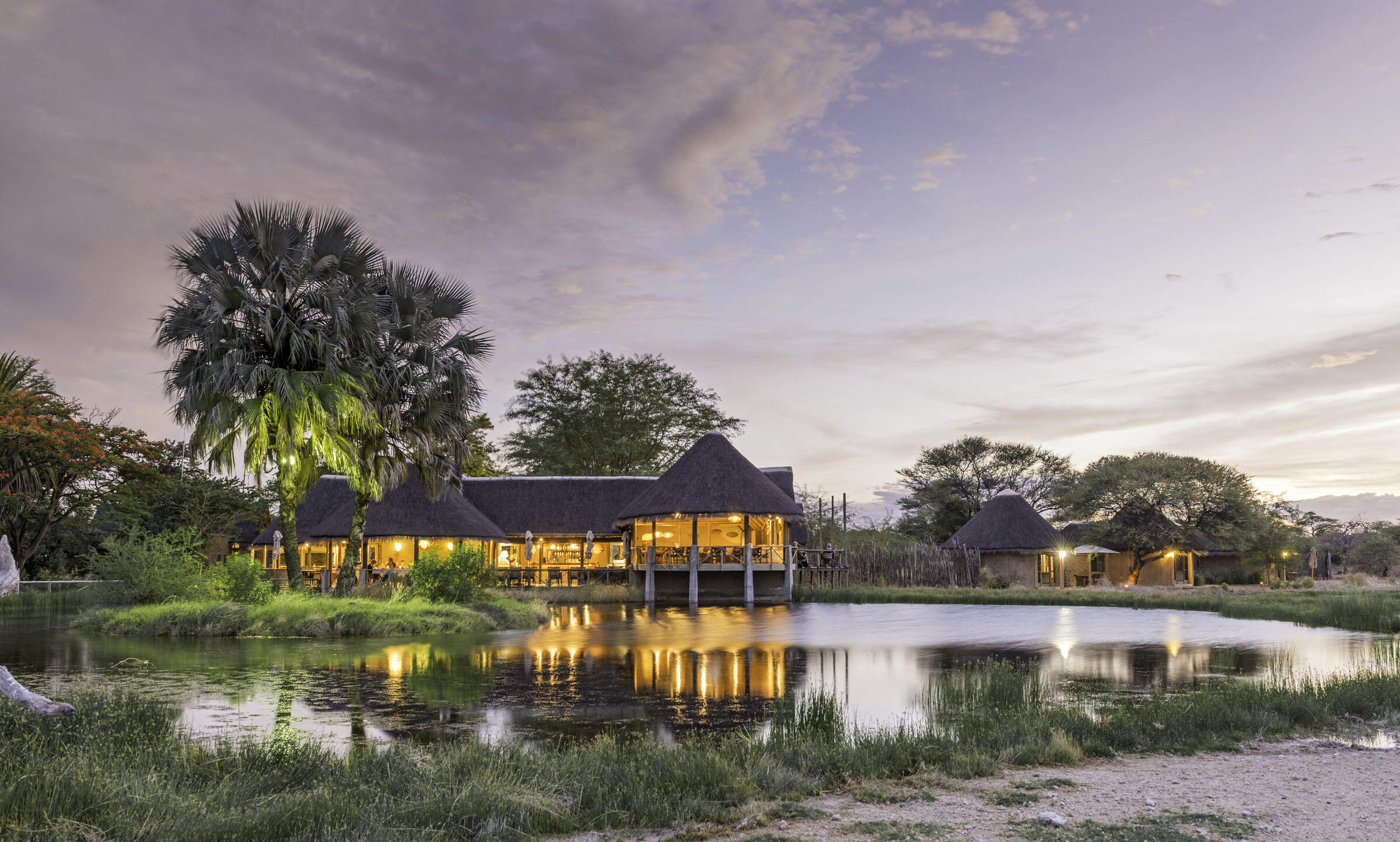
Onguma Bush Camp
For great wildlife viewing without breaking the bank, the affordable and understated luxury of Onguma Bush Camp could be perfect.
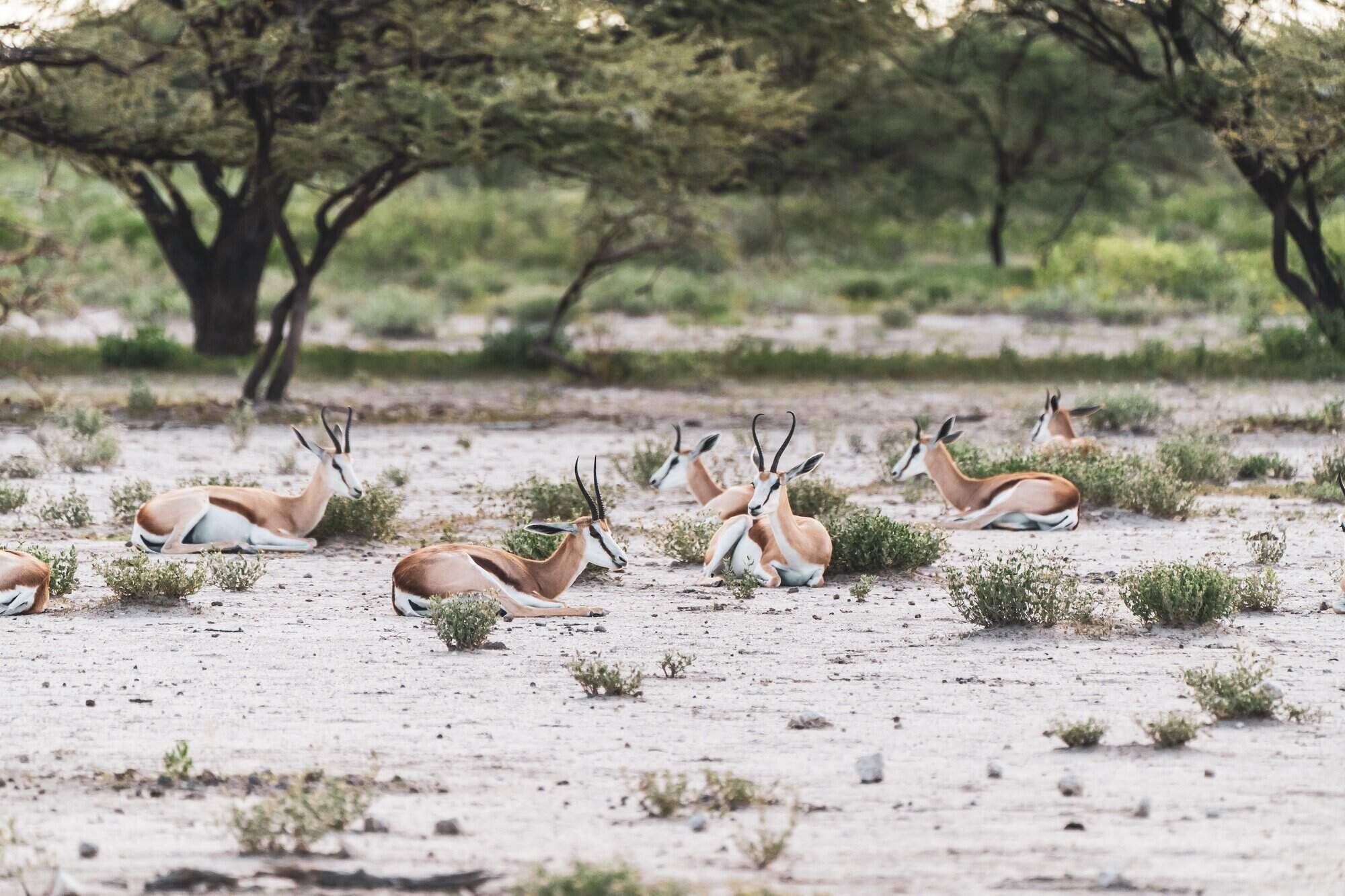
Namutoni Camp
Centred on an old fort, the government run Namutoni Camp is located just inside Etosha National Park, close to Fisher's Pan.
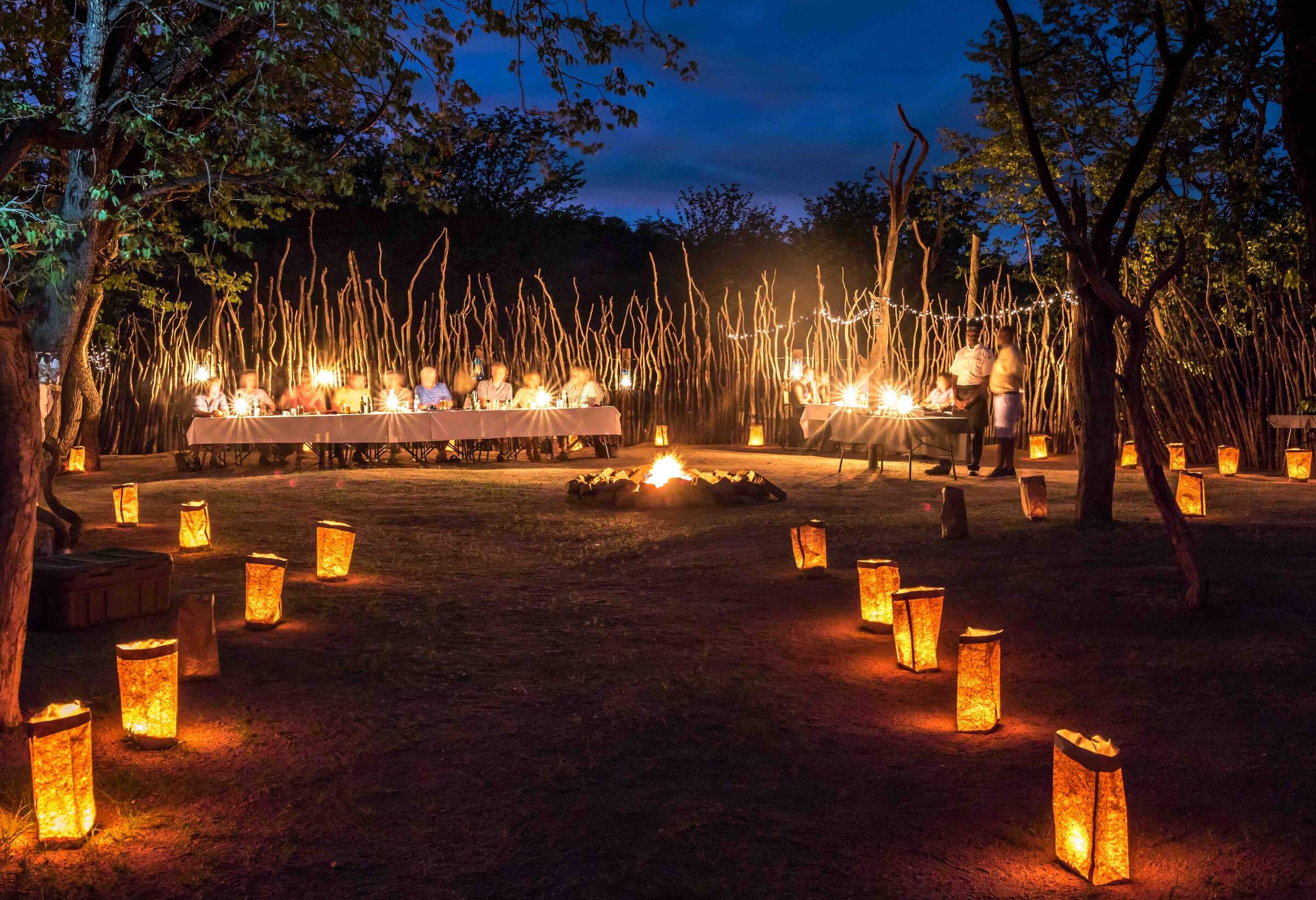
Hobatere Lodge
To the west of Etosha National Park, on the edge of Damaraland, Hobatere Lodge offers good game-viewing on its own reserve.
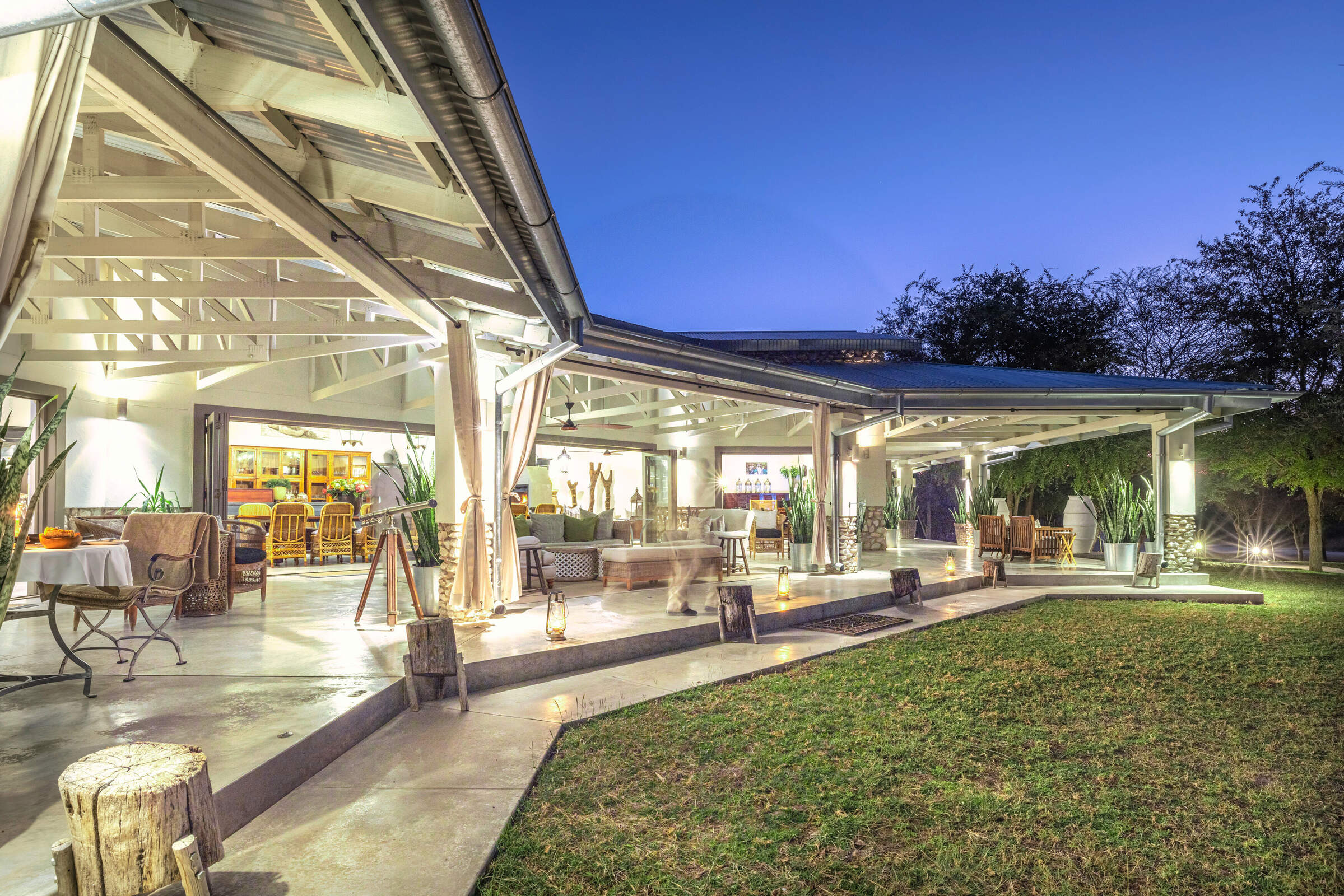
Mushara Outpost
Intimate and luxurious, Mushara Outpost is well-placed on a private reserve to explore nearby Etosha National Park on your own or on a guided drive.
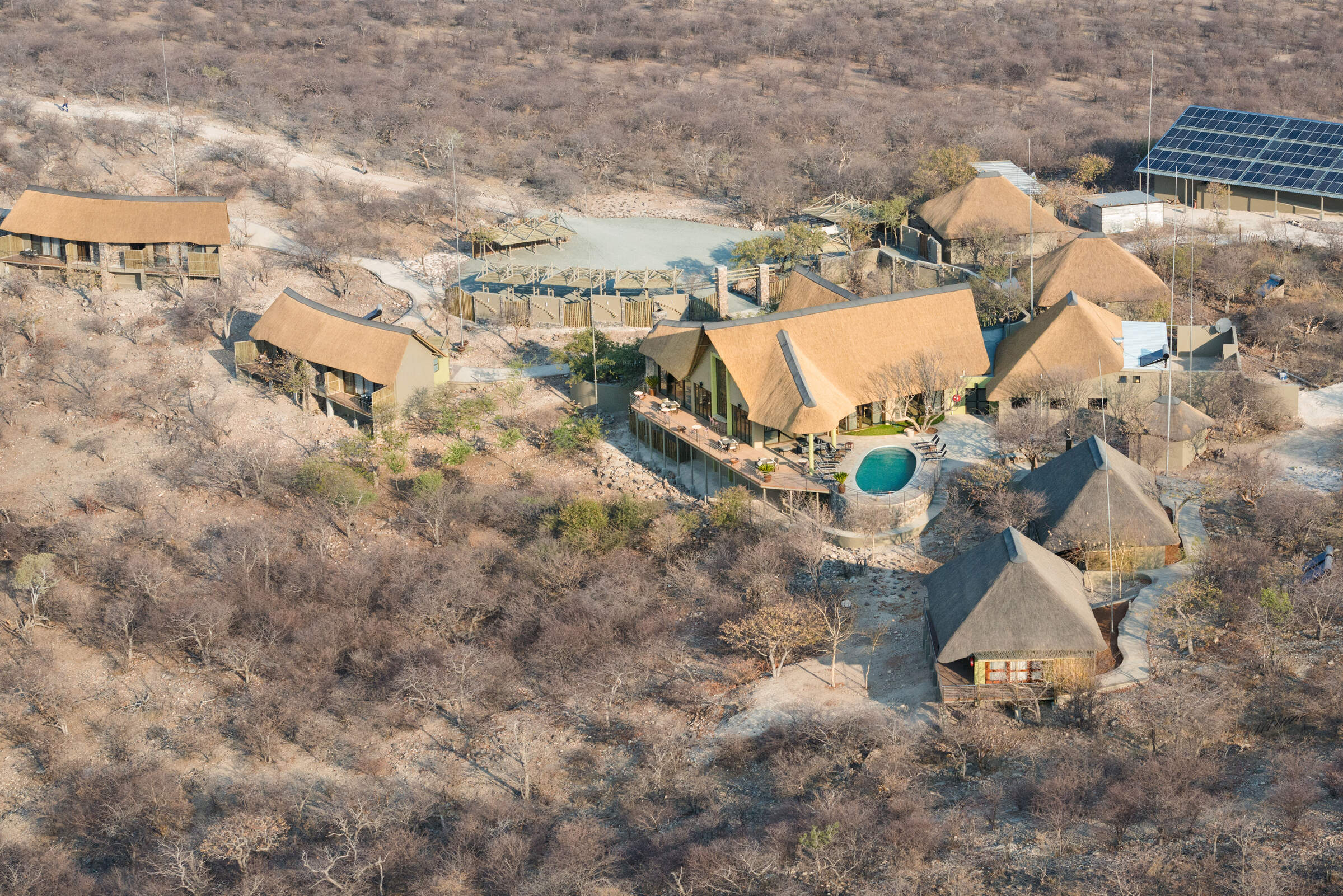
Safarihoek Lodge
At the heart of the private Etosha Heights Reserve, Safarihoek Lodge offers comfortable accommodation and excellent game-viewing.
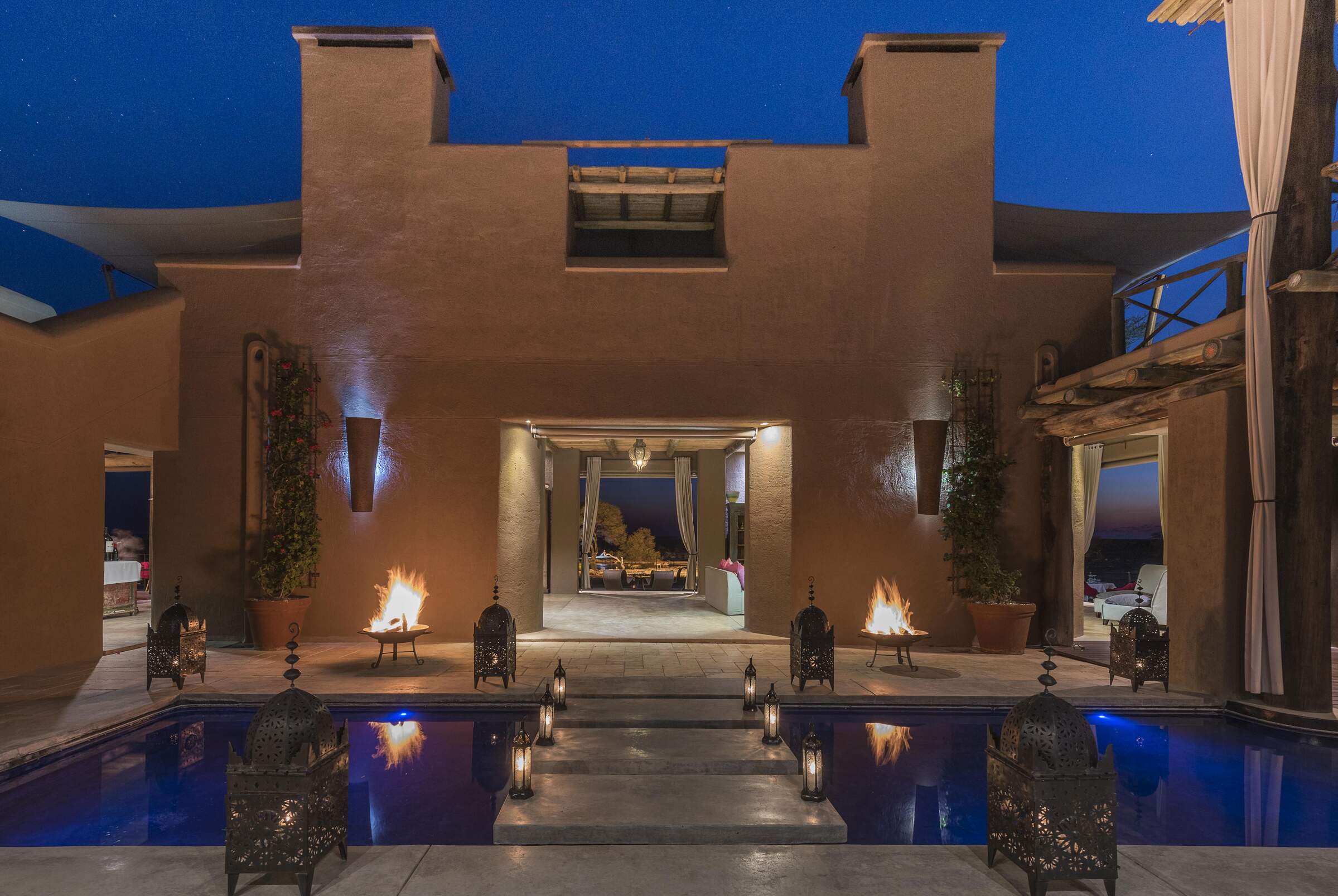
Onguma The Fort
The Fort is the jewel in the crown of the Onguma lodges, and arguably the whole of eastern Etosha.
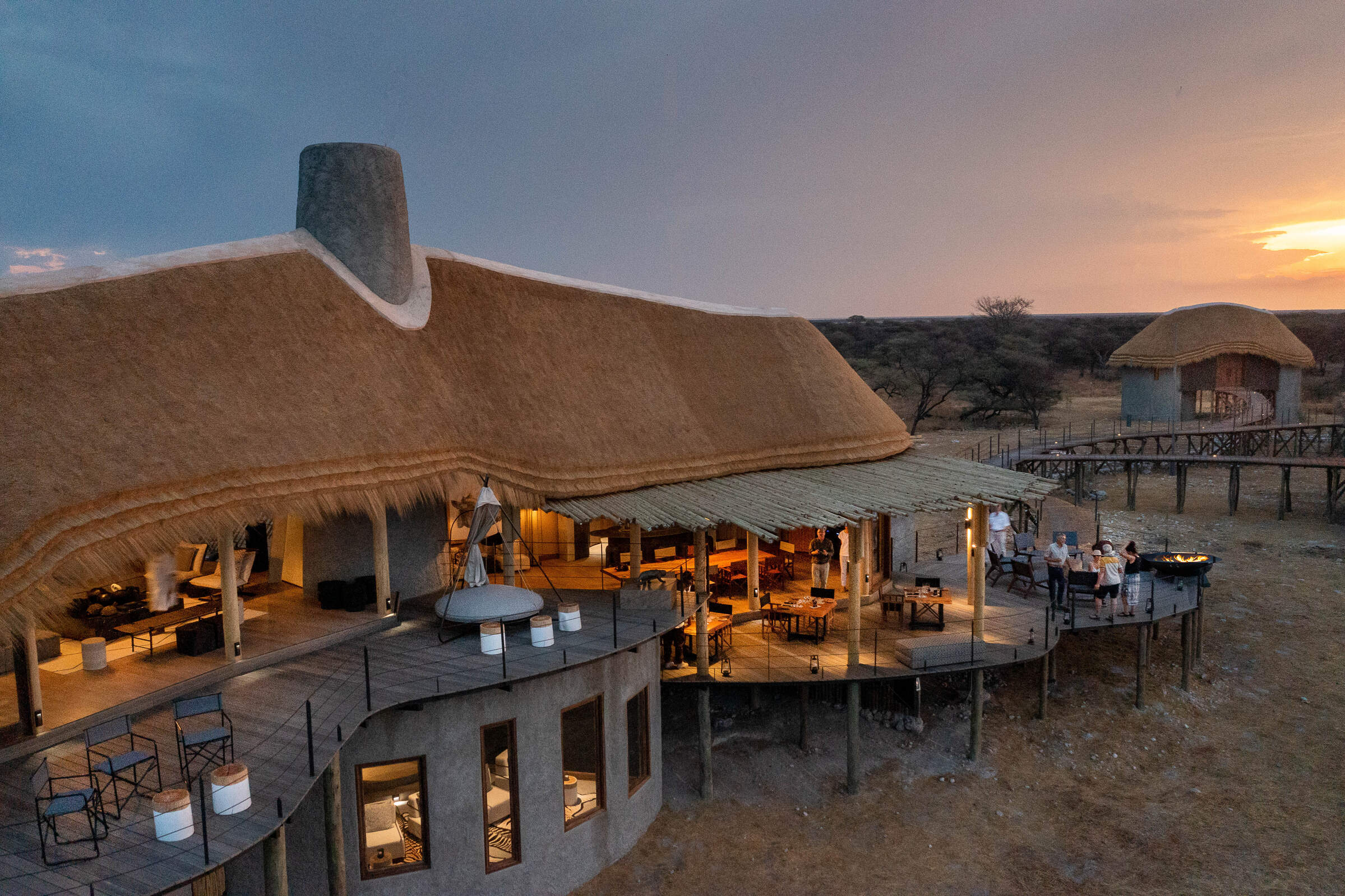
Onguma Camp Kala
For a bird’s eye view across African bush, the stilted rooms at Onguma Camp Kala are truly special.
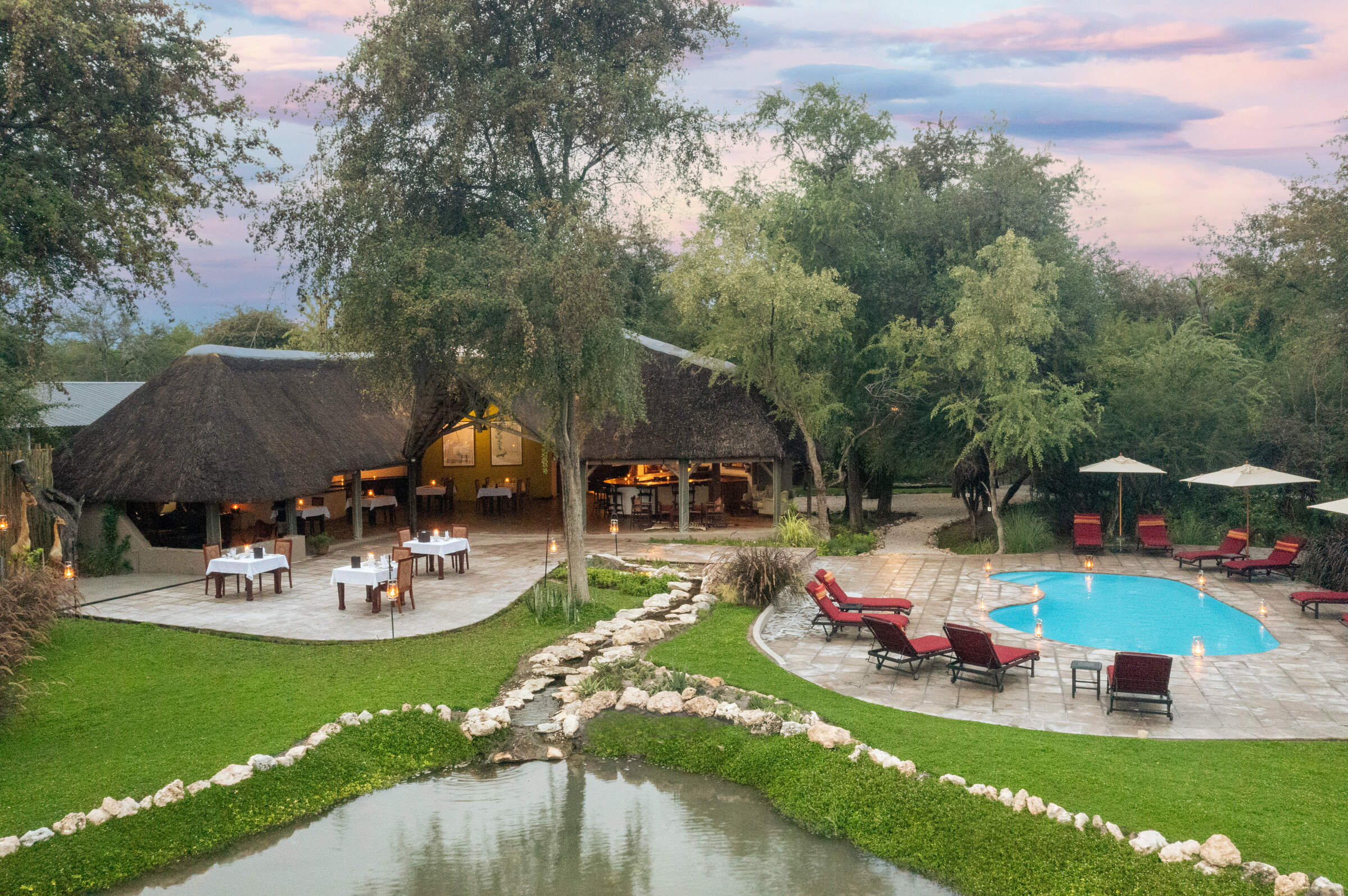
Onguma Forest Camp
From its woodland setting on the Onguma Reserve, Forest Camp is within easy striking distance of Namibia’s flagship national park.
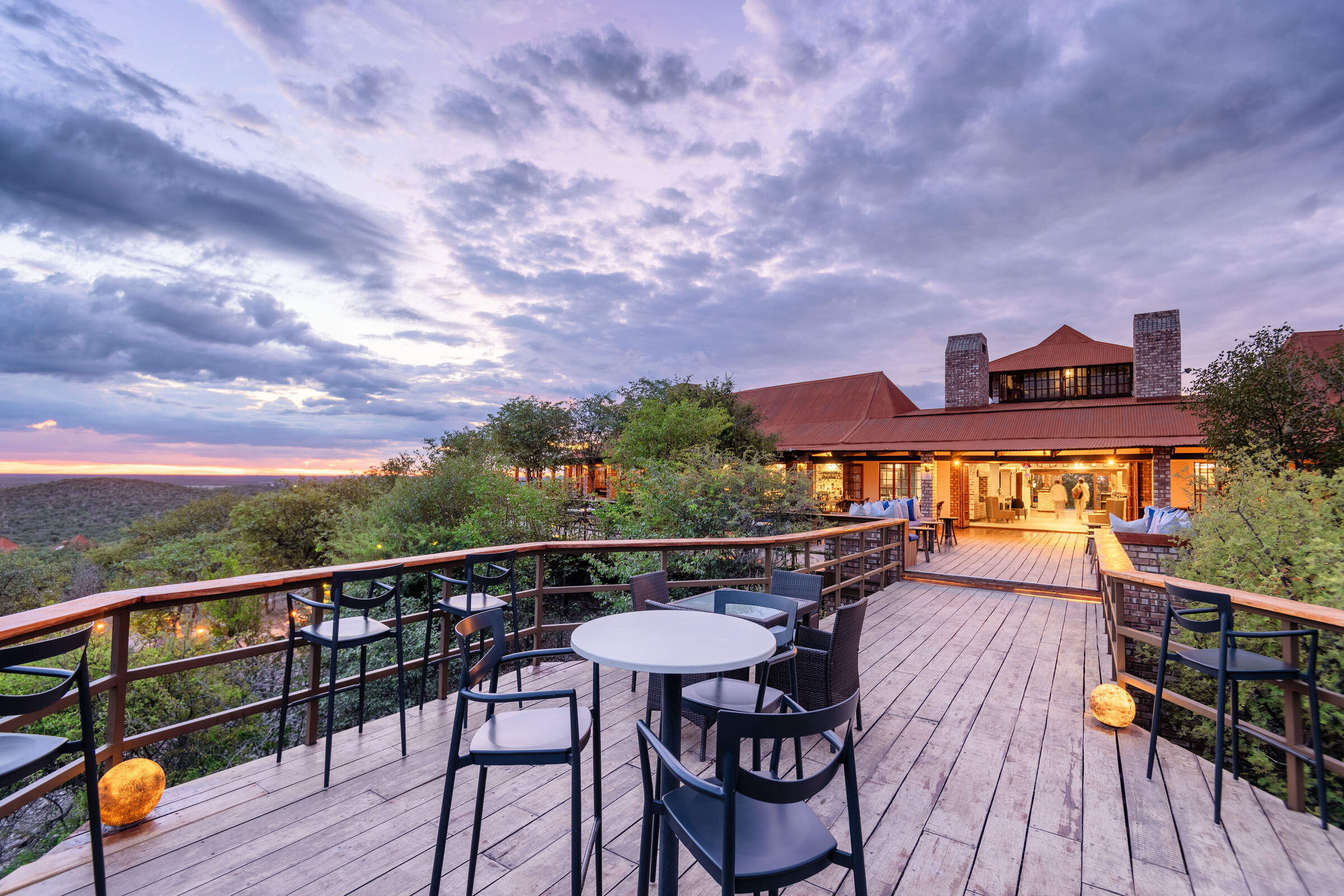
Etosha Safari Lodge
A short drive from Etosha National Park's southern entrance, Etosha Safari Lodge is a convenient base from which to explore the park.
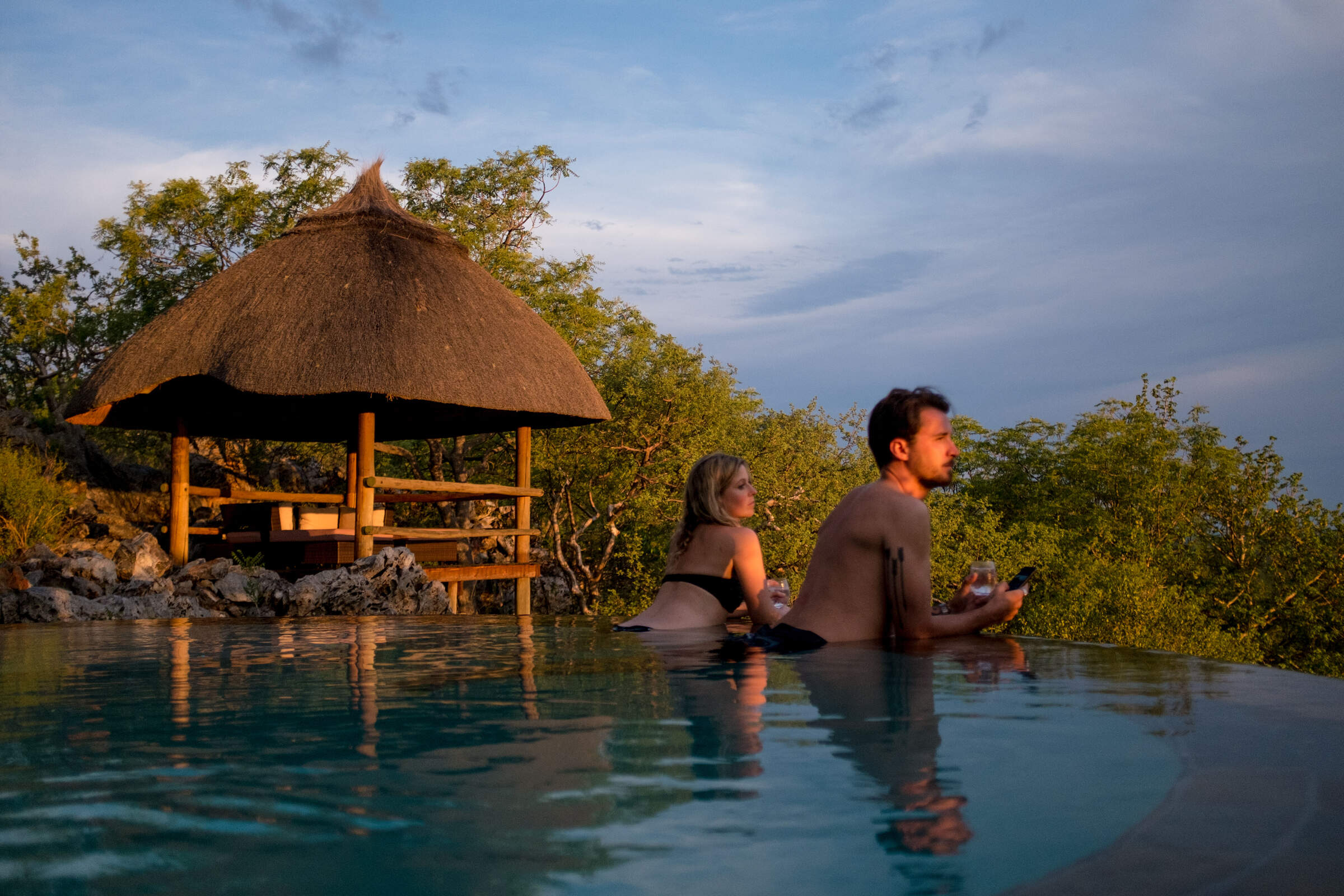
Little Ongava
The beautifully located and luxurious Little Ongava is a stunning place to stay in order to explore Etosha National Park and the private Ongava Reserve.
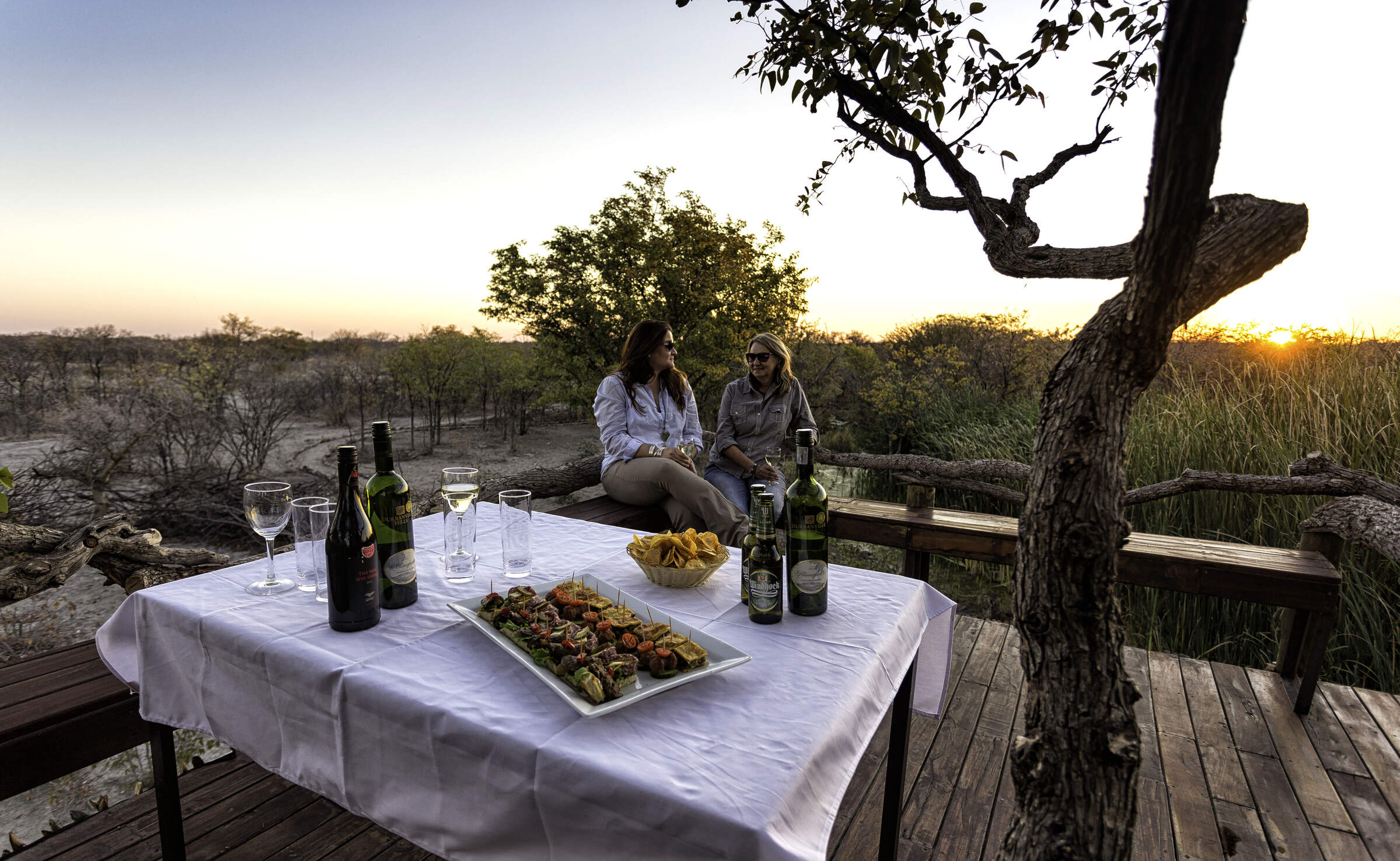
Taleni Etosha Village
Only 4km from Etosha's southern entrance, Taleni Etosha Village is an affordable base from which to explore the park.
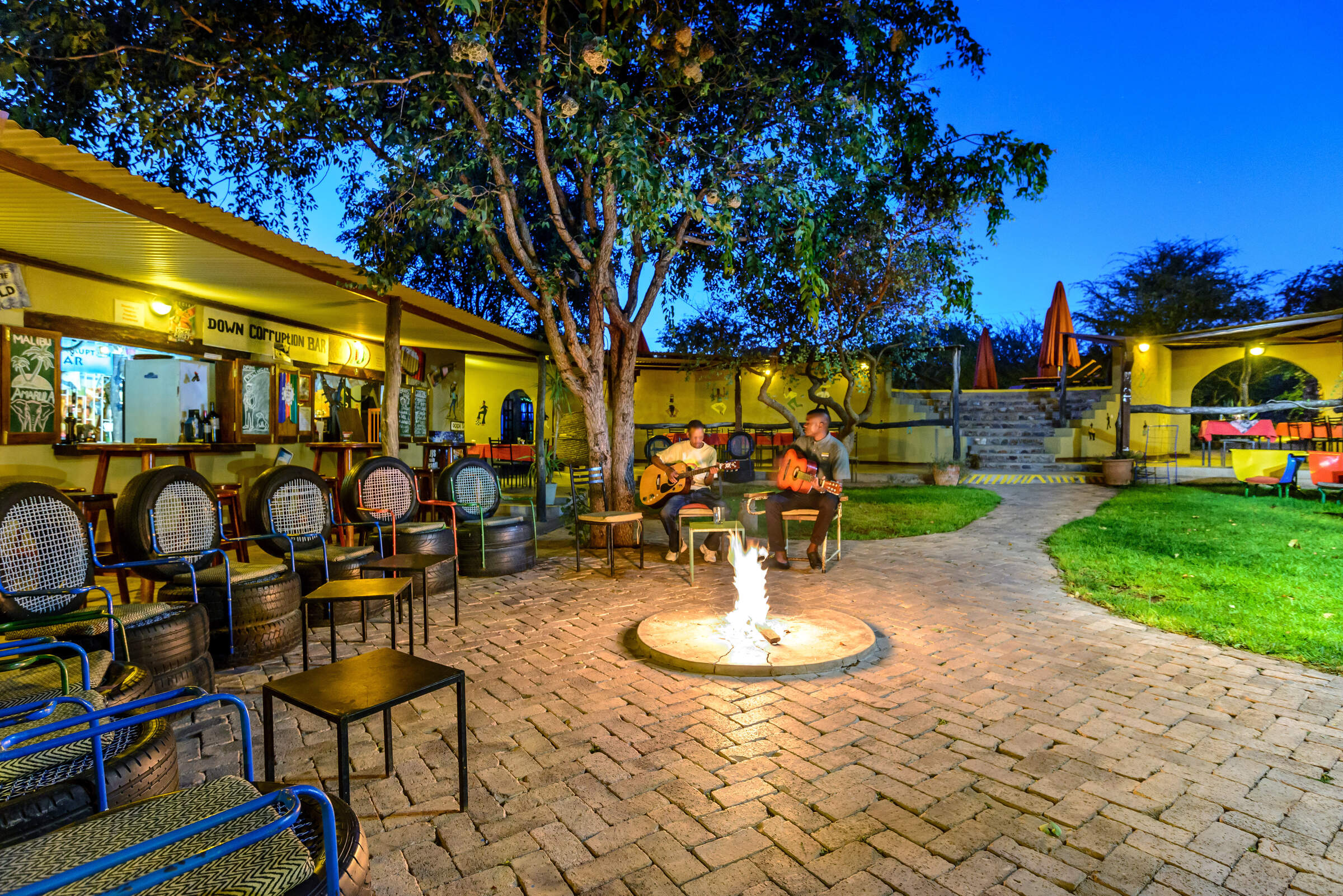
Etosha Safari Camp
Funky, low-key and very original, Etosha Safari Camp is well placed for visiting Etosha National Park on a self-drive or guided safari.
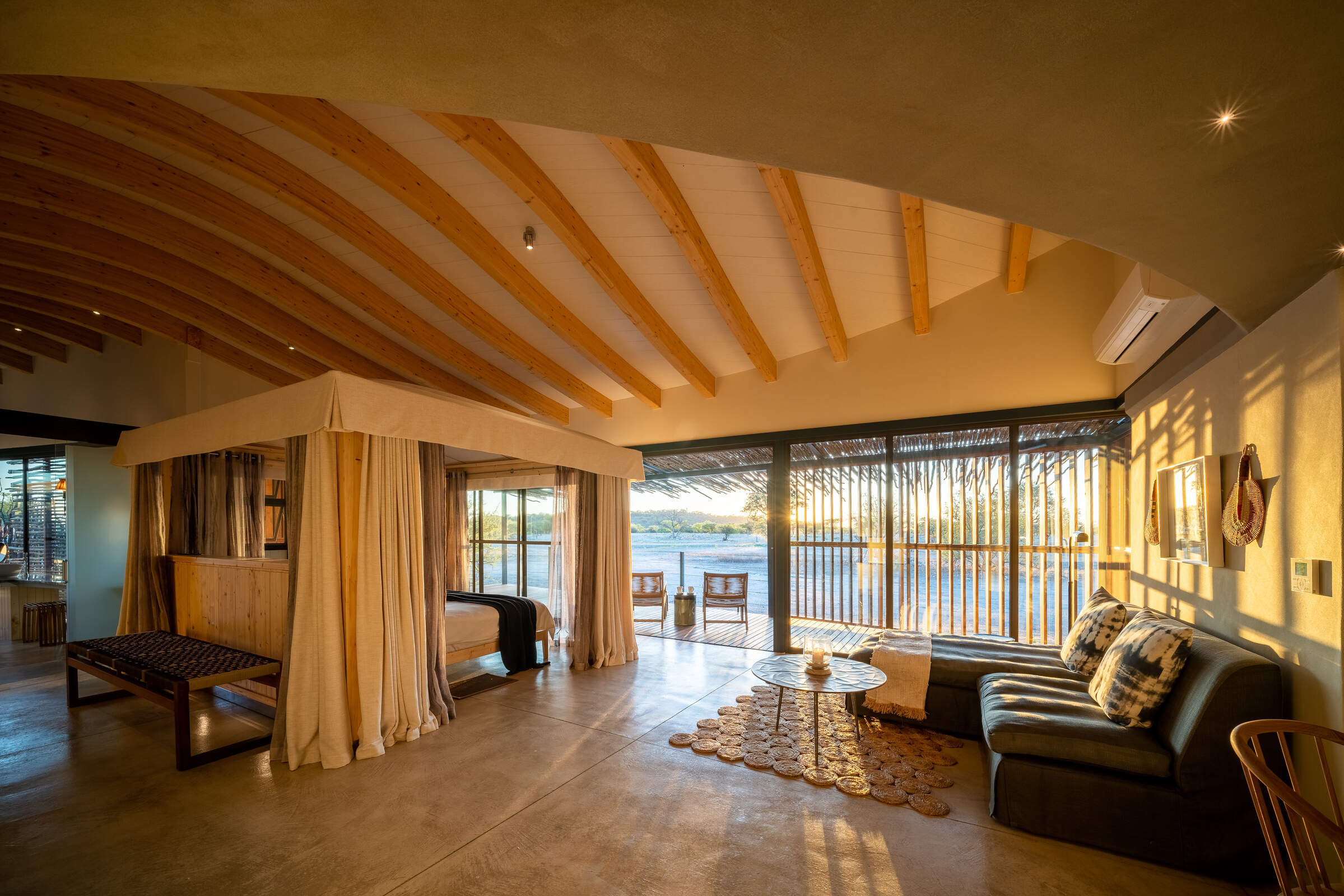
Andersson's at Ongava
With game drives on both its private reserve and in Etosha, Andersson's at Ongava also offers access to the Ongava Research Centre.
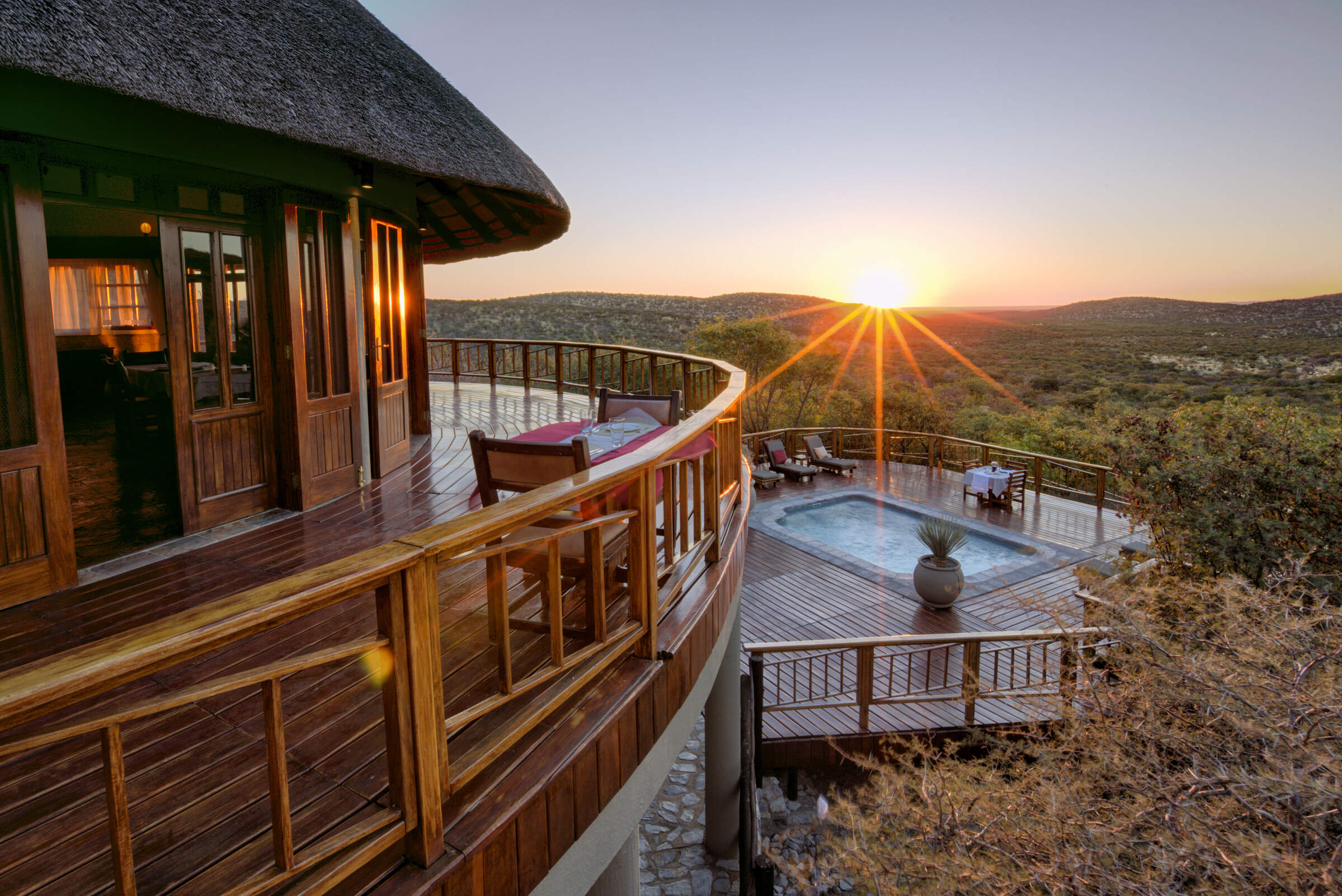
Mountain Lodge
In the heart of the private Etosha Heights Reserve, the family-friendly Mountain Lodge offers game drives and bush walks within an exclusive environment.
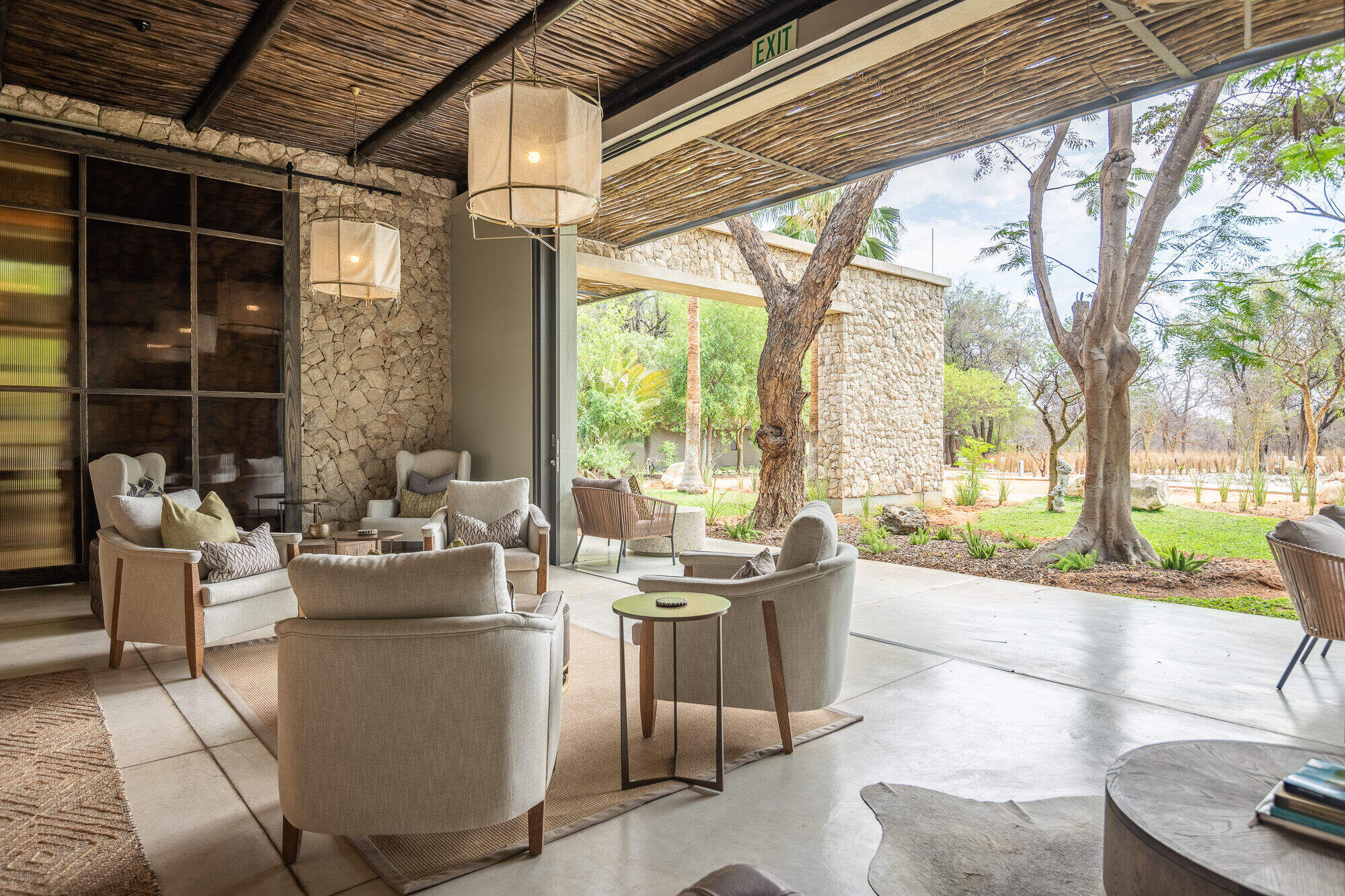
Mokuti Etosha Lodge
With 106 rooms, child-friendly Mokuti Etosha Lodge is more like a hotel than a lodge. Facilities to include a gym, spa, tennis courts and even a snake park.
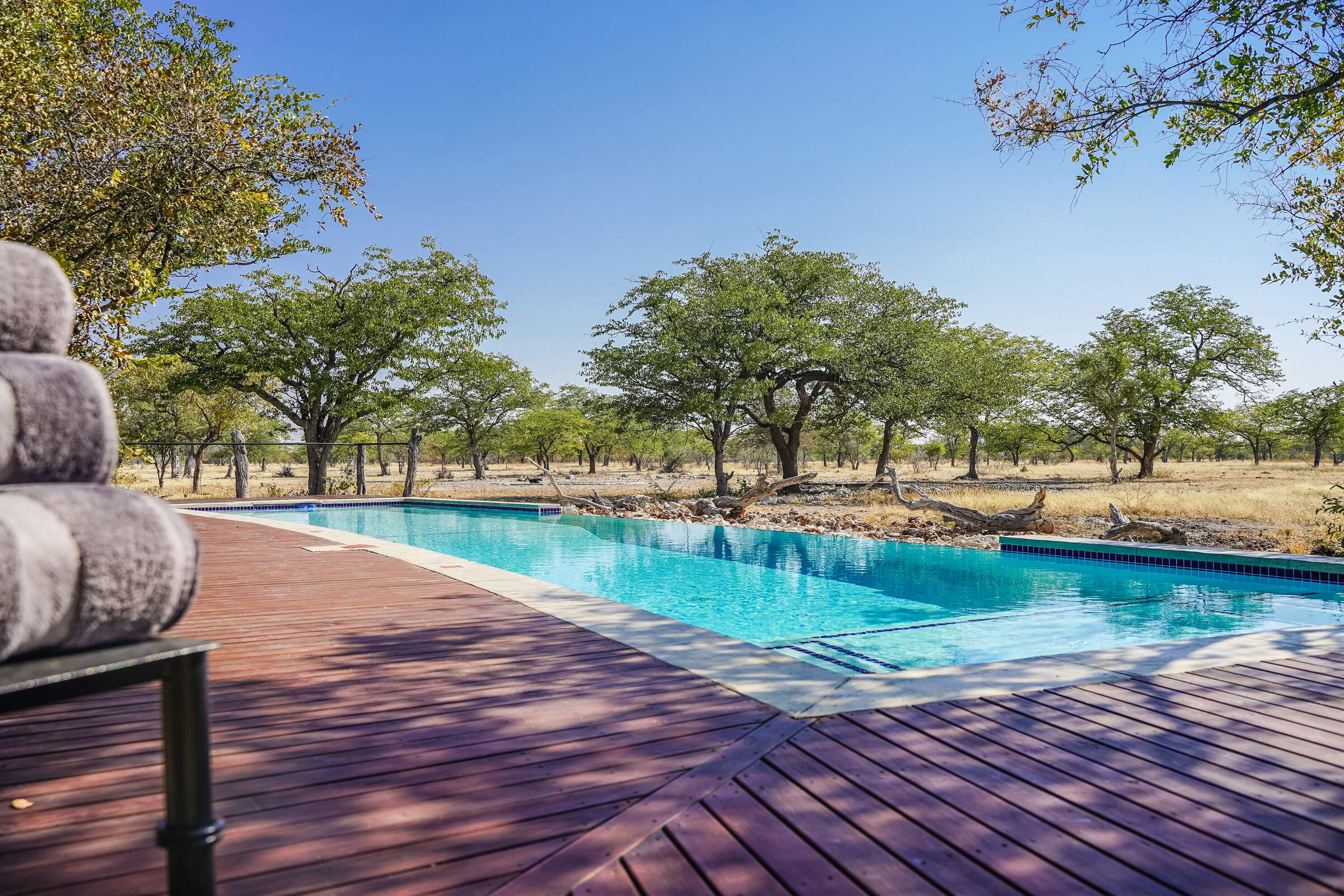
Etosha Oberland Lodge
A short drive from Etosha National Park's southern entrance, Etosha Oberland Lodge is a very comfortable base from which to explore the park, with excellent food.
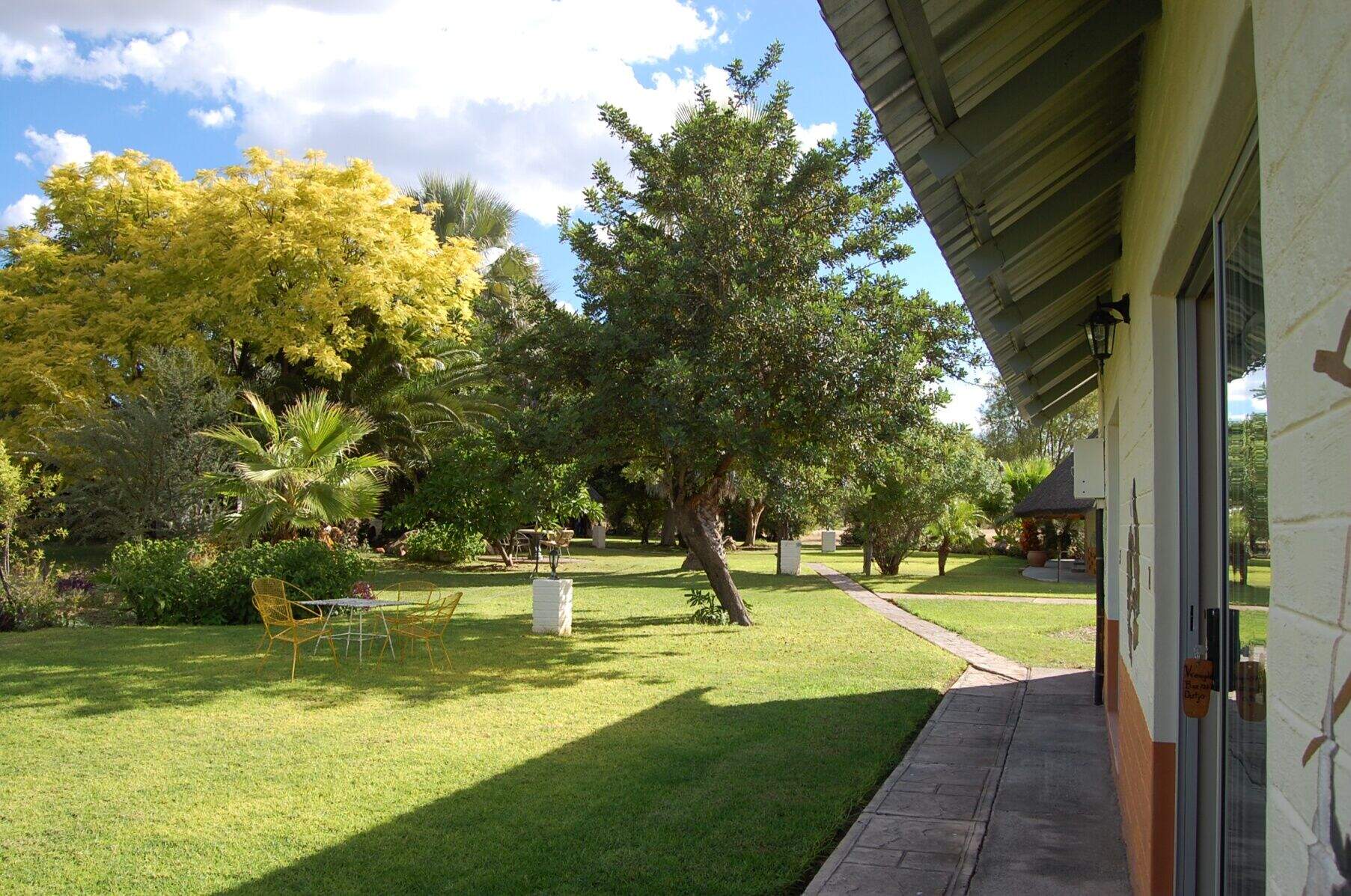
Vreugde Guest Farm
Vreugde Guest Farm is a delightful owner-run and working sheep farm where you can expect a warm welcome and charming hospitality.
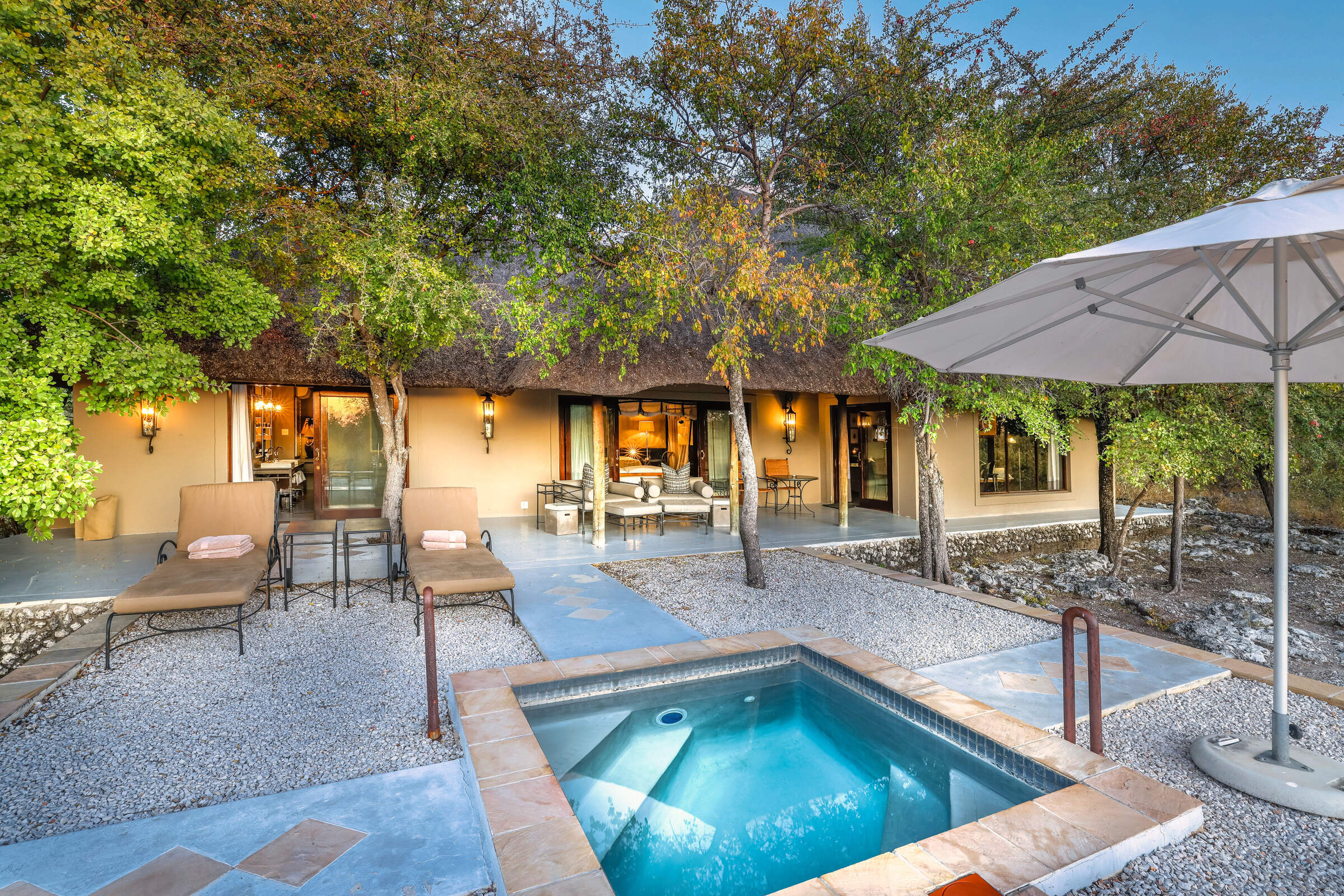
Villa Mushara
Offering luxury on a peaceful private reserve close to Etosha, Villa Mushara is a great choice for honeymooners & those wishing to indulge themselves.
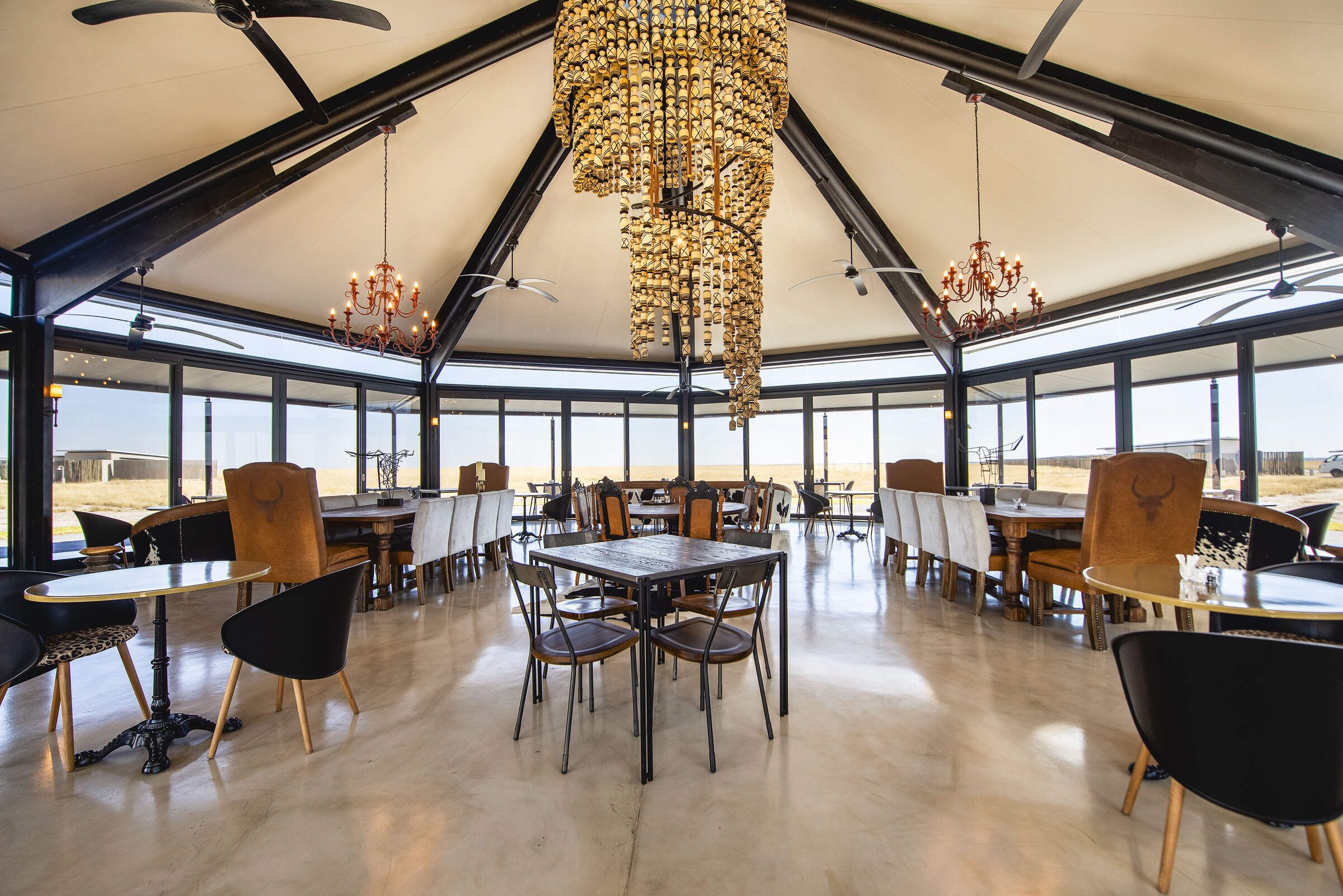
Etosha King Nehale
A short drive from the national park's northern entrance, Etosha King Nehale Lodge is an interesting and comfortable base from which to explore the park.
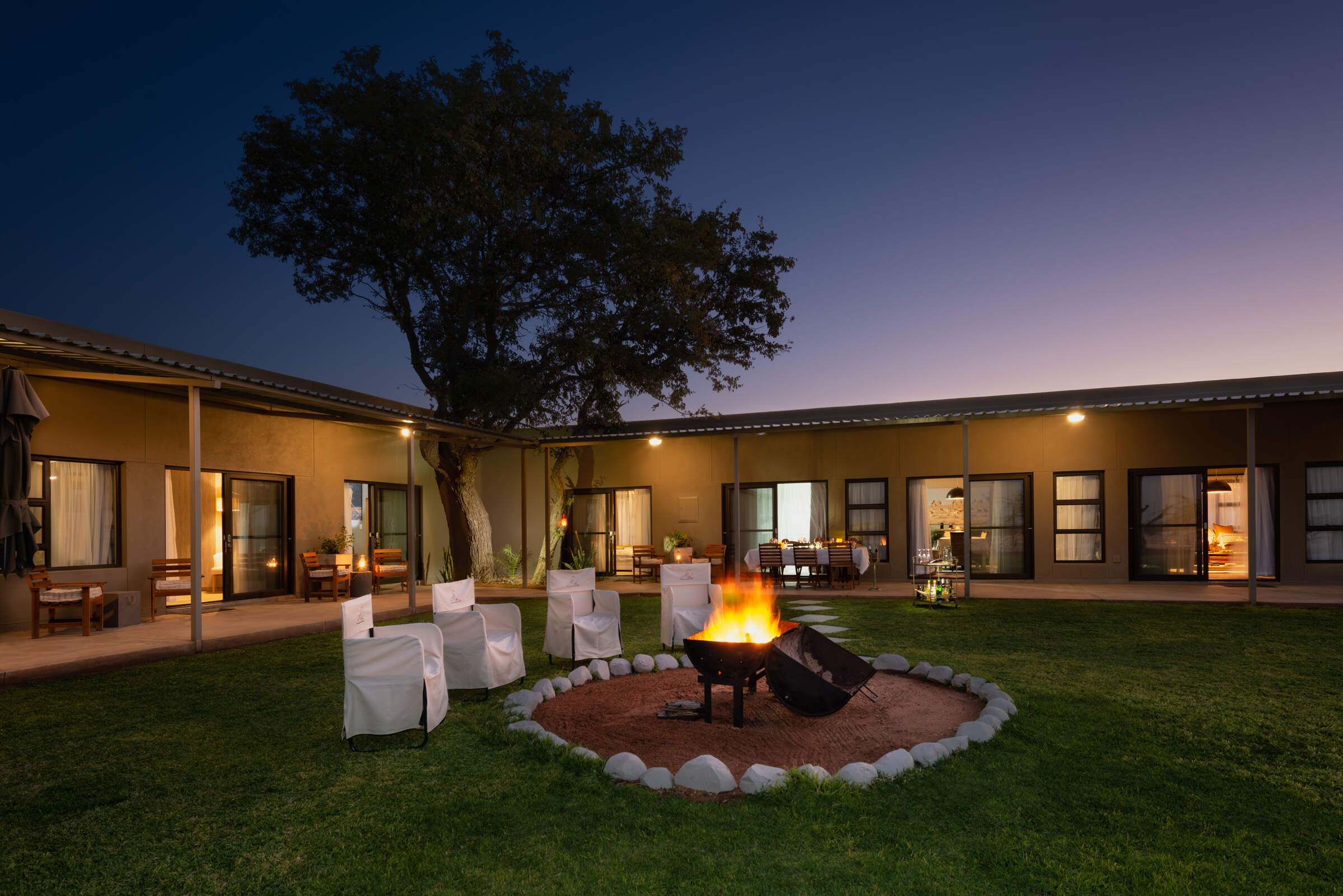
Safari House
The private Safari House on the Etosha Heights reserve is a great option families or friends travelling together.
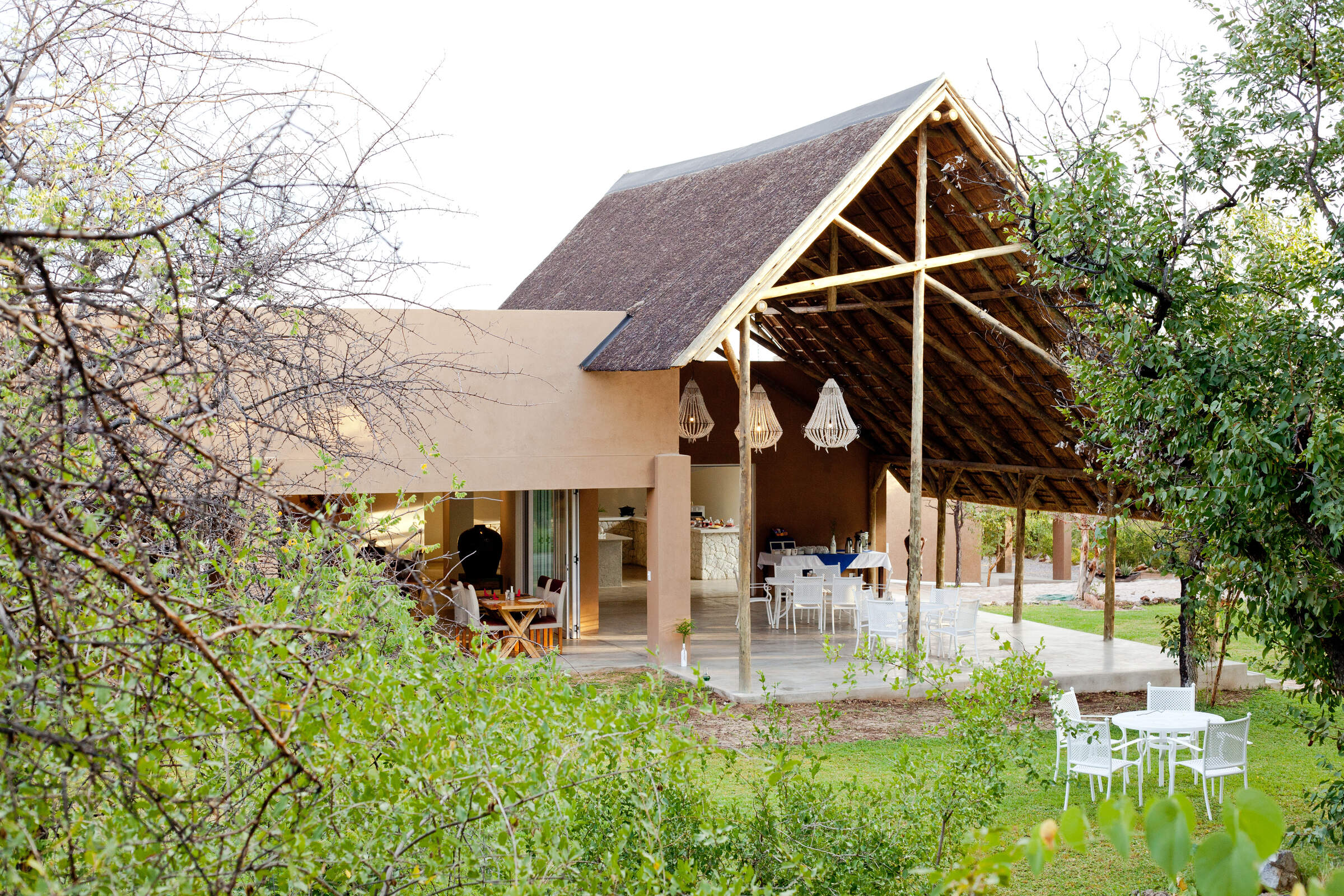
Toshari Lodge
Smart and professionally run, the hotel-style Toshari Lodge is well-placed for self-driving in Etosha National Park.
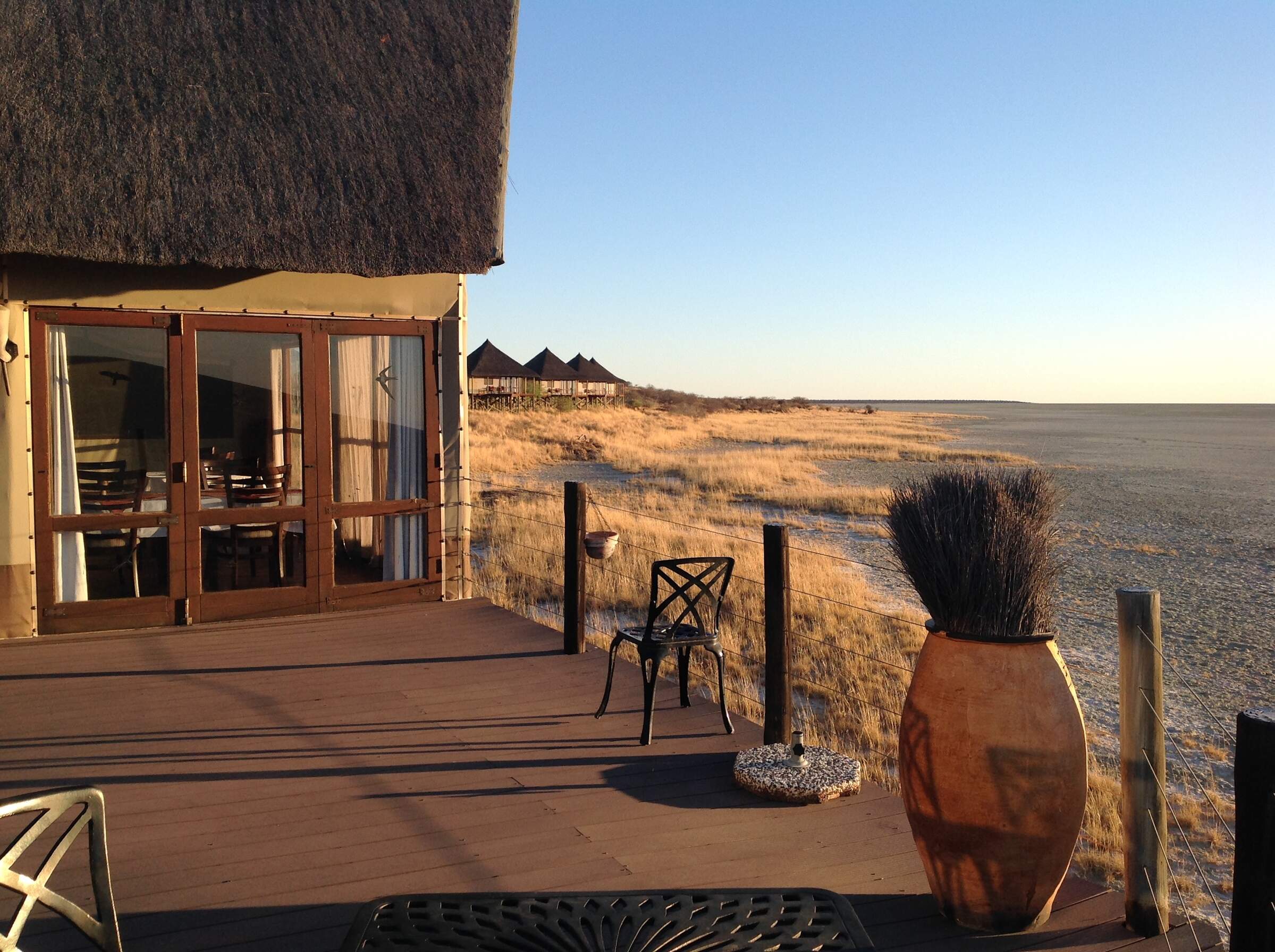
Onkoshi Camp
Onkoshi Camp is owned and run by Namibia Wildlife Resorts. Built on elevated wooden platforms it overlooks Etosha Pan.
Our traveller’s wildlife sightings in Etosha National Park
Etosha National Park is a wildlife enthusiast's dream, teeming with a diverse array of species.
Renowned for one of the largest populations of endangered black rhinos, it offers a unique chance to observe these majestic creatures.
Predators like lions, cheetahs and leopards, along with spotted hyenas, roam the park, each with unique hunting strategies. Designated a Lion Conservation Unit since 2005, Etosha is pivotal in protecting lion populations, ensuring their roars continue to resonate across the savannah.
The rare black-faced impala contributes to Etosha's rich wildlife tapestry, while zebras abound – including the mountain zebra in the park's western dolomite hills.
Click on a species below for more information on the top locations in Etosha for wildlife sightings, or see our interactive map showing the best locations for individual wildlife species in Namibia. Read how this wildlife survey works.

94% success

93% success

93% success

88% success

86% success

71% success

67% success

51% success

47% success

39% success

22% success

18% success

18% success

17% success

16% success

1% success

0% success
When to go to Etosha National Park
The best time to visit Etosha National Park is during the dry season, from May to October. During these months, the sparse vegetation and limited water sources make wildlife congregate around waterholes, offering excellent game-viewing opportunities. The temperatures are also more moderate, making it comfortable for safaris. While the rainy season (November to April) brings lush landscapes and migratory birds, it can be challenging for game viewing as animals are more dispersed. Roads can also become muddy and difficult to navigate. Each season offers a unique experience, so consider your priorities when planning your visit.
Jan
Feb
Mar
Apr
May
Jun
Jul
Aug
Sep
Oct
Nov
Dec
Etosha National Park in January
January marks the start of Etosha's main rainy season. The Etosha Pan, usually a vast expanse of white clay, may partially fill with water in good rainy season, attracting flamingos and other migratory birds. The landscape transforms into a lush green oasis, providing ample food for wildlife. Many animals give birth during this time, offering chances to see newborns.
While game viewing can be challenging due to dispersed wildlife and thick vegetation, birdwatching is excellent. Migratory species arrive and birds display breeding plumage. The Okaukuejo and Halali waterholes remain active, though less crowded than in dry months. Visitors should be prepared for occasional thunderstorms and potentially muddy roads, especially around Fischer's Pan.
The vibrant greenery and the presence of young animals make this a fantastic time for photography.
- Variable weather: hot, dry or humid with rain
- Occasional localised thunderstorms in Etosha
- Many animals with young; spectacular birdlife
- Wildlife dispersed, harder to see in Etosha
- Fewer tourists; low rates at most lodges
Our view
This is not a great time to visit
Weather in January
Etosha National Park in February
February is typically Etosha's wettest month. The Etosha Pan may be partially filled, creating a spectacular sight and attracting numerous waterbirds, including flamingos. The landscape is vibrantly green, with many animals raising their young.
While game viewing can be more challenging due to the abundance of water and vegetation, patient observers can spot a variety of wildlife, and share their sightings with fewer other visitors. Birdwatching is excellent, with many species in breeding plumage. The Fairy Tale Forest near Okaukuejo is particularly lush during this time.
Visitors should be prepared for occasional thunderstorms and potentially challenging road conditions, especially in the eastern part of the park. The lush environment and the presence of young animals provide a unique opportunity to witness the park's life cycle.
- Variable weather with occasional thunderstorms
- Bush feels alive; birdlife at its peak in Etosha
- Wildlife in Etosha dispersed, harder to spot
- A variety of newborn and young wildlife to see
- Few tourists; lowest rates for accommodations
Our view
This is not a great time to visit
Weather in February
Etosha National Park in March
As Etosha's main rains taper off, March offers a mix of wet and dry days. The landscape remains green and alive, with insects and smaller animals more easily seen, and many birds and animals are finishing raising their young.
The Etosha Pan may still hold some water, attracting flamingos and other waterbirds. Game viewing improves as the month progresses and animals start to herd together at permanent water sources. The Okaukuejo, Halali, and Namutoni waterholes become increasingly active.
Birdwatching remains excellent, with many migrant species still around. The Dolomite Camp area in the west offers good chances to spot rarer antelope species like black-faced impala.
The transition from wet to dry conditions provides a fascinating glimpse into the park's seasonal changes.
- Weather variable; thunderstorms less frequent
- Animals well-fed after months of abundance
- Wildlife in Etosha still dispersed, harder to see
- Migrant birds prepare to leave the park
- Few visitors; rates often low at Etosha lodges
Our view
A good time to visit, with pros & cons
Weather in March
Etosha National Park in April
April typically sees dry weather dominating in Etosha, with decreasing chances of rain. The landscape remains relatively green, and animals are in excellent condition with shiny coats. Increasing numbers of elephants seen as the herds begin to use the permanent water sources. The Okaukuejo waterhole becomes particularly active, especially in the evenings.
Photographers benefit from clear air and lush, green backdrop. Night drives from camps like Halali offer chances to see nocturnal animals. Birdwatching remains good, though some migratory species begin to depart, and the Fischer's Pan area can still be productive for waterbirds if there's residual water from the rainy season.
The shift towards drier conditions improves the chances of wildlife sightings.
- Becoming drier and cooler, especially at night
- Few visitors except around Easter; low rates
- Wildlife in Etosha still relatively spread out
- Migrant birds have largely left the park
- Fresh air and often green landscapes in Etosha
Our view
A good time to visit, with pros & cons
Weather in April
Etosha National Park in May
May marks the transition to Etosha's dry season. The landscape starts to dry out, but may still retain some greenery. Wildlife increasingly gathers around permanent water sources, making game viewing more predictable. The Okaukuejo, Halali, and Namutoni waterholes become excellent spots for animal observation – especially when floodlit after dark. Night drives offer opportunities to see nocturnal species like leopards and owls.
The Etosha Pan is usually dry, creating a stark, shimmering backdrop for photography. Birdwatching remains good, with 340 different species recorded in the park. The western part of the park, accessible from Dolomite Camp, offers chances to see rarer species like black rhino in a less frequently explored environment. The dry season's onset brings a new rhythm to the park's wildlife dynamics.
- Lovely weather: dry, warm days & cool nights
- Etosha drying out; landscapes still partly green
- Fantastic air clarity; ideal for photography
- Visitor numbers low; lodge rates still low
- Wildlife starting to gather at Etosha waterholes
Our view
A very good time to visit
Weather in May
Etosha National Park in June
June brings cooler temperatures with clear skies to Etosha. The landscape is drying out, encouraging animals like elephants, rhino and giraffe to waterholes. This makes for excellent game viewing, especially at popular spots like Okaukuejo and Halali. Night drives on private Etosha reserves, like Ongava, are particularly productive.
The dry Etosha Pan creates mirages and a unique backdrop for photography, perhaps a lone ostrich crossing the stark salt crust. Birdwatching remains rewarding, with bright colours standing out in drier vegetation. The Namutoni area, with its fort, provides a mix of wildlife viewing and historical interest.
Cooler temperatures making walking safaris enjoyable in Etosha’s adjacent wildlife reserves, like Etosha Heights.
- Clear days, cold nights in Etosha National Park
- Great air quality; perfect for photographers
- Moderate lodge rates; shoulder season begins
- Wildlife gravitates to Etosha's waterholes
- Some greenery remains in parts of the park
Our view
A very good time to visit
Weather in June
Etosha National Park in July
July is prime time for wildlife viewing in Etosha as animals, in particular predators, are more active later in cool mornings and earlier in the afternoons. The dry landscape concentrates animals around waterholes, making for predictable and spectacular sightings. The Okaukuejo waterhole is particularly active, especially at night when black rhinos often visit and jostle for position with elephants.
The stark white Etosha Pan creates a unique backdrop for photography, with heat mirages shimmering on the horizon.
The dry season's peak offers unparalleled wildlife viewing opportunities. Game drives along the southern edge of the pan offer excellent opportunities to see large herds of zebra, wildebeest, and antelope. Birdwatching is rewarding around waterholes, with species like eagles and vultures frequently sighted.
- Dry days, crisp nights; excellent for stargazing
- European holidays begin; more families visit
- Peak season; high rates, lodges often full
- Fantastic wildlife watching
- Animals concentrate around Etosha waterholes
Our view
A very good time to visit
Weather in July
Etosha National Park in August
August is the height of the dry season in Etosha, offering excellent wildlife viewing opportunities. Animals concentrate around waterholes, with a variety of predators and prey often seen at any one time. Night viewing at the more secluded yet floodlit waterhole at Halali is often rewarded with sightings of shyer leopard and porcupine.
The dry season's intensity brings wildlife into sharp focus. The open plains along the edge of the Etosha Pan are good for seeing large herds of zebra and wildebeest, and often cheetah too. Predators often lie in wait for their prey near waterholes offering sightings of hunts to patient game viewers.
Birdwatching remains rewarding, with raptors like bateleur and martial eagles frequently sighted.
- Dry days, cold nights; clear skies in Etosha
- Busy by Namibian standards; family rooms full
- Peak season; high rates, advanced booking needed
- Excellent wildlife viewing in Etosha National Park
- Large herds gather at Etosha's waterholes
Our view
Fantastic: the very best time to visit
Weather in August
Etosha National Park in September
September offers peak wildlife viewing in Etosha. The extreme dry conditions concentrate animals around waterholes, making for spectacular sightings of multiple species. The Okaukuejo waterhole is particularly active, with elephants, rhinos, and lions frequently visiting.
The last months of the dry season showcases the park's wildlife at its most concentrated. The stark landscape of the dry Etosha Pan creates dramatic backdrops for photography. Game drives along the pan's edge offer chances to see large herds of zebra, springbok, and oryx as well as lion prides and cheetah. The western part of the park, accessible from Dolomite Camp, often provides a more exclusive safari experience with good rhino sightings. Night drives on adjacent private reserves like Hobatere offer opportunities to see nocturnal animals such as genets and aardwolves.
Birdwatching is excellent, with species standing out clearly in the sparse vegetation.
- One of the best months for Etosha wildlife viewing
- Warm days, cold nights; temperatures rising
- Colourful birds stand out against a starker backdrop
- Etosha's waterholes teem with diverse wildlife
- High season; book Etosha accommodations early
Our view
Fantastic: the very best time to visit
Weather in September
Etosha National Park in October
October is typically Etosha's hottest and driest month, offering excellent wildlife viewing. The intense heat and dry conditions heighten the drama of wildlife interactions.
Animals concentrate heavily around waterholes, with spectacular sightings common at Okaukuejo, Halali, and other permanent water sources. Patient photographers spending time at waterholes are richly rewarded. Large herds of zebra, wildebeest, and various antelope species can be seen along the pan's southern edge. Predator sightings, including lions and cheetahs, are frequent as they target gathered and weakened prey. Thinning vegetation at Namutoni makes it easier to spot the dimunitive Damara dik dik – Namibia’s smallest antelope.
Birdwatching remains rewarding, with raptors and colourful rollers often spotted.
- Peak wildlife-viewing month in Etosha National Park
- Hot and dry; Etosha feels like a desert
- Air can be hazy with dust in some areas
- Peak time; expect high season rates in Etosha
- Etosha lodges often full, especially early October
Our view
A very good time to visit
Weather in October
Etosha National Park in November
November marks the transition to Etosha's rainy season, bringing change to the landscape and wildlife behaviour. Early rains may green the vegetation, dispersing some wildlife from waterholes. However, game viewing remains good, especially around permanent water sources like Okaukuejo and Halali’s floodlit waterholes.
The first rains can create dramatic scenes as animals celebrate the water's arrival, with plains game often giving birth. Predators often give birth at this time too, to coincide with the time of plenty. Migratory birds begin to return, and birds take to the skies in spectacular aerial shows as they catch more active insects.
Seasonal wildflowers and dramatic, thundery skies add interest to photographic compositions. Summer rains bring reptiles such as tortoises and chameleons out into the open. The onset of rains brings a refreshing change to the park's ecosystem.
- Variable month in Etosha, depending on rains
- If rain comes, explosion of vegetation and life
- Baby animals often born around mid-month
- Shoulder season; mid-range rates offer value
- Showers more likely later in the month in Etosha
Our view
A good time to visit, with pros & cons
Weather in November
Etosha National Park in December
December is often a drier month before January sees the main rainy season begin. The landscape begins to show green from November's rain and the odd rainshower in December. Many animals have young, so there’s the chance to watch frolicking calfs and lambs.
The combination of rainfall and sunshine rejuvenates the park's landscapes and wildlife. While wildlife disperses away from the waterholes with increased water availability, game viewing remains good, especially on the open plains along the southern edge of Etosha Pan. Birdwatching is excellent, with many species in breeding plumage and displaying for mates as well as migrant species arriving.
Visitors should be prepared for occasional thunderstorms and potentially muddy roads, especially in the eastern part of the park.
- Hot, sometimes humid with cooling showers
- Landscapes green where rain has fallen in Etosha
- New life and energy in the park's ecosystem
- Excellent for birdwatchers in Etosha
- Larger animals may be harder to spot
Our view
This is not a great time to visit
Weather in December
Etosha National Park: In detail
Etosha National Park
Translated as the “Place of Mirages”, “Land of Dry Water” or the “Great White Place”, Etosha is an apparently endless pan of silvery-white sand, upon which dust-devils play and mirages blur the horizon.
The surrounding Etosha National Park – one of Africa's best game reserves – protects both this vast shallow bowl, the size of Holland, and the surrounding bush. It excels during the dry season when huge herds of animals can be seen amidst some of the most startling and photogenic safari scenery in Africa. For most of the year, the park’s many waterholes are ideal places just to sit quietly, observing and photographing game from the comfort of your car. Follow the rhythm of the animals: rise at dawn to watch them feed in the cool morning; relax during the midday heat; and venture out on safari again in the late afternoon.
Etosha is so special because of the concentration of waterholes that occur around the southern edges of the pan. As the dry season progresses, these increasingly draw the game. In fact, the best way to watch animals in Etosha is often just to sit in your vehicle by a waterhole and wait.
Etosha was really designed for visitors on self-drive safari holidays; that's how most people visit here, helped by the park's good roads and signposts. If you prefer to be guided around by a professional safari guide, then it's usually better to stay in one of the private camps or lodges.
Wildlife of Etosha
The more common herbivores include elephant, giraffe, eland, blue wildebeest, kudu, gemsbok, springbok, impala, steenbok and zebra. The most numerous of these are springbok, which can often be seen in herds numbering thousands, spread out over the most barren of plains. These finely marked antelope have a marvellous habit of pronking, either (it appears) for fun or to avoid predators. It has been suggested that pronking is intended to put predators off in the first place by showing the animal’s strength and stamina; the weakest pronkers are the ones predators are seen to go for.
Elephant are very common, though digging for water below the sand wears down their tusks, so big tuskers are very rare. Often large family groups are seen trooping down to waterholes to drink, wallow and bathe. The park’s population has been under scientific scrutiny for the infrasonic noises (below the range of human hearing) which they make. It is thought that groups communicate over long distances in this way.
Among the rarer species, black rhino continue to thrive here, and the floodlit waterholes at Okaukuejo and Halali provide two of the continent’s best chances to observe this aggressive and secretive species. In recent years, about a dozen white rhino have been introduced.
Predators in Etosha
There have been several attempts to introduce wild dog here, but so far no success. The usual problem has been that the dogs don’t know to avoid lion, which have subsequently killed them for no apparent reason.
Also found in the park are both spotted and brown hyenas, together with silver jackal (or cape fox), and the more common black-backed jackal – many of which can be seen in the late evening, skulking around the camps in search of scraps of food.
Birds of Etosha
Amongst the birds of prey, bateleur, martial, tawny and Wahlberg’s eagles are fairly common, as are black-breasted and brown snake eagles. Pale chanting goshawks are more often seen than the similar Gabar or the smaller little banded goshawk. The list of harriers, falcons and kestrels occurring here is even longer, and worthy of special mention are the very common rock kestrels, and the unusual red-necked and particularly cute pygmy falcons, which are less readily seen. The impressive peregrine falcon and Montagu’s harrier are two of the rarer summer migrants.
Lappet-faced and white-backed vultures are common here, outnumbering the odd pair of white-headed or hooded vultures. Palmnut vultures are occasionally seen in the east of the park.
The number of large birds stalking around the plains can strike visitors as unusual; invariably during the day you will see groups of ostriches or pairs of secretary birds. Equally, it is easy to drive within metres of many kori bustards and black korhaans, which will just sit by the roadside and watch the vehicles pass. In the wet season, blue cranes, both beautiful and endangered, are common here: Etosha is worth visiting in January and February for them alone. Other specialities of the park include violet wood hoopoe, white-tailed shrike, bare-cheeked and black-faced babblers, short-toed rock thrush, and a pale race of the pink-bellied lark.
History of Etosha National Park
In recent years, there has been persistent and increasing talk of developing a “people’s park” – designed to link Etosha with the Skeleton Coast. If this were to come to fruition, it would cross the concessions currently held by Hobatere, Etendeka and Palmwag, creating a 20km-wide corridor to allow free movement of wildlife between the two national parks.
Landscape of Etosha
The pan has probably changed little over time. It is roughly 110km from east to west and 60km from north to south, covering an area of 6,133km2 (around a quarter of the park’s surface) with flat, silvery sand and shimmering heat. If the rains to the north and east have been good, then the pan will hold water for a few months at the start of the year, thanks mainly to the Ekuma River and the Omuramba Ovambo. Only very rarely does it fill completely.
In the rest of the national park, beyond the pan, the terrain is generally flat with a variety of habitats ranging from mopane woodland to wide, open, virtually treeless plains. In the east, around Namutoni, the attractive makalani palms, Hyphaene ventricosa, are found, often in picturesque groups around waterholes. The small, round fruit of these palms, a favourite food of elephants, is sometimes called vegetable ivory because of its hard white kernel. In the west, one of the more unusual areas is the Haunted Forest, Sprokieswoud in Afrikaans, where the contorted forms of strange moringa trees, Moringa ovalifolia, form a weird woodland scene. Further west still, the environment becomes hillier, with mopane woodlands dotting the open savannah: very pretty but with few obvious centres for the game to congregate.
Map of Etosha National Park
Choices for where to stay in Etosha National Park
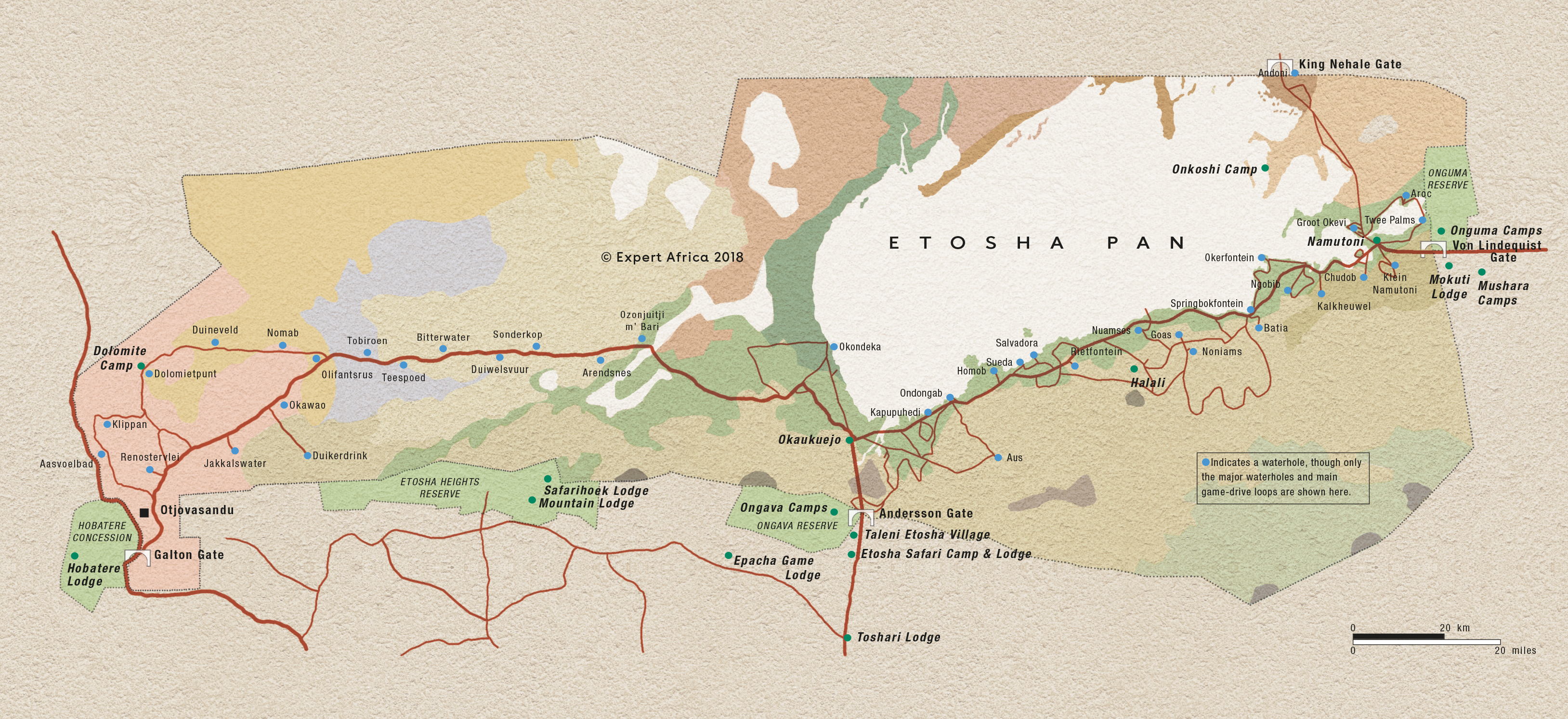
Etosha National Park: Safaris
Imagine embarking on a holiday where the untamed wilderness of Etosha National Park becomes your playground.
This Namibian gem offers a superb safari experience, where every sunrise brings the promise of thrilling wildlife encounters – and the adventurous can drive themselves. To expand your Namibia horizons, consider adding in the rugged beauty of Damaraland, the serene landscapes of the Namib-Naukluft, or the cultural richness of the Caprivi Strip.
Etosha National Park boasts a variety of popular safari suggestions tailored to different tastes. Caracal Self-drive Safari offers the freedom to explore at your own pace, while the Hoopoe Fly-in Safari provides a bird's-eye view of the park's stunning terrain. For a blend of both, the Dune Lark Fly & Drive Safari is an excellent choice. Other notable options include the Black Wildebeest Self-Drive Safari and the luxurious Bateleur Fly-In Safari.
These are just ideas; we'll always tailor-make a trip for you, so do give us a call.
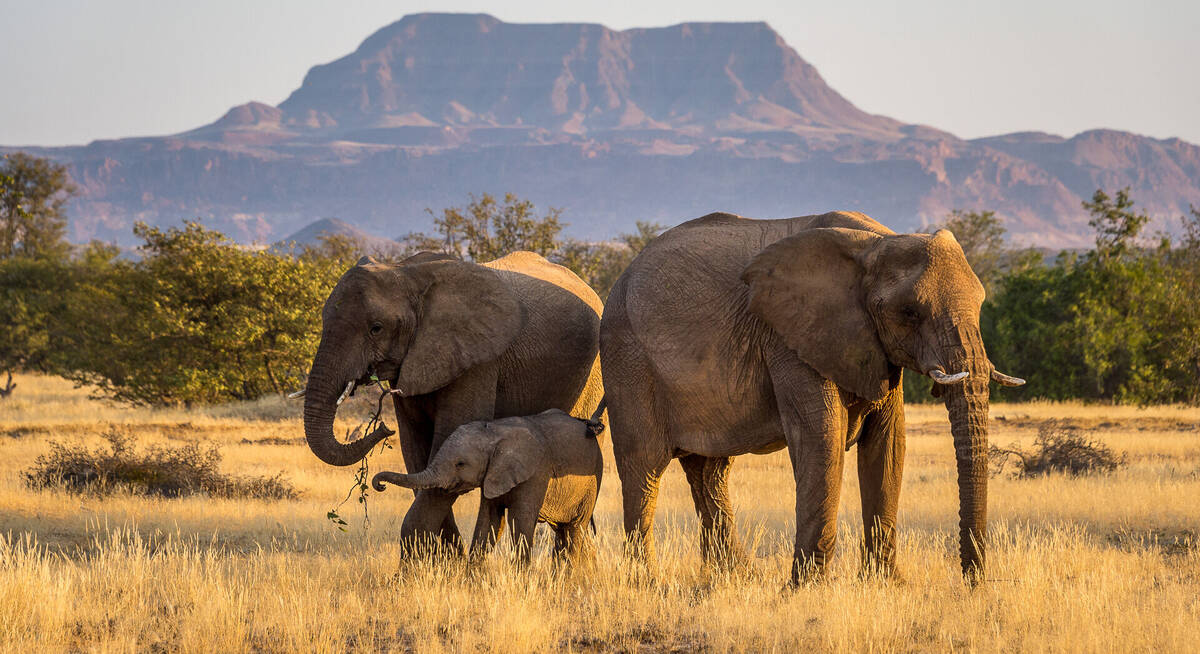
Hoopoe Fly-in Safari
11 days • 4 locations
WINDHOEK AIRPORT TO WINDHOEK AIRPORT
This relaxed fly-in safari reveals Namibia at its best. Generous timings and a wide choice of activities help travellers to enjoy the best of the country’s most spectacular areas.
US$7,980 - US$10,310 per person

Caracal Self-drive Safari
14 days • 8 locations
WINDHOEK AIRPORT TO WINDHOEK AIRPORT
The quintessential Namibian self-drive adventure exploring the highlights from Sossusvlei and the Namib Desert to Damaraland’s wilderness and a safari in Etosha. A great mix of accommodation and excellent value.
US$3,310 - US$4,150 per person

Pygmy Mouse Self-drive Safari
18 days • 10 locations
WINDHOEK AIRPORT TO VICTORIA FALLS AIRPORT
A truly epic southern African self-drive safari adventure from Namibia’s mountains and deserts, along the lush Caprivi Strip to Botswana and Victoria Falls in Zimbabwe, staying at luxury lodges throughout.
US$8,730 - US$10,430 per person
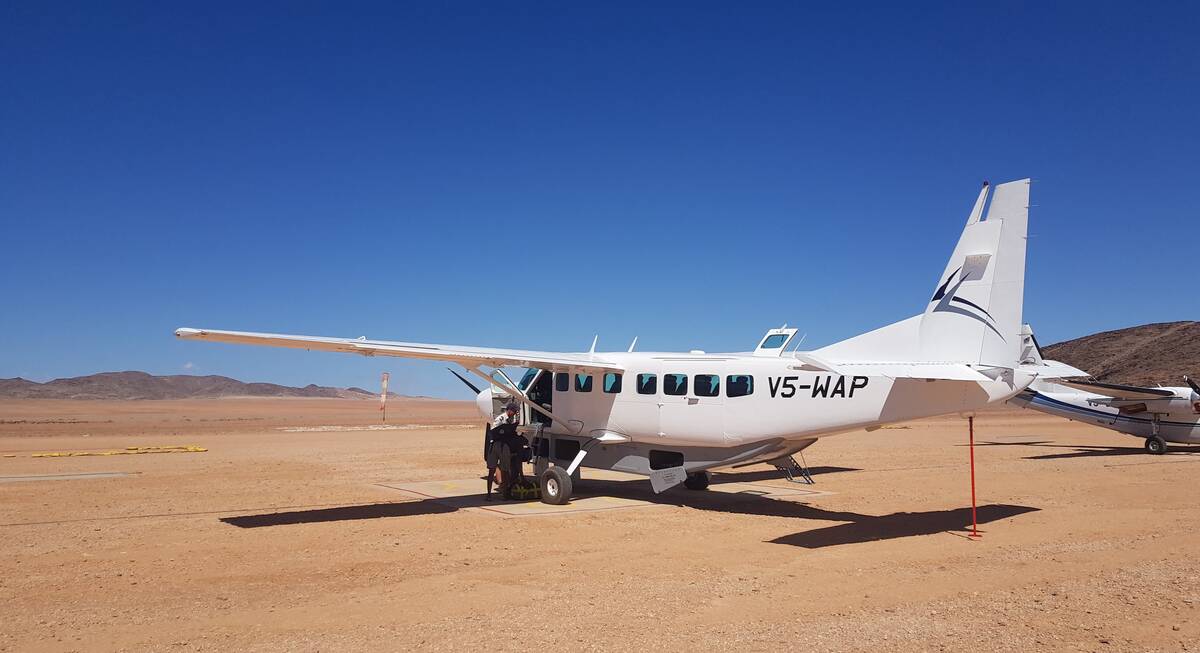
Flamingo Fly-in Safari
6 days • 3 locations
WINDHOEK AIRPORT TO WINDHOEK AIRPORT
Short on time but big on experience, this luxury fly-in safari takes in Sossusvlei’s famous dunes and Etosha National Park’s captivating wildlife with stays at two excellent luxury lodges.
US$5,820 - US$6,790 per person
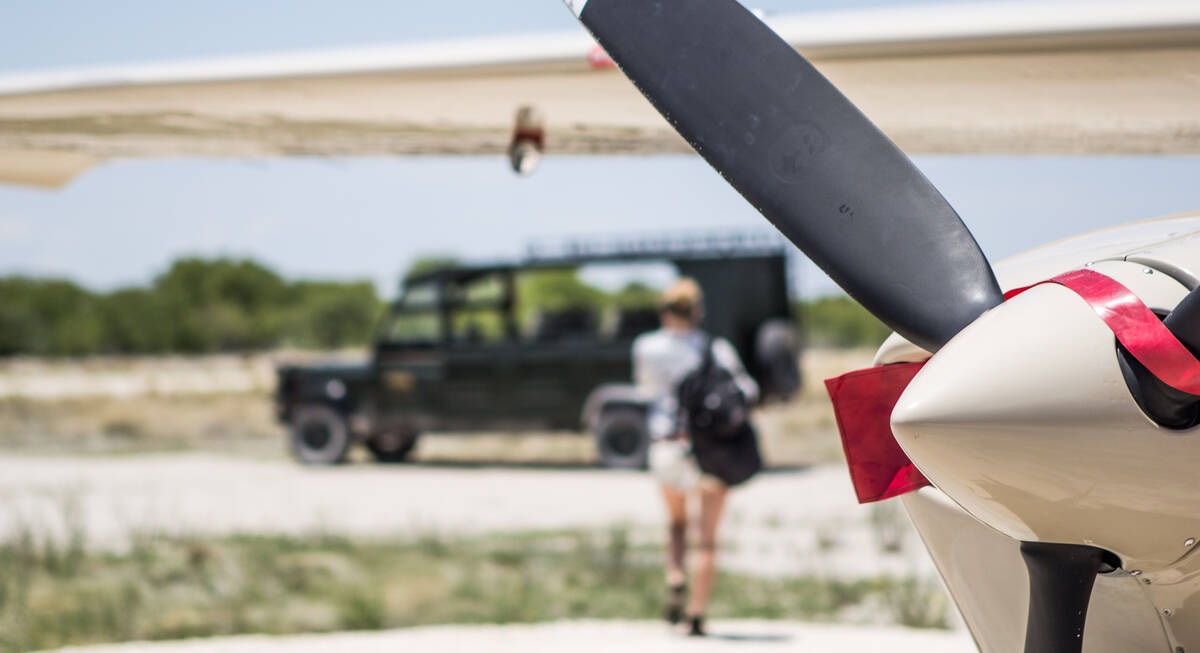
Bateleur Fly-in Safari
7 days • 4 locations
WINDHOEK AIRPORT TO WINDHOEK AIRPORT
Classic fly-in Namibian safari staying at excellent camps. Explore Sossusvlei’s dunes and track Damaraland’s desert elephants before a safari in Etosha. Incredible scenery, good wildlife viewing and authentic cultural experiences.
US$7,190 - US$9,240 per person
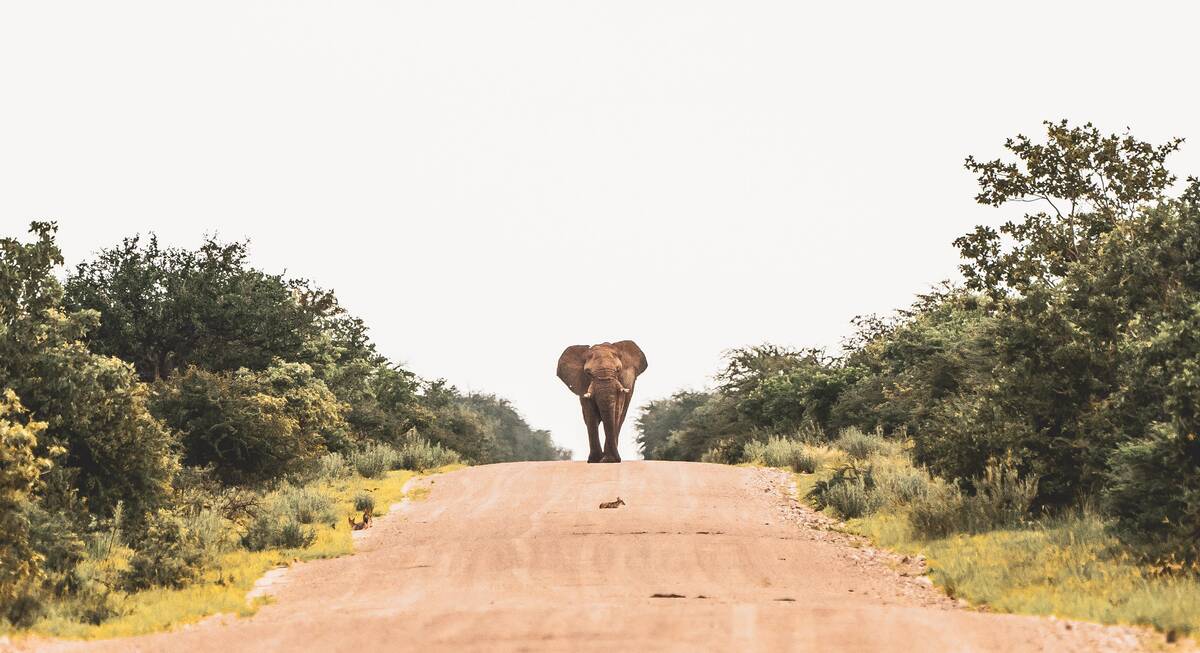
Black Wildebeest Self-drive Safari
19 days • 10 locations
CAPE TOWN AIRPORT TO WINDHOEK AIRPORT
Journey from South Africa’s cosmopolitan Cape Town to central Namibia’s Okonjima Nature Reserve during this self-driven safari. The route passes through a stunning variety of landscapes, offering access to this beautiful continent’s rich diversity.
US$4,170 - US$4,280 per person

Cape Fox Guided Safari
13 days • 7 locations
WINDHOEK AIRPORT TO WINDHOEK AIRPORT
A classic clockwise circuit around Namibia’s northern highlights with a private guide and vehicle. We can’t think of a better way to see more in this timeframe.
US$11,520 - US$13,410 per person

Dune Lark Fly & Drive Safari
14 days • 8 locations
WINDHOEK AIRPORT TO WINDHOEK AIRPORT
A combination fly-in self-drive exploration of Namibia, with quick, easy and scenic flights in and out of Sossusvlei before a classic road trip adventure of the country’s rugged north.
US$5,390 - US$5,790 per person

Namaqua Chameleon Self-drive
12 days • 7 locations
WINDHOEK AIRPORT TO WINDHOEK AIRPORT
A classic 12-night self-drive adventure around the highlights of eastern and northern Namibia taking in Sossusvlei, Swakopmund, Damaraland, Etosha and a final stop at Okonjima. Comfortable lodges and great value.
US$4,080 - US$5,160 per person

Pelican Fly & Drive Safari
10 days • 5 locations
WINDHOEK AIRPORT TO WINDHOEK AIRPORT
A unique itinerary visiting the must-see highlights combining the adventure of a classic Namibian self-drive with the ease and spectacular views of a fly-in safari.
US$7,580 - US$8,630 per person

Brown Hyena Self-drive
14 days • 8 locations
WINDHOEK AIRPORT TO WINDHOEK AIRPORT
The perfect trip for those who want to mix the adventure and freedom of a self-drive with some of our favourite luxury camps in Namibia and a great mix of activities.
US$9,020 - US$9,940 per person
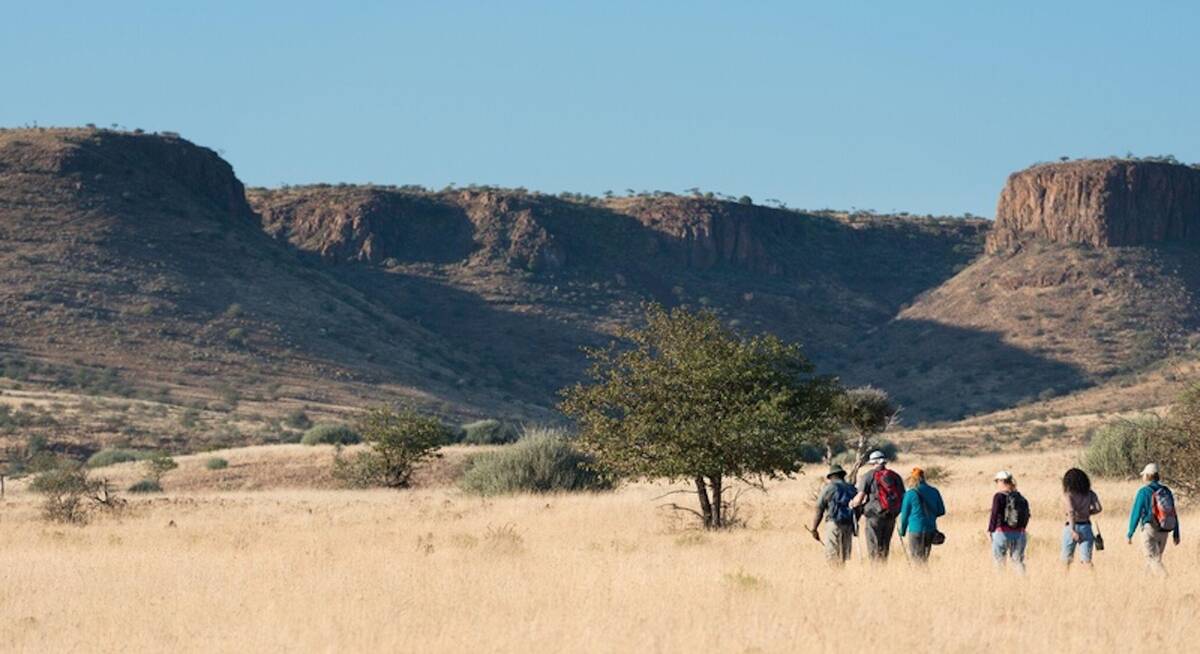
Chongololo Self-drive Safari
21 days • 11 locations
WINDHOEK AIRPORT TO WINDHOEK AIRPORT
This self-drive safari focuses on the best walking experiences in Namibia. Get your boots ready for the apricot dunes of the Namib Desert and the ancient hills of Damaraland.
US$9,020 - US$9,960 per person
Our best 30 lodges and safari camps in and around Etosha National Park
Etosha National Park offers an array of places to stay, from the simplest campsite to the most luxurious of safari lodges.
Scattered both within and around this iconic wildlife park, these lodges and camps provide strategic vantage points for wildlife enthusiasts eager to witness the park's diverse fauna.
Within the park, the most sought-after locations include the central hub of Okaukuejo, renowned for its floodlit waterhole, to the serene Halali, and the eastern gateway of Namutoni. More upmarket is the park's own Dolomite Camp.
Fringing the park's boundary, many lodges sit within their own private reserves, including the family-friendly Mushara Bush Camp, Onguma Tented Camp and the exclusive Ongava Lodge.
Whether you seek rustic simplicity or luxurious comfort, there are plenty of options to consider within a range of budgets for an unforgettable safari adventure.

Okaukuejo Camp
Set within Etosha National Park, Okaukuejo Resort is a large camp with a productive, floodlit waterhole.

Halali Camp
The smallest of Etosha's erstwhile restcamps, overlooking its own floodlit waterhole, Halali has a superb location near the centre of Etosha Pan.

Mushara Bush Camp
The family-friendly Mushara Bush Camp offers great value and is an excellent base from which to explore Etosha National Park.

Ongava Lodge
With fantastic views over a private reserve bordering Etosha, the smart Ongava Lodge offers driving and walking safaris on the reserve, and guided drives in Etosha.

Ongava Tented Camp
Set around a waterhole on a private reserve, the small Ongava Tented Camp combines understated comfort with activities that include walks and night drives.

Onguma Tented Camp
Onguma Tented Camp is a lovely, little tented camp which centres around an attractive waterhole a short drive from the Von Lindequist Gate to eastern Etosha.

Mushara Lodge
Close to the eastern entrance to Etosha, the comfortable Mushara Lodge is well-placed for exploring the park in your own vehicle or on a guided drive.

Dolomite Camp
Opened in 2011, Dolomite Camp allows visitors access to the far west side of Etosha National Park, which was previously off limits to most visitors.

Onguma Bush Camp
For great wildlife viewing without breaking the bank, the affordable and understated luxury of Onguma Bush Camp could be perfect.

Namutoni Camp
Centred on an old fort, the government run Namutoni Camp is located just inside Etosha National Park, close to Fisher's Pan.

Hobatere Lodge
To the west of Etosha National Park, on the edge of Damaraland, Hobatere Lodge offers good game-viewing on its own reserve.

Mushara Outpost
Intimate and luxurious, Mushara Outpost is well-placed on a private reserve to explore nearby Etosha National Park on your own or on a guided drive.

Looking for inspiration on where to travel next?
Visit our trip chooser to explore your options and find inspiration for your perfect African adventure
Inspire meFrequently Asked Questions
Etosha National Park FAQs
Most visitors have questions about planning a trip to Etosha National Park, whether it’s about how to get there, how long to stay, or the feasibility of self-drive safaris. Safety concerns and packing tips are also frequently discussed. To ensure a smooth and enjoyable experience, we recommend browsing through our list of frequently asked questions to gather all the essential information you need for your adventure.
